November, December and January's Book Club Review of “Mycelium Running: How Mushrooms Can Help Save the World”.
This post offers a review of Mycelium Running: How Mushrooms Can Help Save the World
I give this book a 8.4 out of 10.
If you would have asked me what I think of this book a decade ago I would have said 10 out of 10! However, I have learned a lot about soil science (and the various psychological warfare operations used by statist regimes to hyper-centralize control/material wealth) since I first read this book. Now that I look at it with fresh eyes, I see things a bit differently than Paul with regards to his stance on Big Pharma, and I no longer vibe with his tendency to generally demonize fire as the enemy of forests. Nor do I appreciate his proclivity to utilize the spectre of “terrorist boogie men” to lend credence to the importance of mycological works in the book. More on this later…
On the positive side of things, I will say that Paul Stamets’ “Mycelium Running: How Mushrooms Can Help Save the World” invites the reader to look at the world through a mycocentric lens and offers valuable techniques for cultivating fungi species that empower the regenerative gardener and the food forest designer to stack a great many functions.
In the introduction below I appreciate how the prevalence of mycophobia in modern industrial civilization is touched upon and I also appreciate how the critically important connection between fungi and forest health is explored.
Then where I have highlighted in blue, you can see some of the more popular government psyop fear propaganda terms. Now (as you will see further on in the review of this book below) his usage of those terms is used in the context of depicting the US government and military industrial complex as having our best interest at heart (and as being entities we should look to for protection against weaponized pathogens).
I do acknowledge that through learning to respectfully forage for and/or cultivate medicinal fungi, we become empowered as individuals to embrace health sovereignty via having access to immune system optimizing compounds that can help us defend against weaponized pathogens, I just do not agree with Paul that we should look to the government or big pharma to help us with that (more on that later).
Getting back to the good stuff (highlighted in green) in the page above I appreciate how the amazing ability of some fungi to break down toxic chemicals in the soil or water was touched on and I especially like how he talked about how important forging alliances with fungi is (in the context of food forest design and regenerative gardening).
Getting back to exploring the roots of Mycophobia hinted at above in the line about mushrooms being “reviled by some”…
Mycophobia is defined as the irrational fear of fungus and mold. It is the idea that any fungus and its environment is toxic. We can understand why someone could be mycophobic in our society when we see that for generations, we've pushed mushrooms to the dark corners of our culture. Sure, some are toxic, but fearing all mushrooms and avoiding educating ourselves about their values as well as their risks is a missed opportunity. Mushroom foraging, cultivation, and research can promote self-sufficiency, sustainability, palate expansion, improved ecosystems, and much more. Furthermore, this fear of mushrooms may be worth questioning. Fellow Mainer and ecological expert Arther Haines brought up a good point in a blog post:
We've been told mushrooms can kill us if we ingest the wrong species (which is true). So, many avoid culinary interaction with all wild species because some are poisonous. How is this different from plants, or wild animals, or even people? Aren't some of those dangerous as well? How is this different from farmed foods (people die every year from eating cultivated produce). Over 300,000 people are hospitalized each year in the US eating 'safe food'. Knowing this, are you going to avoid store-purchased food? Probably not. We all know some car accident horror story. Does that mean you will avoid riding in cars?
Mycophobia may be a relic centralized in (and flowing out from) the English-speaking industrialized world. British naturalist William Delisle Hay said in 1887, “Fungophobia is very curious. If it were human – that is, universal – one would be inclined to set it down as an instinct and to reverence it accordingly. But it is not human – it is merely British.” Well I can tell you that same mentality was imported by the British to here on Turtle Island as well. Many here face financial troubles and cannot put food on the table, and they have access to free species identification info, yet they are afraid to venture into the forest and collect one of the several easy to identify, nutrient dense and highly medicinal (free) mushrooms that grow there.
According to ecologist and author Dr. Andy Letcher, British-based mycophobia may be a product of industrialization, when a mass movement to cities disconnected large swathes of the population from the land. “You take people off the land,” he writes, “and they lose what oral knowledge they have. All it takes is one break in the link.”

It should be emphasized however, that Mycophobia is not an innately European trait, as some of the largest markets for foraged mushrooms are in Italy, France, Spain, and Switzerland. These cultures also invest in educating their public about the values and potential dangers of fungi through written resources. A universal fear of fungi is also not an indigenous tradition either, as native peoples across the world and even here on Turtle Island known and used fungi for food and medicine likely for centuries, and give offerings when removing them from the landscape.
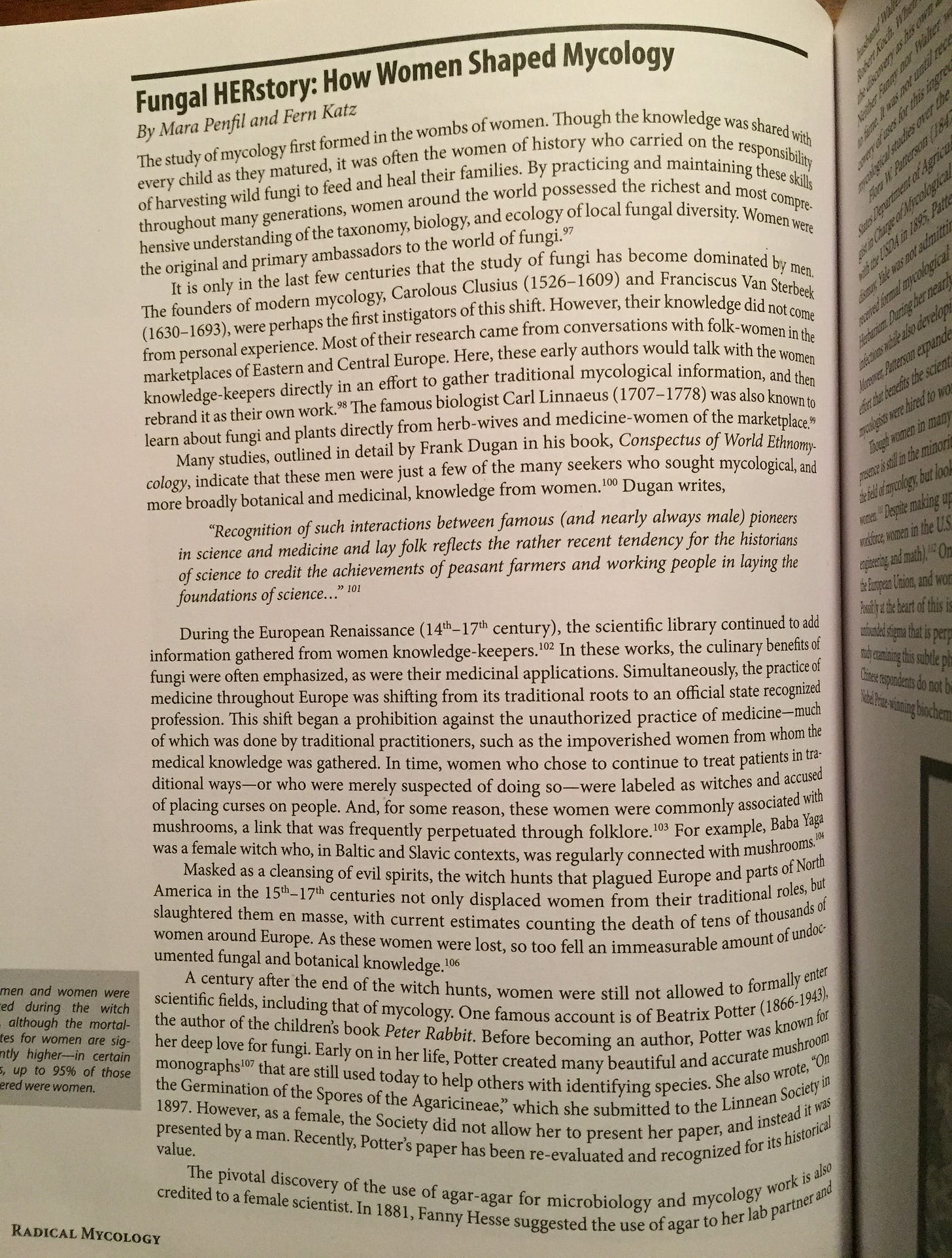
Fungi and mushrooms in particular have physical and symbolic connections with death, rebirth, natural health, and natural decay. These cyclical relationships, particularly in cultures that fear the uncertainty of nature and death, make room for avoidance and even disdain or disgust. But mushrooms are not just harbingers of death - some are fantastic for the body and mind, they are also good for the environment, can inspire art and fashion, and may one day replace building materials on Earth and beyond.
Some biased mental gymnastics may be going on in the cultural hive mind. As Peter McCoy postulates in Radical Mycology: “...I find the degree to which certain societies fear fungi not only intriguing but, upon deeper analysis, reflective of that culture’s relationship with the world--a more cryptic and darker expression of human-fungal relations.”
“Fungi are the antithesis of civilization, born of wild mycelium that is free of social constraints and defiant of imposed hierarchies.”
- Peter McCoy, Radical Mycology.
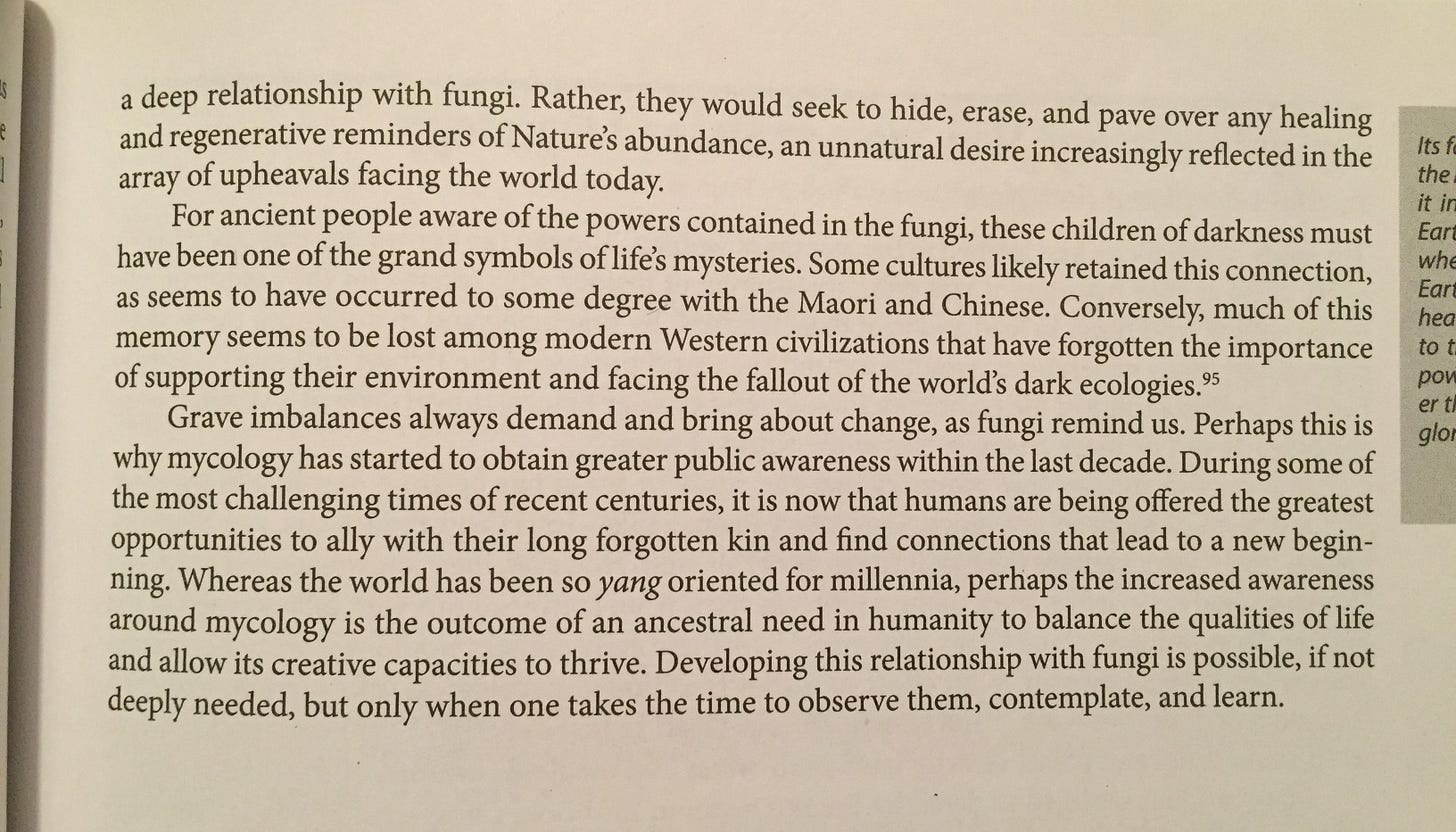
Okay back to Mycelium Running..
I agree that our Fungal elders can help us connect to nature in profound ways. As I touched on in my most recent Mounsey Minute segment choosing to interact with, touch and ingest fungi (and plants) is one of the types of biological stimulus I talked about towards the end of my Biocultural Refugia presentation regarding ways through which we can awaken ancestral memories through connecting with the same plants and fungi that our indigenous ancestors would have.
Fungi are the ultimate alchemists in transforming death into the potential for new life again, through allying with these beings we can potentiate our efforts as regenerators of ecosystems, producers of abundance and key stone species in our bioregion.
Mycoforestry (as Paul describes it) offers another powerful dimension to syntrophic agroforestry and food forest design and mycormediation is something that can allow us to lend our hands to help degraded places heal.
I agree with what the author says in the page below pertaining to how without fungi all ecosystems would fail and I appreciate how he pointed out how empowering teaming up with fungi in the garden or food forest can be. However, I disagree with the part where he says “our political and biotechnological policies may determine our future”.
We are not passive victims (unless we choose to be), we are co-creating this experience and we can divest from the statist regimes that have us on the current trajectory and instead choose a different path as individuals and communities.
I agree that knowing how to custom pair fungal species with plant communities may be critical for our survival as we live in a time of weather warfare tech, extreme industrial deforestation destabilizing hydrological cycles and times when stacking functions by learning to turn available free materials into nutrient dense food may give us the edge to remain adaptable and resilient when plant crops fail. Learning to integrate medicinal and gourmet fungi into our garden designs can increase our emergency preparedness, while also simultaneously increasing the resilience of our innate immune system and enriching our culinary creativity.
As I explored in the post linked below, I agree that the Earth is indeed a sentient being and that mycelium may indeed represent a functional aspect of her equivalent of a neurological network.
Listening To The Heartbeat Of Our Mother Earth
Now that the votes appear to be slowing down for the polling post I recently shared, I wish to share my own thoughts on and opinions relating to the question I posed in the post below.
Fungi are indeed ecosystem engineers and key stone species, and through strategically introducing and feeding them in our early successional ecosystem state projects we can accelerate the soil building process and symbiotic resilience of the plants and trees within that design so that we get more food and medicine, more reliably and we can leave a legacy of enriched biodiversity behind when we are no longer stewarding that land.
For more insights into the amazing intelligence of our fungal relatives I suggest reading this book:
Here is a presentation by that author for those that want to get a feeling for what his work is about:
I do not like the idea presented by Paul in the page above. It feels like a continuation of the same exploitative, anthropocentric and hubristic relationship that fuels the transgenic agriculture industry, the pharma food biotech industry and the big tech industrial complex.
The prediction above influenced a recent Star Trek series (for more info watch):
I also appreciate the part about nature tending to build on her successes. Indeed, we can see that truth expressed in the ubiquitous fractal geometry we can observe all around (and within us).
Here are some images that show you what I am talking about:
and just for fun, here is some cosmic ambiance incase you wanna listen to something while you read:
I encourage you to pay particular attention to the part of the page above where Paul mentions how the occurrence and decomposing activities of specific fungi can set a distinctive course for species distribution in that habitat down the road and how we can orchestrate and steer that succession of species through working with fungi.
When we are talking about severely degraded habitats (such as where I live in southern Ontario) being able to lend our hands to steer and accelerate the ecological succession of these places to move towards functional climax forest habitat (that contains a high concentrations of trees that produce ideal food and medicine for humans). We can use viable and extremely resilient food production models such as the one in the video below and build on them stacking mycological knowledge and more medicine species from our local area.
The sections of the page I underlined in green above serve to highlight aspects of biology, behavioral characteristics and untapped potentials of fungi which can be extremely empowering to the regenerative gardener or food forest designer.
The parts underlined in blue show that similar to using the spectre of ‘big bad scary foreign terrorists’, Paul appears to be in the habit of using the spectre of “climate change” and “global warming” narratives to drive home the value of fungi based medicines and remediation. That is completely unnecessary and counter-intuitive for it lends legitimacy and momentum to carboncentric anthropogenic climate change government propaganda that would try to convince us that being crammed into “smart cities” and keeping our ‘dirty human hands’ out of nature is what we should do to ‘save the planet’.
The lesser known morphological terms covered above are helpful for anyone looking to work with fungi in the kitchen, garden or forest. I also think it is important to keep in mind what he pointed out about how most of the fungal organism is in fact underground (and/or occurring within the myceliated substrate) and that the mushrooms is like the apple on the tree (only representing a reproductive organ of the being, and not its whole body).
In the page below I highlight a couple species of fungi that are very helpful to incorporate into forest garden designs.
The info below serves to illuminate how ancient and adaptable these fungal beings are, to have developed biological methods for ejecting their spores at a velocity that equates to 25 thousand Gs.
Not only do they accomplish amazing feats beyond our ability as humans to use physics and technology to move biological organisms, these fungal beings essentially engage in symbiotic mind control of us mammals, enticing us to do their work for them by eating their spore producing fruit bodies and spreading their progeny.
We humans are a young species and have much to learn from these wise and learned elder beings.
Below you find some important info about how some species have different sporulation cycles and preferences.
The info below is helpful for decentralized low tech mushroom cultivation but I lean more towards Peter McCoy’s perspective on the need for lab facilities for cloning tissue. It can be helpful, but there are DIY work arounds.
The terms below pertaining to the types of fungi and what they digest in order to produce mushrooms is helpful to get familiar with as you strategize for using different free materials locally and inoculate with ideal mushrooms species.
What the author highlights regarding the critically important connection between old growth forests and fungi in the page below is worth keeping in mind.
In the pages below I will be highlighting species of fungi I have worked with personally and I feel are very conducive for regenerative gardening and syntrophic food forest designs.
Garden giants (Stropharia) and mind medicine species that produce psylocibin are very empowering species to work with for stacking functions in the veggie garden.
I appreciate the nuanced perspective offered below with regards to so called “parasitic” species, as even if some species do indeed take on aggressive predator like pathogenic relationships with certain tree species, when we look at that behavior from the broader context of the ecosystem scale and throughout multiple decades or centuries, there are often functions such species provide for enriching over all biodiversity and abundance in that bioregion in the long run.
The info below pertaining to how much more absorption of minerals and water myceliated soils are capable of is so important to think about as we strive to regenerate the hydrological cycle and create resilient plantings that can weather extreme manmade weather events.
The info in the page above and below is really important to understand when one is looking to emulate the resilience and abundance that is expressed in an old growth forest in one’s food forest designs.
This graphic below serves to further elaborate on what Paul describes here:
I do love the big leaf maples from the pacific, i`ll share a few pics of them below that show how true the moss and biomass info is shared in the page below.
You can learn more about how moss interacts with trees symbiotically and about the ancient symbiotic community of life (which contains a fungi) called Lichen in this post:
Tiny Beings Offering Immense Wisdom
Mosses and Lichens are pioneers and alchemists. These patient, generous and resilient beings were among the first beings to call the land home on the body of our Mother Earth. They engaged in the sacred task of transforming rock into soil, transforming the bare bones of Earth into…
The lichen I explore in the post linked above are a great example of what Paul describes below with regards to Mutualistic and Symbiotic species.
I think that re-contextualizing endophytic fungi as potential allies can be extremely helpful when growing trees and setting up what one might call a living soil immune system (where you introduce species of fungi that are conducive to both optimizing plant growth while out competing fungi that can take on a potentially pathogenic relationship with those plants).
The relationships between ants and fungi are fascinating, and they offer us glimpses into ancient wisdom applied in a practical way which we can emulate in our designs. That is why I offered a nod to those fungi farming ants in the following section of my book:
I am very encouraged by what Paul shared about American Chestnut blight above, I am gonna be growing some this year so having a back up plan for blight, should I have to deal with that down the road.
The page above and the one below offer hints of how we can optimize our regenerative agroforestry designs. Through taking a step back from focusing mainly on plants in our design and looking at our design through the lens of nature (and the way she stacks fungi symbiotically with plants to create anti-fragile systems that produce amazing abundance) we can design food production systems that are truly exceptional and capable of becoming multi-generational in scope and self-perpetuating.
Loggers cutting down old growth is something we need to take action to stop for the reasons Paul points out here and so many more reasons. These last few pockets of ancient (primary old growth never clear cut) we have left are living libraries of not only myriad medicines, but also serve as protectors of our hydrological cycle and pathways to connect with the same non-human intelligence that our ancestors did centuries ago. For more info:
The info below shows how incredibly valuable these old growth forests are for being perennial food production as well.
Below the author rightly outlines how pollution and manmade diseases are getting more extreme, but then he starts talking about how we should preserve nature so big pharma can have more raw material to make synthetic medicines from, and i`m not down with that nonsense.
I do not vibe with how the author is tryna say that one of the reasons we should preserve old growth forests is so that big pharma can keep patenting drugs, that is all backwards. The old growth forest is a being deserving of respect without assigning any dollar value to her gifts of medicine, and to paint her in a commodified light as an impetus to convince people to protect her, is perpetuating the same thinking that brought us to where we are now (with 99% of the intact old growth forests on Earth being destroyed now).
Here in the page above the author is again talking about teaming up with big pharma think tanks and statist military industrial complex operations to synthesize fungal compounds (which I assume will be patented in order to become a profit machine) and then sold to people after they are fed lots of fear propaganda about viruses. Not cool and very unwise in my opinion. As most of us learned in the last 4 years, big brother and big pharma do not have our best interests in mind, at best those entities want to feed on you like a parasite and drain you of fiat and life, and at worst they see you as a “useless eater” and actively work to engage in eugenics operations.
Okay so here Paul is getting into using the spectre of the big bad bioterrorist threat again, and if you watch this youtube video i`ll link below, you will hear him advertising that big brother and corporations like Pfizer are trying to help us with vaccines and that he wants to team up with them so that their “vaccines” are more effective and have less “adverse reactions”:
I am not writing this because i have any issues with people that either fell for the scamdemic propaganda (or those that saw through the big pharma psyops for covid “vaccines” but chose to capitulate to various coercion tactics used by statist regimes such as threatening your job or ability to travel etc despite knowing the injections are fraudulent) and now chose to do their homework and honestly tell it like it is with regards to the so called covid “vaccines” (in fact many of my friends fall into that category).
However, having said that, I do have trouble understanding how people like Paul Stemets, who are highly intelligent and highly educated (with regards to natural medicine alternatives) would still be promoting big pharma vaccine propaganda (as he does in the video above) and getting people all hyped up about the next “big bird-flu pandemic” that he thinks we should be afraid of and is glad that pharma corporations are already making new mRNA injections for it. He even uses the terms like “super-spreader” and “vaccine hesitancy” in the conversation linked above, like right out of a Pfizer, Big Tech or government propaganda ad.
Why the f*** would he be talking about this psyop terminology like “vaccine hesitancy” and avoiding becoming a “super spreader” and telling people they should still take these injections when they are killing kids and healthy adults? These biotech genetic slurries do not need to be “improved” via taking them with mushrooms, they killed millions of people, the technology is either an abject failure or a crime against humanity.
Seems to me that the guy either has a really deep state of brainwashing on this one topic (perhaps because his partner is an MD that acclimated Trust The Science cult?) creating a monolithic blind spot where he just cannot bring himself to realize that big brother and big pharma do not have our best interests in mind?
Or perhaps he and his wife know these injections are a scam and are hurting people, but he does not want to risk “rocking the boat” and getting his status as a mycology celebrity with tv show honorary character names and big budget documentaries cancelled from the mainstream realms by calling out big pharma so he just regurgitates the company line? (that certainly seemed to be the reason why Carl Sagan sold out and chose to tow the company line rather than speak the truth and acknowledge the obvious evidence that threatened to status quo).
Or, he knows the vaccine propaganda is BS, but he’s pretending he believes in it because he is getting funding from these corporations for developing mushroom based “vaccine optimizing” and “adverse reaction minimizing” concoctions?
What ever the case is, and what ever his reason is, that is not cool in my book. Considering how many people the mRNA injections needlessly killed and how completely useless they were in doing anything that they were advertised to do, for someone like him to be still promoting them ( and not telling everyone to avoid the genetic sludge cocktails being peddled by companies like Pfizer) that late in the game (April of 2024 in the case of that video above) is fishy to me.
Below I’ll link and quote something that expands on this so you can see what I mean. He is promoting fear mongering regarding H5NI and promoting taking mRNA injections with mushrooms:
After receiving the Lifetime Achievement Award from Martine Rothblatt, he proceeded to give a chilling talk on the H5N1 pandemic in the making • H5H1
“We could be on the verge of a massive new pandemic. Politics is interfering with the science; there is a 10% chance this is the next pandemic in my opinion. 1 in 5 milk samples have the signs of the virus. Pasteurization temperatures are insufficient to eliminate the virus. Some is getting through, and we are in danger of selecting for thermo-tolerant strains. COVID killed less than 0.1% of patients. H5H1 kills nearly 100% of birds, and over 50% of humans who contracted it since 2022. Farmers don’t trust the Feds and fear being shut down. We could have Patient 0’s all over the country. It is airborne between birds and may very easily spread to other animals.
In a test with COVID vaccines, they appeared to prevent the adverse events that underlie 30% those who are avoid vaccines - vaccine hesitancy for fear of reacting to vaccination. We made a surprising discovery 6 months later; the recipients had a much better immune response when taking Agarikon and Turkey tail mycelium at the time of vaccination with mRNA vaccines from Moderna or Pfizer. The addition of mushroom mycelium grown on rice decreased adverse reactions while increasing baseline immunity.”
Why not just trust your God-given immune system and the ancient beings called fungi and plants (which help optimize innate immune function) to make the human body resilient in the face or what ever toxin or pathogen they launch at us Paul? Why are you still promoting these deadly Pfizer bio-cocktails when we know they are killing people?
Okay I am done ranting about the author’s stance on big pharma, the spectre of big bad scary virus boogie men and so called “vaccines”. This post is about reviewing the book, not the man that authored it, so while I did feel compelled to take a look at what his current stance is on the subject matter above pertaining to mRNA injections (given his endorsement of statism and the industrial allopathic medical system in some of the pages of this book) I will now get back to focusing on reviewing the material in the book (and do my best to not throw the baby out with the bathwater with regards to the helpful decentralized application potential of mycological knowledge presented in its pages).
Regardless that I do not share the author’s views about big pharma, big brother and mRNA injections, I still think he offers extremely useful info which one can use to increase their health sovereignty and food sovereignty via formulating our own natural medicines with homegrown (or respectfully foraged fungi).
This book is full of that kind of helpful info, so lets dive back into exploring it:
The graphs above and below offer helpful info for both those looking to strategize for treatment of specific health issues via cultivating or foraging for certain species, or, better yet strategizing for preventive medicine nutritional plans.
There is lots of helpful info in the page above, but the part about how “microbes, especially viruses, continue to kill millions of people” sounds a little bit too much like some Louis Pasteur/Fauci propaganda for my taste.
In the page above the author highlights an interesting phenomenon of mushrooms exuding out powerful anti-microbial compounds, but then he takes a hard swerve into sketchy terrain promoting Merck Pharmaceutical corporation material. For those that are not aware Merck is a company that engages in fraud, mass murder and assassination to keep their profits rolling in. For more info read:
Exploring The True Nature Of Big Pharma
The material being taught to the professionals that most people consider to be experts in healing and human health has been corrupted by corporate propaganda.
Again, the author offers some helpful info on specific mushroom species with medicinal benefits, but then he starts spouting off with more big pharma propaganda regarding SARS.
The species mentioned above are very helpful in both the garden, medicine cabinet and kitchen.
Above the author rightly points out the degenerative and concerning nature of factory farms, but them he goes into promoting virus fear mongering again.
I`ve got news for you Paul, the most dangerous bioterrorists on the planet are funded by your tax dollars.
Below highlighted in green are some compounds listed that are helpful to familiarize yourself with.
Then later in that page the author again starts re-enforcing big pharma propaganda.
Below I highlighted some of the species I like to work with in my food forest designs.
Some excellent points and species are shared below that can serve to really help to take your food forest to the next level.
I like the proactive solution offered below to simultaneously set up a defense against a forest being overrun by aggressive fungi while also growing helpful medicinal/gourmet species, that is a great way to stack functions.
The lists of fungi and mycormediation potentials described in the next two pages below are very helpful for a person looking to stack functions in the garden, food forest and medicine cabinet.
I appreciate the author shining a light on the dangers of rDNA gene splicing technology and the mutant transgenic organisms it is used to create below. Though at the same time, I have trouble understanding how someone that clearly understands the dangers of this technology, would now, at present day, be promoting mRNA genetic modification injections for humans… it would seem to me that Paul is dealing with some significant cognitive dissonance in his life on this topic of GMOs.
For those interested in learning more about what it takes to make a “GMO” and why they are dangerous, I published an article on this topic which I will link below:
The Story of GE Agriculture: Traversing the Transgenic Travesty
In the following material I will be explaining how certain corporate and government interests actively sought to subvert the scientific process and break the law for profit. I will detail how they did this in order to push the novel organisms that were the product of inherently imprecise and hazardous forms of technology onto the market in products inte…
In the page above many helpful, informative and expansive concepts and facts are explored.
The forest and any other habitat (including your garden, the soil, the symbiotic relationships between plants, microbes and fungi, equates to a sort of super-organism’s immune system.) You can enhance that immune system through fostering more connections between living elements in your design.
When you align your efforts with the cycles of decomposition and ally with fungi you enhance the carrying capacity of the environment of your garden. This can be described as building “ecological currency”. I explored this concept in my article on seed saving by saying:
When seed saving is combined with act of composting it essentially means you are contributing towards the fabric of an ancient living decentralized sacred economic model.
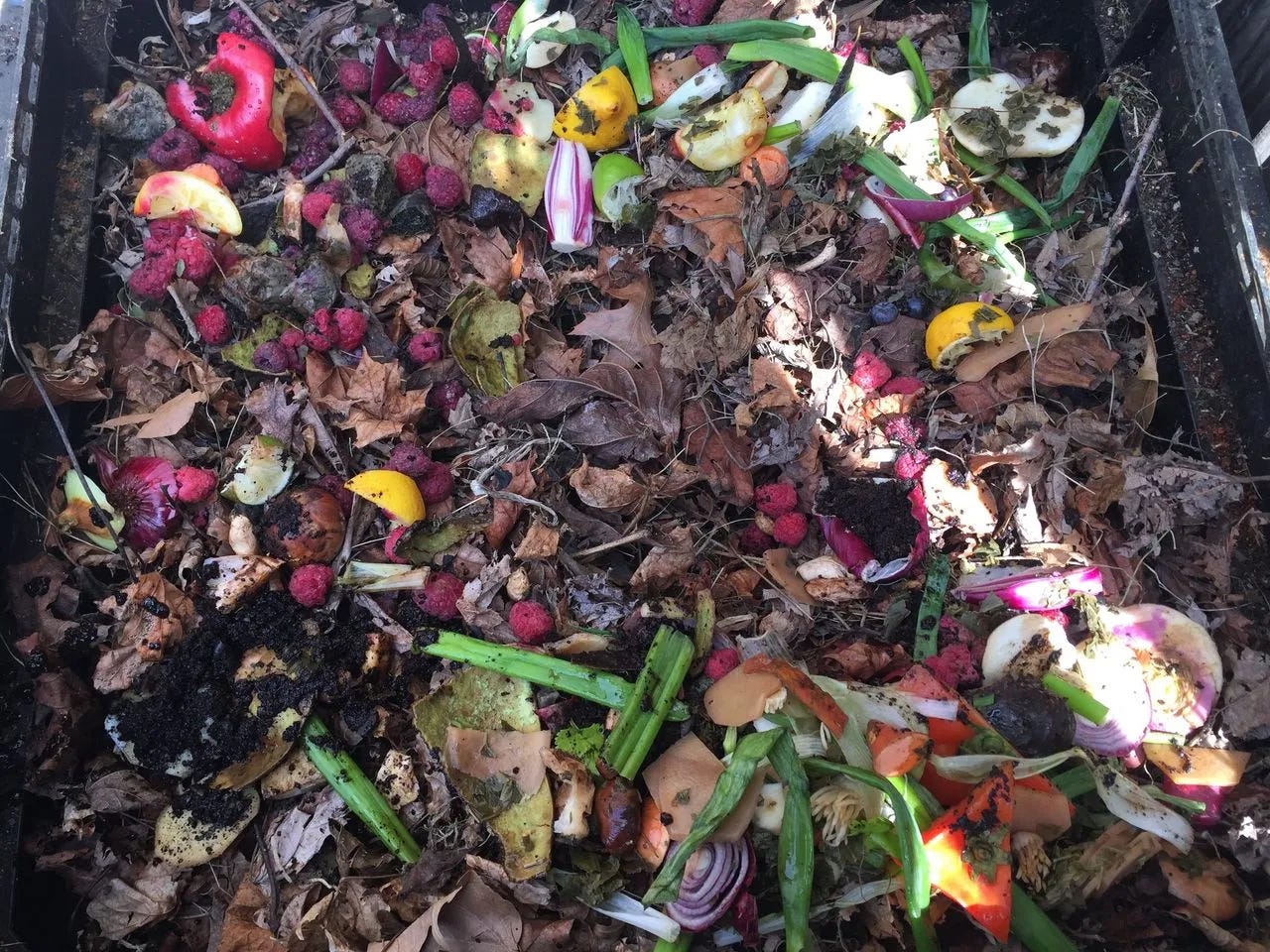
adding kitchen scraps and leaves from the yard to the compost bin transforms so called “waste” into extremely valuable “black gold” In the compost bin, we invest our time and ‘waste’ materials, and the ‘asset managers’ and ‘investment strategy team’ (comprised of myriad bacteria, fungi and decomposing insects) invest/transmute that time and material into molecules of biological currency for us, storing those units of currency in the form of fertile soil. We can then withdraw from our ‘account’ through using the ‘key code’ that is embodied in a living heirloom seed we plant in that soil (which unlocks it’s potential and allows us to withdraw part of our ‘savings account’ in that living soil/seed bank in the form of life giving food, medicine, oxygen and poetry for the senses). Thus, when you combine saving seed and composting to build soil you are essentially connecting your own health and resilience to the ancient sacred economy of the living Earth and therefore you will be able to nourish yourself and your loved ones (while also giving back to the Earth) regardless of the state of the human economy or your bank account.
For me, the act of saving seed, building soil (through composting) and allowing my life to blend with (and lending my energy towards) aligning with the cycles of nature (in my garden) served to dissolve the illusion of separation. What it did was allow me to perceive life on Earth as the magnificent tapestry of symbiotic relationships that it is, seeing my own intrinsic place in the web of life as one that not only receives (or takes) but one that is capable of giving back as well. Engaging in contributing towards this endless circle of gifts opens up doorways to levels of abundance that humans have not seen on Earth for a very long time.
We can align with inherent abundance and resilience through emulating nature and seeing each energetic flow of energy occurring in nature as an opportunity in disguise to let that energy do work for us. That includes Fire.
The above graph offers more pertinent data for individuals interested in using widely available materials to embrace health sovereignty.
Below the author points out the severe ecological and human health degenerating implications of factory farms but then by suggesting that “mycofiltration” is a solution, the author seems to imply that it is okay that we keep doing factory farming, as long as we also use his mycormediation techniques and technologies. That is wrong in so many ways in my opinion.
Then in the next page the author champions government regulations and attempts to tell the readers that mommy and daddy government is gonna protect us if we just ask really nicely. I do not subscribe to that kind of Stockholm syndrome thinking with regards to inherently immoral, nefarious and murderous racketeering entities such as statist regimes. He is right that corporate entities decimate the ecology of the Earth for profits and they conspire to pit farmers against people that love nature, but he appears to fail to understand that we live in a world where national governments are subservient to corporations, not the other way around.
The area highlighted in green however offers some very valuable insights into the amazing abilities of fungi to turn rock like granite into usable components for building soil.
This is especially helpful to keep in mind for those of you in the mountainous regions of the states and Canadian rockies with thin soils on rocky terrain, you can team up with fungi to pry loose mineral atoms from those rocks and through also incorporating beneficial bacteria in something like EM1 to turn rocks into plant food on site.
Below Paul talks about the benefits of organic agriculture and uses globalist buzz words like “Sustainable” but he says nothing about going beyond just sustaining and into regenerating. Additionally, that author highlights how they note that financial incentives drive farmers to go “no till” for carbon-centric (global warming narrative based) reasons.
First of all, if we put our hopes and momentum towards compelling a new generation of farmers to do what makes them the most money, then that is exactly what they will do. If being “no till” or organic certified stops being the most profitable and they can make a quicker buck selling GMO glyphosate laced garbage then they would do that instead, or if cutting corners on nourishing the soil and using tilling and other degenerative practices that offer quick cash boosts on yields, at the cost of long term fertility and soil health are legal and cheap for an organic certified producer, than they would choose that. If we are trying to motivate people and choose to motivate ourselves purely based on what rakes in the most fiat currency, we will quickly find ourselves sliding down a slippery slope of moral degradation and exploitation of the Earth for the purpose of selfish short term gain.
In a recent series of comments on a thread on The Corbett Report website I shared some thoughts that relate to this and explore what might be aptly described as the antithesis of the farmer that is purely motivated by what makes him/her more money. I touched on what Martín Prechtel describes as “Beautiful Farming” and elaborated on the difference between those who choose to farm (and garden) not purely for making a living, but rather, to give life meaning.
In this note I further elaborated on how some of our ancestors instilled values and worldviews into their cultures in order to incentivise ecologically literate behavior
When contemplating whether or not we should cheer and give our energy to more government bribes or regulations one might want to also consider how the governments we live under have chosen to use their legislative powers to indemnify vaccine manufacturers, send in militarized police to crush peaceful human rights protestors, spend untold billions on killing machines sent to poor countries to steal their resources and subsidize GMO agriculture.
In truth, our so called elected officials are nothing but puppets on a stage, dancing to the whims of corporations and banksters.
Government regulations may be wielded in alignment with your preferences in one instance because of bravery of a minority or because the optics suit the public relations/psychological warfare intents of the oligarchy but make no mistake, far often than not, government “regulations” and “incentives” have been used to oppress, stifle dissent, squash innovation, breed uniformity (social engineering), feed into greenwashing propaganda and “sustainable development” lies.
I would contend that punitive measures being applied by top town governmental systems (regardless of what ideological wrappings they have) are not effective long term solutions as threatening someone to behave how you want them to only remains effective as long as the threat and ability to act on the threat does, and even then industrious and inventive people will wind a way to circumvent said punitive measures if they really want to. That being said, unlike the WEF’s puppets (such as Trudeau) and their greenwashed trojan horse/profiteering initiatives such as ‘carbon taxes’ and ‘nitrogen restrictions’ for farmers etc, the will to impose strict rules on how people interact with the farm land and where their waste products end up during the Edo Period in Japan appears (to me) to have arisen out of a genuine necessity and want to salvage (and sometimes regenerate) the landscape that had been decimated by degenerative/extractive agricultural practices and urban development.
Incentivizing behavior that helps to regenerate the landscape is at least a step in the right direction, as perhaps after being bribed to do something for long enough by the government the people doing it will begin to see the long term intrinsic benefits offered to their own lives by engaging in said actions.
That being said, I agree with Charles Eisenstein when he states “We are not going to be forced into Love, we are not going to be scared into Love, we are not going to be bribed into love, we are not going to be threatened into love”.
Loving the forests, mountains, rivers and soul as beings with a spirit, and kin that we should nurture, give thanks for and protect as we would family is a viable path to nurture a balanced way to live for our human family, and those ways of seeing and living must arise from an inner motivation within individuals, not from top down bribes or threats from governments.
In the page above and below we are given many more helpful tidbits of info that can be extrapolated into viable strategies for enhancing your soil building, tree crop vigor and companion planting strategies in the regenerative garden and in the food forest.
The following page offers more useful info about the many functions that fungi can stack in the landscape and also touches on something I explored in depth in my article on Regenerative Ocean Gardening, Kelp Farming and Marine Permaculture pertaining to the role of bears and other predators that eat salmon from rivers and enrich the forest soil in significant ways with the ocean minerals in the salmon flesh and bones.
In the page below the author highlights the idiotic and shortsighted greedy behaviors of ecologically illiterate anthropocentric humans but then he starts trying to objectify, commodify and place a dollar value on the worth of forest habitat in a misguided attempt to argue why we should preserve these magical and rare places (again).
The ancient, ancestral and irreplaceable wisdom and nourishment for the spirit that exists in the last few old growth (primary never clearcut) forests on Earth is not simply “aesthetic”, it is our lifeline to the same living library our indigenous ancestors tapped into in order to develop their knowledge and spiritual understanding.
You cannot put a dollar sign value on those things, nor can you scientifically convince someone stuck in mechanistic/reductionist thinking why they should stop chopping the forest down if they can profit more from doing so. The path to protecting these places is planting the seeds in hearts and minds to alter how they perceive the Earth and our tall rooted kin, not telling them all the reasons why it will save human lives or how much money it will save them if they keep the forest alive.
The impetus has to be love, otherwise the protection of the forest is only going to last as long as the fear or bribes keep coming.
Below the author continues to argue with dollar sign thinking instead of gift thinking and animistic thinking. He speaks of how we can “sustain profits” as though providing that as an incentive to psychotic greed based industries as a good idea (when they have a long history of using legal loop holes, militarized police and media black outs to keep on destroying rare habitat while making them selves look pretty to all the statist media outlet followers). He speaks of fearing that lost profits could endanger his cherished statist overlords, and that we should be afraid for our “country” and protect the forest for that reason. That is a completely ass backwards way to go about inspiring people to care about forests if you ask me.
Below the author highlights some valid points pertaining to old growth forest ecology but then he mentions the “carbon is a big bag boogie man” narrative again.
I admire the authors honesty about his former job being an old growth logger and how he has grown and come to understand how important protecting those ancient beings is now.
The idea about spored chainsaw oil below is pretty cool, especially if an arborist got into it as they have to cut trees down anyways, so they could be simultaneously inoculating them for growing medicinal and gourmet mushrooms if they used that technique.
However, I do not agree with the authors demonization of burning woody material. While I think that inoculating wood chips and/or logs is a great way to build soil and produce food (and I do that myself) I also think that learning from how nature uses fire to enrich soil with biochar is also worth applying in the forest.
I would suggest a multipronged approach myself, where woody material is retained on site both for inoculating with mycelium for growing fungi and for making into biochar for permanently enriching soil structure. Both of those techniques being used together would create more microclimates and edges between ecological niches in that forest, equaling more potential for growing diverse crops.
Below the next three pages offer a great list and info for helping your trees team up with beneficial underground fungi and regenerating damaged areas.
The next page has solid info about the benefits of mulch and decomposing wood, but again, Paul demonizes fire and does not tell the complete story with regards to the regenerative role that fire (and more specifically the role that pyrolyzed beneficial microorganism enriched wood material) can play in a food forest or forest ecology regeneration design.
For more info on the potential beneficial roles of fire in ecology and more specifically biologically enriched pyrolyzed wood material, watch this video:
Again in the page below the author misleads the reader with stories about the big bad boogie man of Carbon and continues to paint fire as the enemy. If you watch the video above and learn about Terra Preta you will find that much of what Paul spouts off about here paints an incomplete picture of the role of fire and carbon in nature.
The page below offers valuable facts but then the author also tries to argue that we should protect the forest in the name of perpetuating an “economic return on timber”. That anthropocentric thinking is what got us here in the first place, doubling down on it is not helpful, even if you mean well.
Above and below important factors relating to the presence or lack of intact foret ecosystems are listed, but then again, Paul starts trying to appeal to the industrialist dollar sign thinking corporate people talking about “reducing costs” and “investment protection”.
Below the next 4 pages offer helpful info for people working to heal the soul and water after chemical toxins have gotten into them.
The next page mentions a corporation called Battelle that is knee deep in War Profiteering and Racketeering operations. Those are not the type of people I would be working with myself.
Helpful info for healing soil and water below:
In the next page Paul promotes patents as a beneficial pathway to help the Earth and our efforts, but in reality patenting offices are known for their corruption and complicity in perpetuating the status quo through suppressing tech that threatens corporate profits.
Good info is offered above and below (in the next two pages) pertaining to helping the earth heal after exposure to artificial sources of ionizing radiation.
Yes mushrooms can consume radiation, and they can also protect your body against it.
For instance:
- Reishi mushroom (ganoderma lucidum) contains triterpenes, antioxidants and other compounds that prevent radiation-induced DNA damage. These mushrooms are both cultivated and can be foraged for in the wild. Info on identification can be found here and here.
- Wood ear mushroom aka Jelly ear fungus, Judas ear, also sometimes referred to by the unfortunate moniker “Jew’s ear” (Auricularia auricula-judae) containing high levels of the radioprotective compound melanin (a high-molecular-weight polymer that is ubiquitous in nature and is the compound responsible for the pigmentation of human skin). This mushrooms is both cultivated and can be foraged for in the wild. They grow in the wild on 4 continents and are often found growing on Elder. Info on the native range of this fungi can be found here. Info on identification can be found here and here .
Something else you may find interesting about mushrooms with a high melanin content is that they may also enable humans to take on temporary Photoheterotrophic traits.
- Other medicinal mushrooms such as Cordyceps (Cordyceps militaris) and Chaga (Inonotus obliquus). also offer radioprotective benefits.
For more information on how to protect your body against radiation read:
Radioprotective, Radiomitigative and Radiomodulatory whole foods and naturally occurring plant/fungal compounds
The following post constitutes installment #8 of the Stacking Functions in the Garden, Food Forest and Medicine Cabinet series.
Below the next 9 pages offer very helpful info that can be applied in a decentralized manner, using onsite materials to grow mushrooms for eating, healing the body ad building soil.
Below the author lists cow manure as a substrate but does not warm the reader to avoid manure from cows that eat glyphosate laced GMO grain based feed. One should use caution with using materials from conventional and GMO agriculture and farming as mushroom growing substrates as they essentially distill down the chemical poisons that were sprayed on the farm into the mushrooms being produced.
The following section on using stumps and logs to grow food and medicine is extremely helpful to the motivated forest steward, food forest designer and/or outside the box thinking regenerative gardener.
Above the author again misleads the reader by demonizing burning debris and wood in generalizing statements about carbon and various statist laws. In reality, when you burn debris and wood to make Biochar, rather than ash, you can actually sink carbon into the soil for centuries, and it builds soil fertility in significant ways.
I find the tables below to be very helpful when strategizing for new food forest designs.
These next ten or so pages offer excellent ideas and facts about incorporating fungi into your veggie gardens and food forest designs.
The next 6 pages highlight how empowering growing your own mushrooms can be given how much nutrient dense food you can get with limited space and sunlight.
For more on the medicinal properties of some fungi I like to create with in the kitchen read:
Natural Pathways For Optimizing The Innate Immune System
The sniffle season is approaching and so I wanted to preemptively put together some info for those of you looking to take conscious steps towards being able to nurture and heal your body to be resilient enough to handle anything life throws your way. Each step we take to boycott big pharma and embrace Mother Earth's medicine cabinet is a conscious choic…
For more info on the Vitamin D link mentioned above, read:
Forging Alliances With The Fungal Queendom
The "Fungal Queendom" (as author, educator and mycological pioneer Peter McCoy calls it) is a truly ancient community of organisms which often forms symbiotic relationships with other organisms capable of contributing to a mutually beneficial relationship. It is no wonder that when ingested, many of these fun…
The remainder of the pages I share pics of below offer in depth info on specific species that I have worked with and find to be very powerful allies for stacking functions in the garden, kitchen, medicine cabinet and food forest but Paul’s book covers many more than I am not familiar with (and which may be more well suited to your specific situation and climate) so getting a copy of his book even just for that reason may be worth it. Please pay close attention to the areas I have highlighted in green as that is information that is especially helpful as you strategize to ally with fungi to embrace food and health sovereignty (while also building soil and increasing biodiversity).
(thought you might appreciate this @
)I am not a fan of the seemingly elitist perspective Paul expresses above about Psylocibin mushrooms being better reserved for the “philosophers, theologians, mathematicians, and intellectual leaders” etc. There are a lot more dangerous and detrimental drugs out there messing up the general public right now (like alcohol) so personally , if one is ingesting these sacred mushrooms respectfully and responsibly, I think the general public would benefit in aggregate, and we need more empowered, open minded and empathic everyday people just as much as we need that list of “important leaders” Paul offered.
Whew! That is all I have for you on this book everyone. If you made this this far you are a real trooper! I admire your reading and attention stamina in this time of twitter and Instagram gold fish attention spans. Thanks for coming on this journey to learn about fungi with me.
All in all, I think that the amount of practical, low tech, decentralized applicable and everyday person empowering info in the book pertaining to cultivating fungi (and recognizing their gifts in their native habitats) outweighs the downsides of this book, so, with the caveat of suggesting people take Paul Stamet’s views on the allelopathic medicine industry, governments and the role of fire in forest ecology with a grain of salt, I would suggest getting a copy of this book if you do not already own a copy.
For those looking for alternative perspectives and more in depth explorations into the realm of fungi, there are three other books I would also suggest which offer their own nuanced views and specialized paths of knowledge in the realm of Mycology are
Radical Mycology A Treatise on Seeing and Working with Fungi
Entangled Life: How Fungi Make Our Worlds, Change Our Minds & Shape Our Futures – by Merlin Sheldrake
Organic Mushroom Farming and Mycoremediation: Simple to Advanced and Experimental Techniques for Indoor and Outdoor Cultivation – by Tradd Cotter
If you are new to this blog and are wondering what this “Book Club” series is all about, you can learn more about it here:
For those that would like to join in, get caught up, and/or re-cap through reading (re-reading) the 3 previous book reviews I have published as part of the above series I will link them below:
August, September (and October's) Book Club Review of "The Spirit of Trees: Science, Symbiosis and Inspiration"
I give this book a 9.5 out of 10.
As I stated in the previous book review that was part of the Book Club Series, I will also be taking a break from the Bookclub series over the winter (and spring) in order to focus on my Stacking Functions in the Garden, Food Forest and Medicine Cabinet : The Regenerative Way From Seed To Apothecary series, regenerative agroforestry, food forest and refugia design initiatives and for writing my next book.
I wish you all many nourishing, inspiring and healing moments in the kitchen, garden and forest in the months ahead my friends.


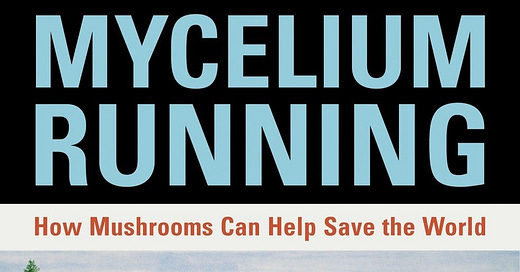



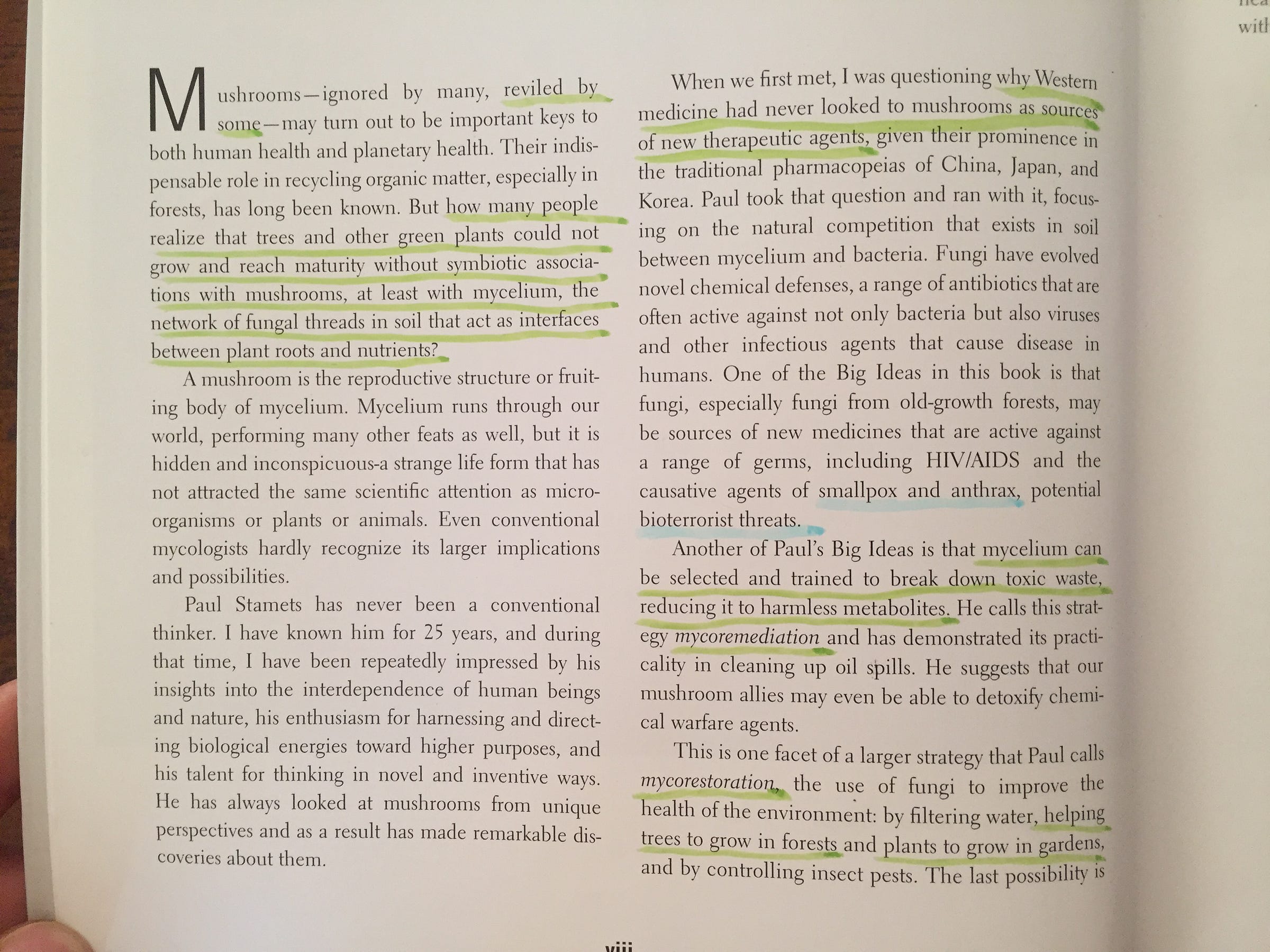
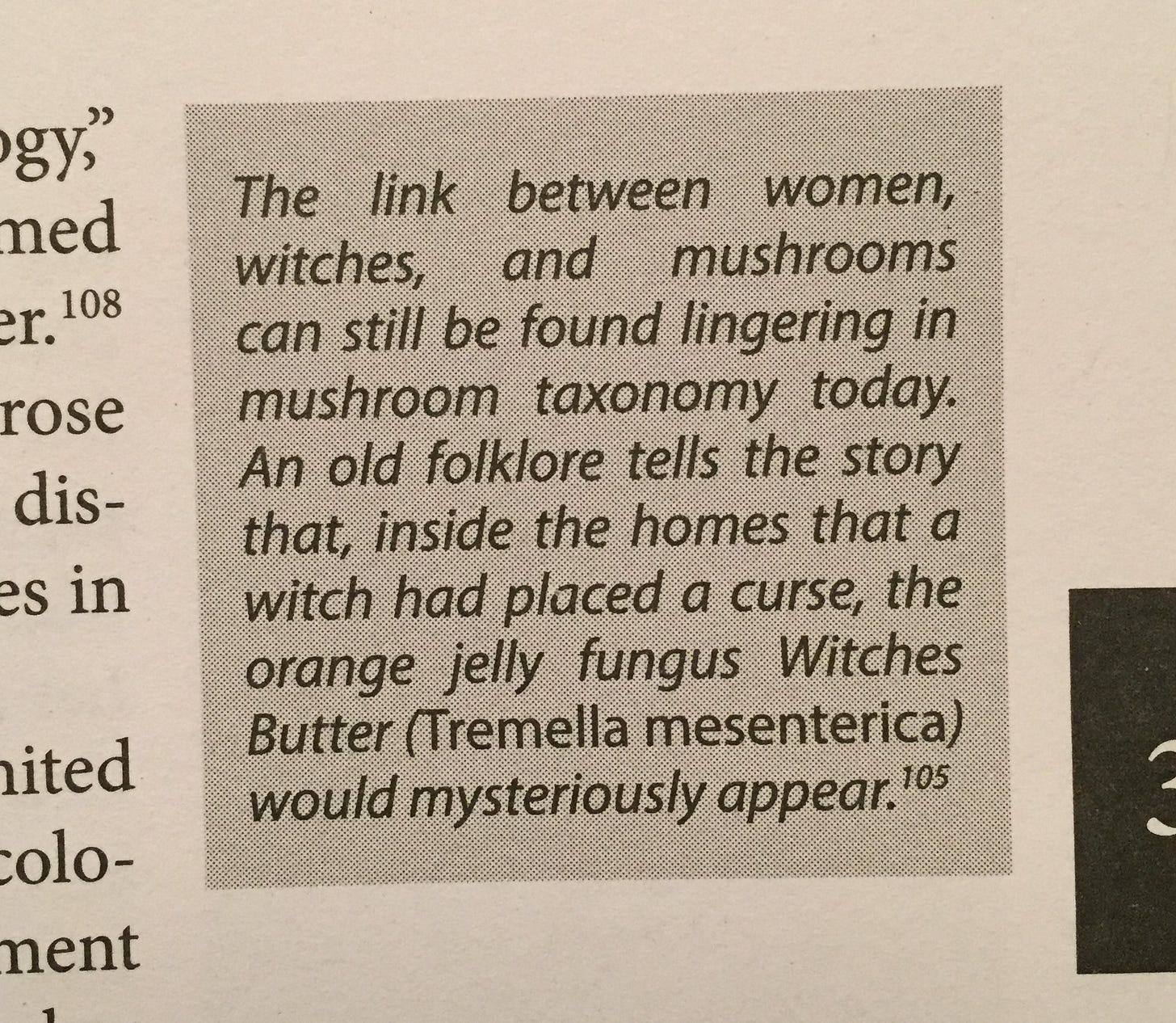
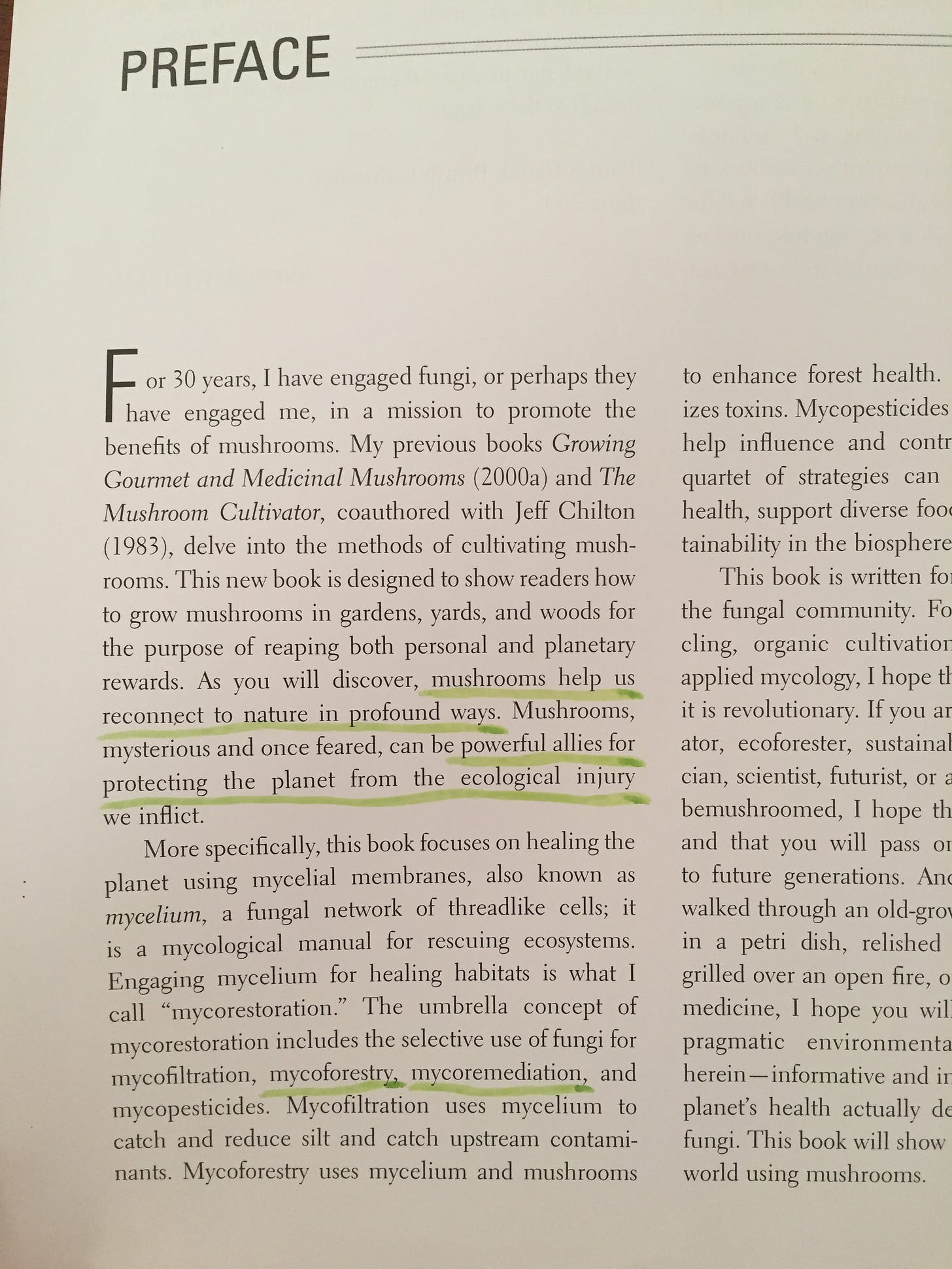
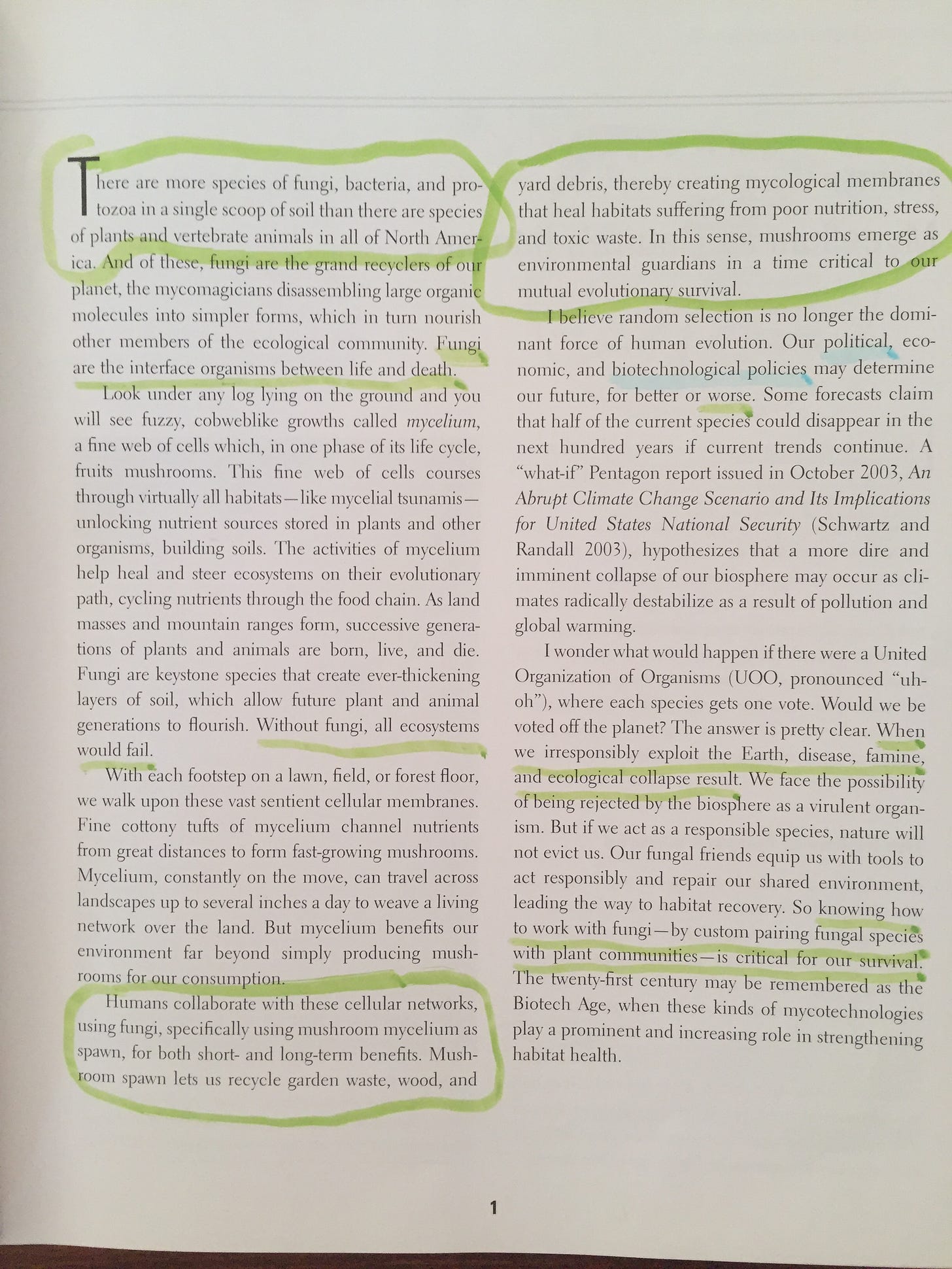
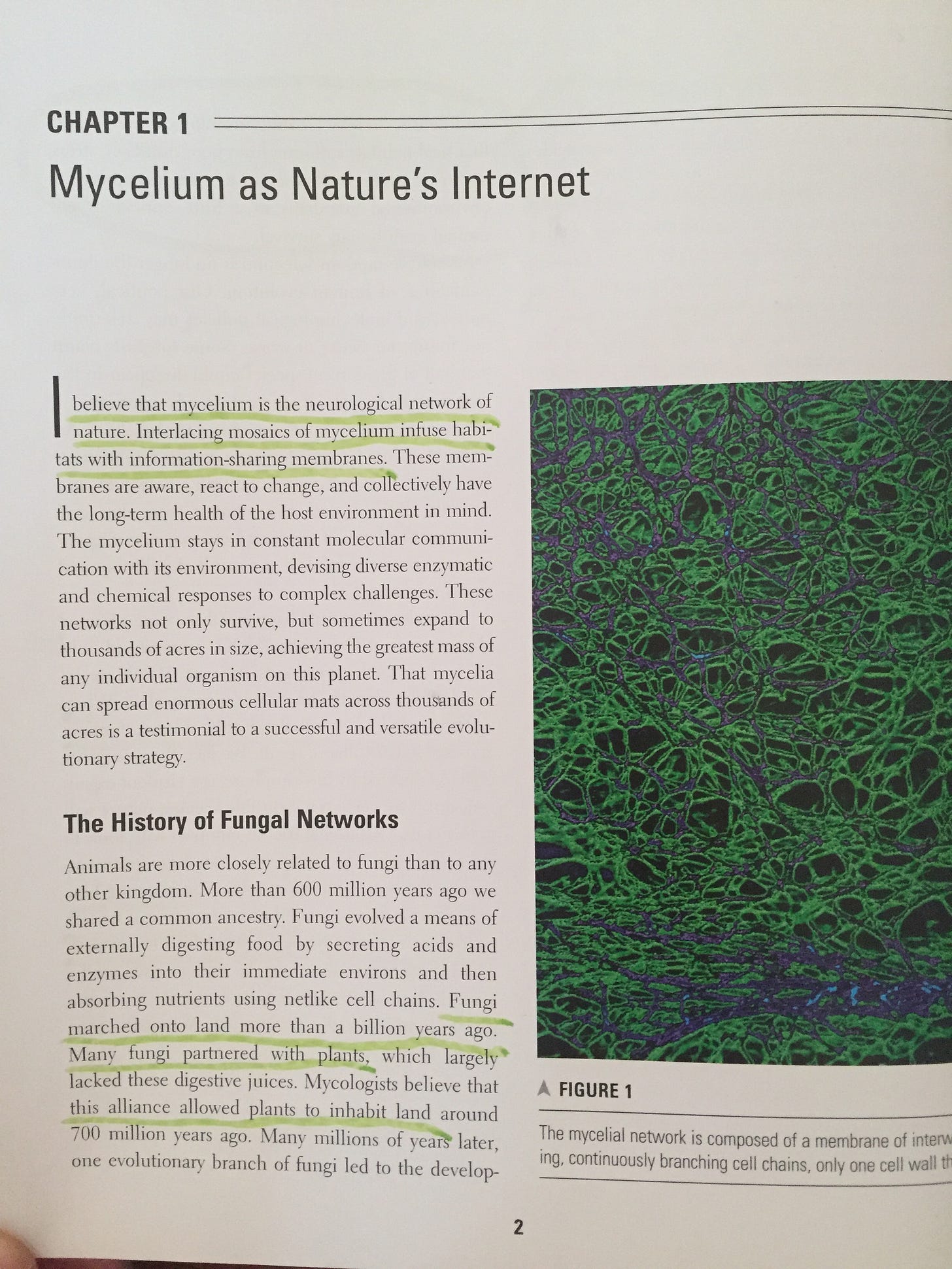

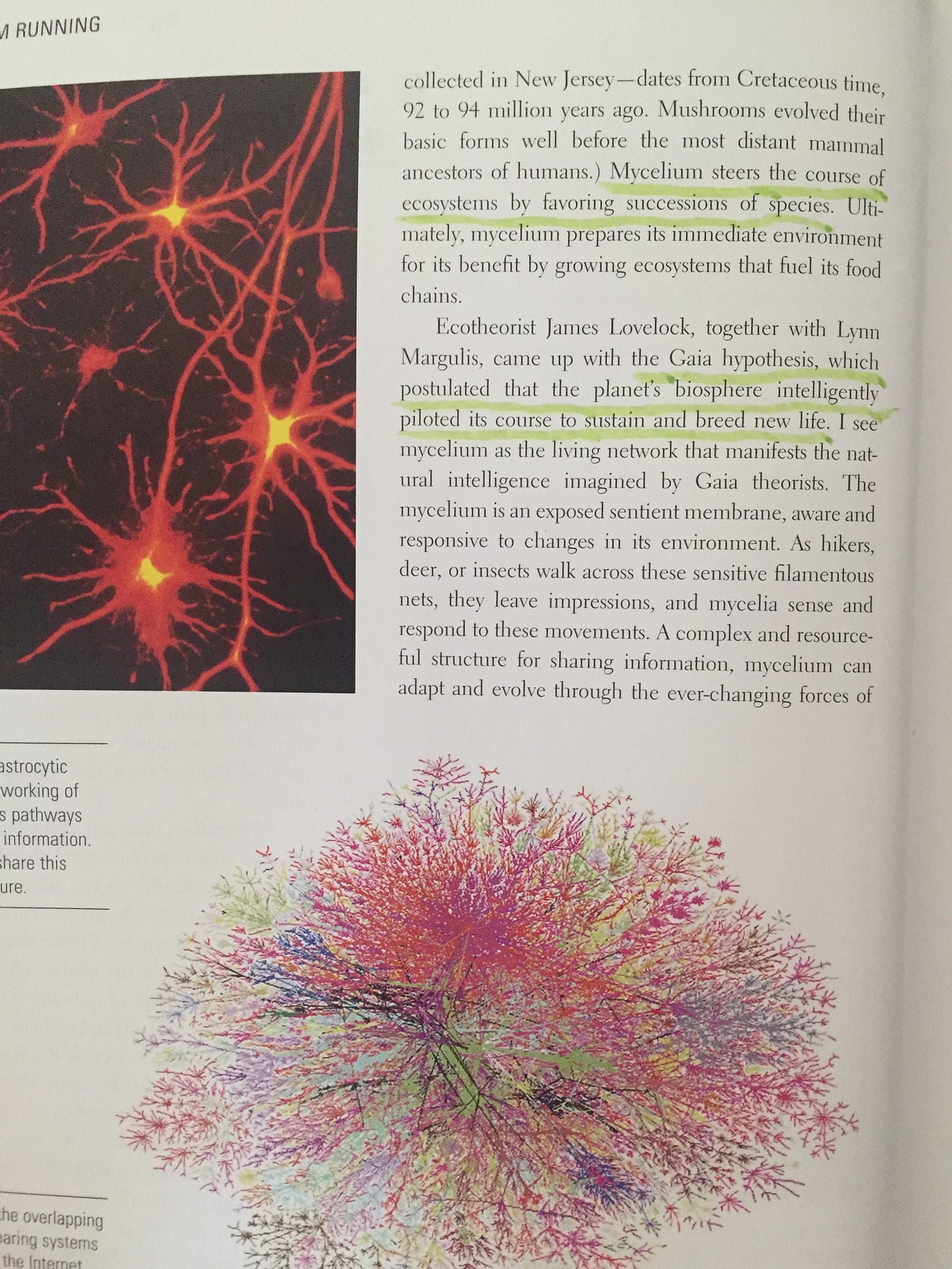
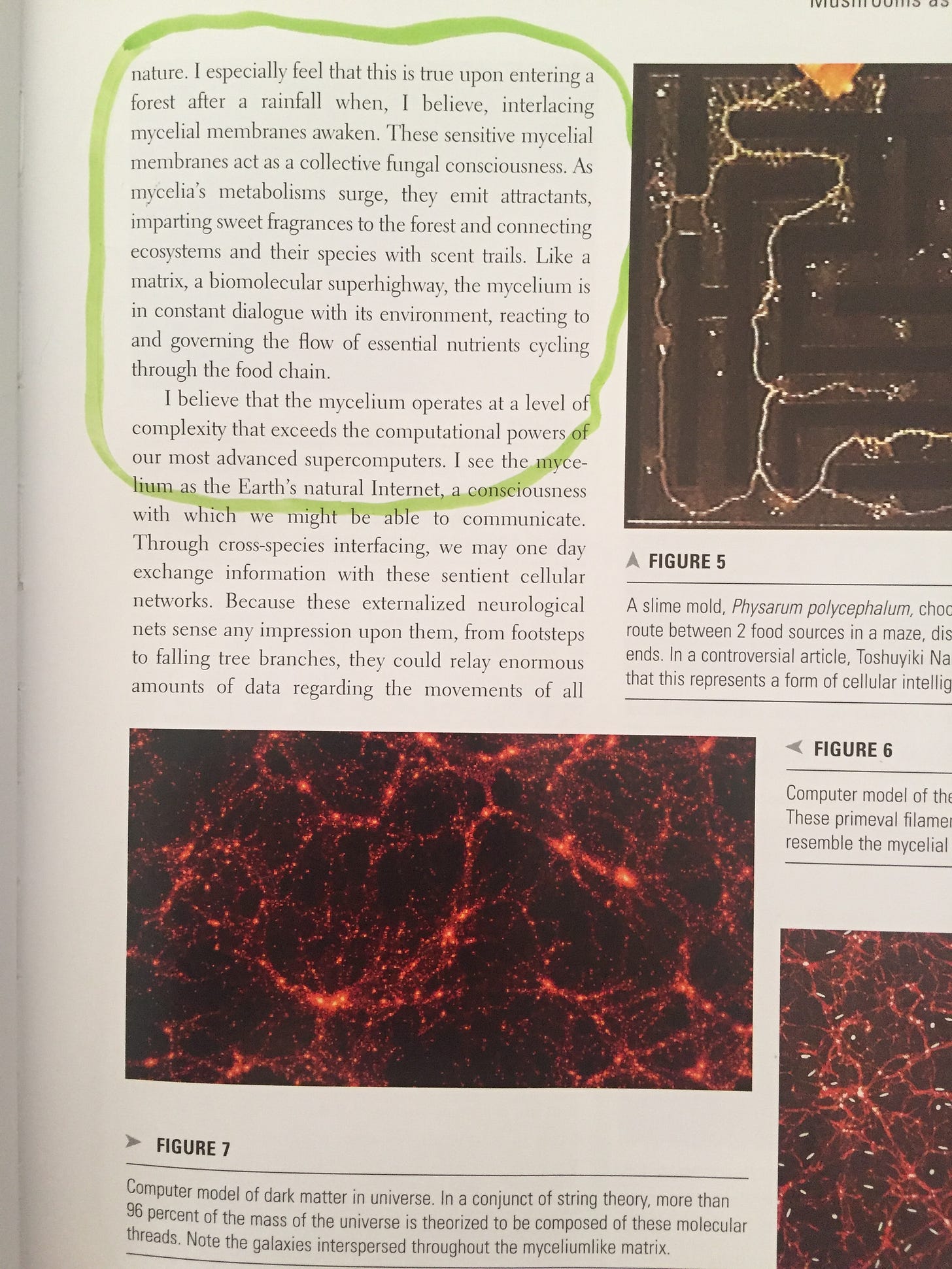

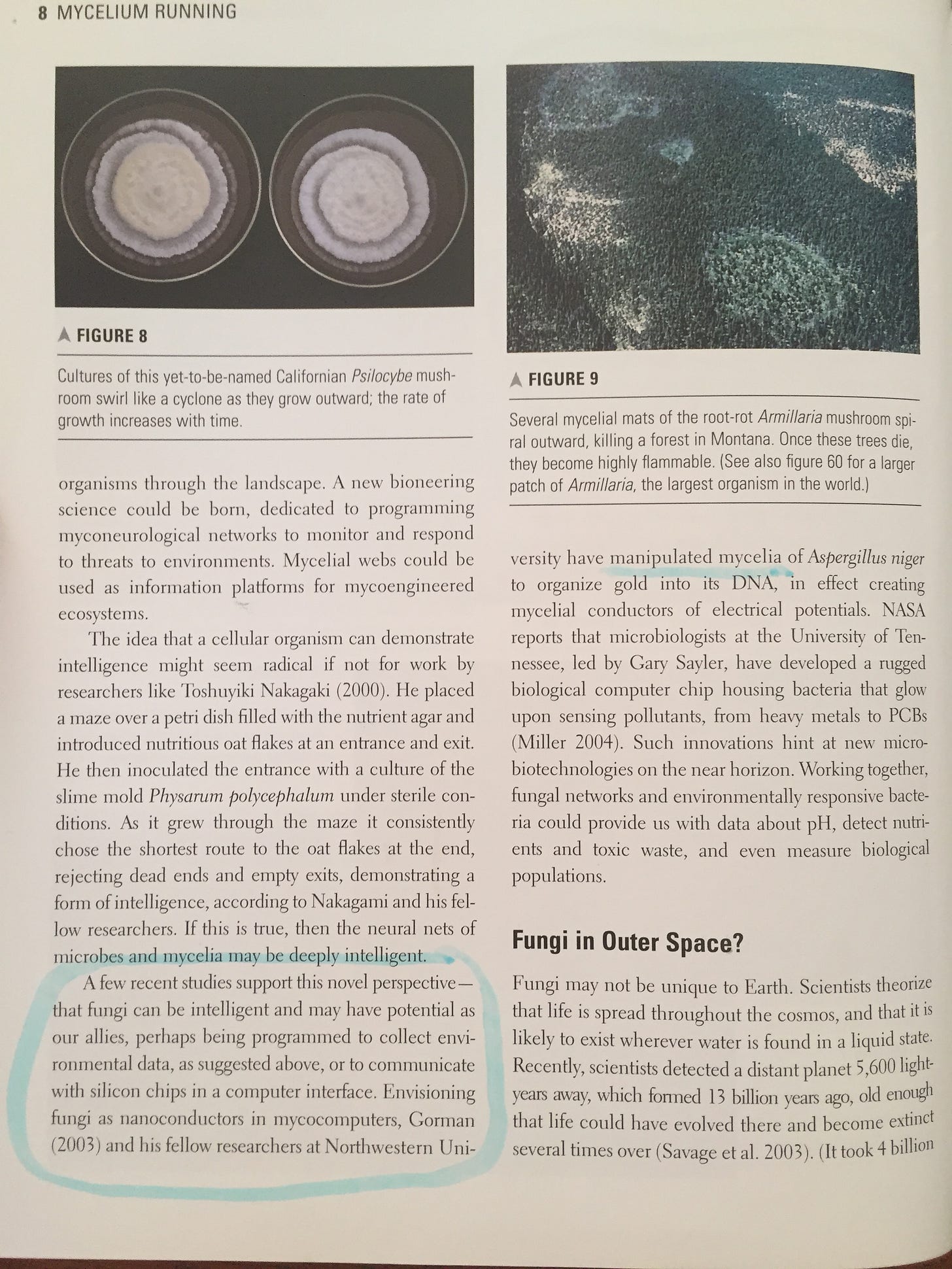
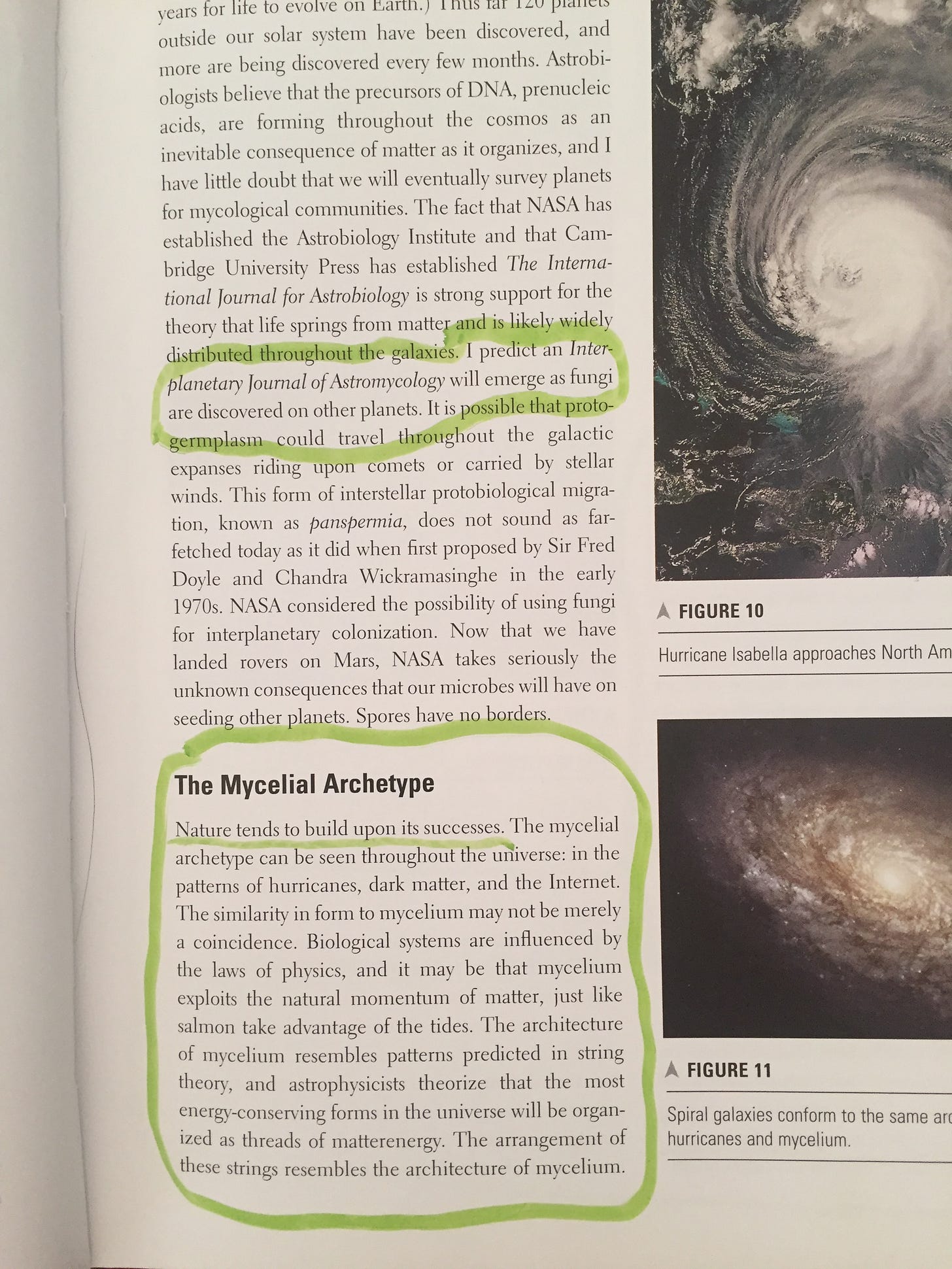








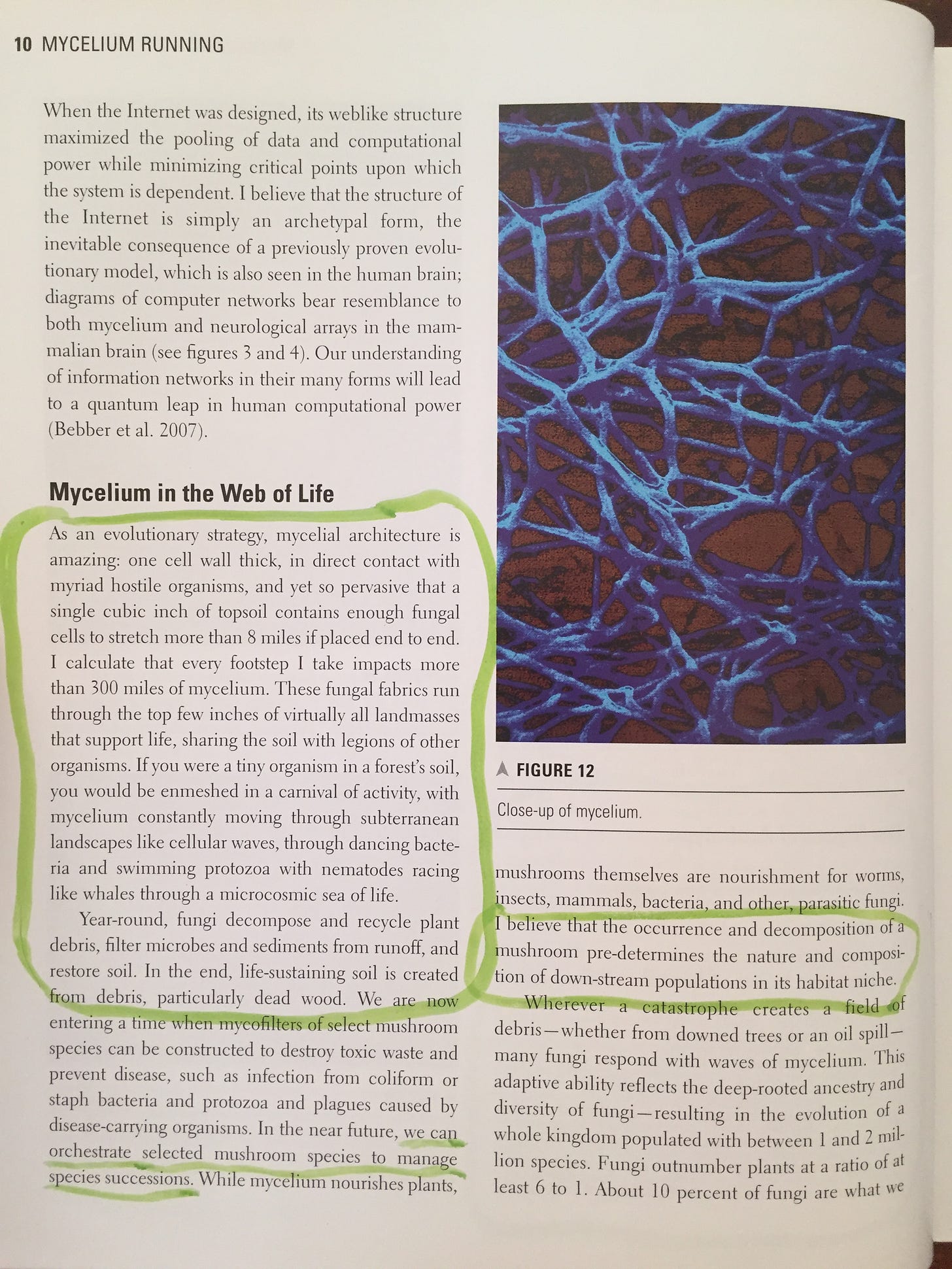


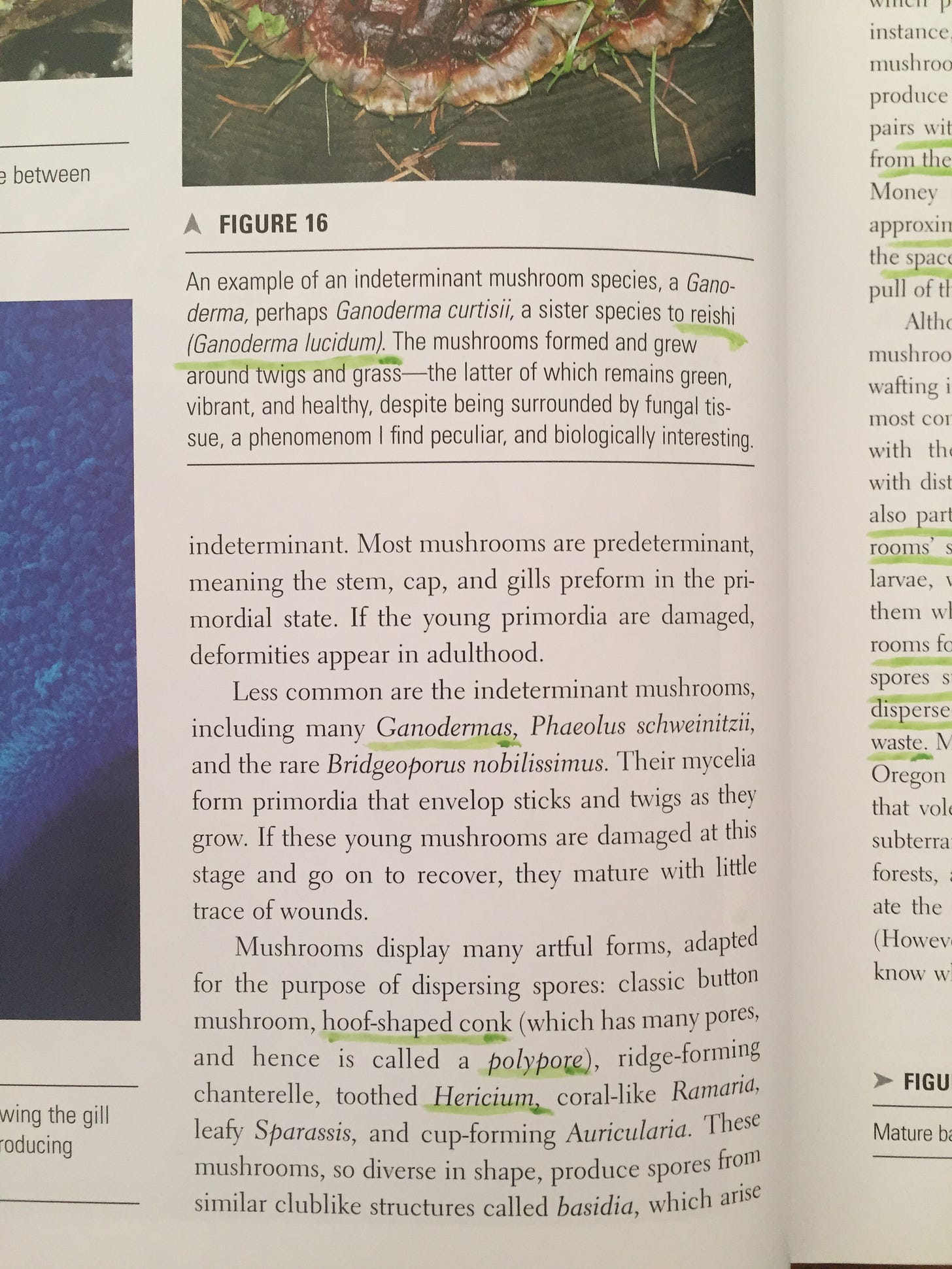

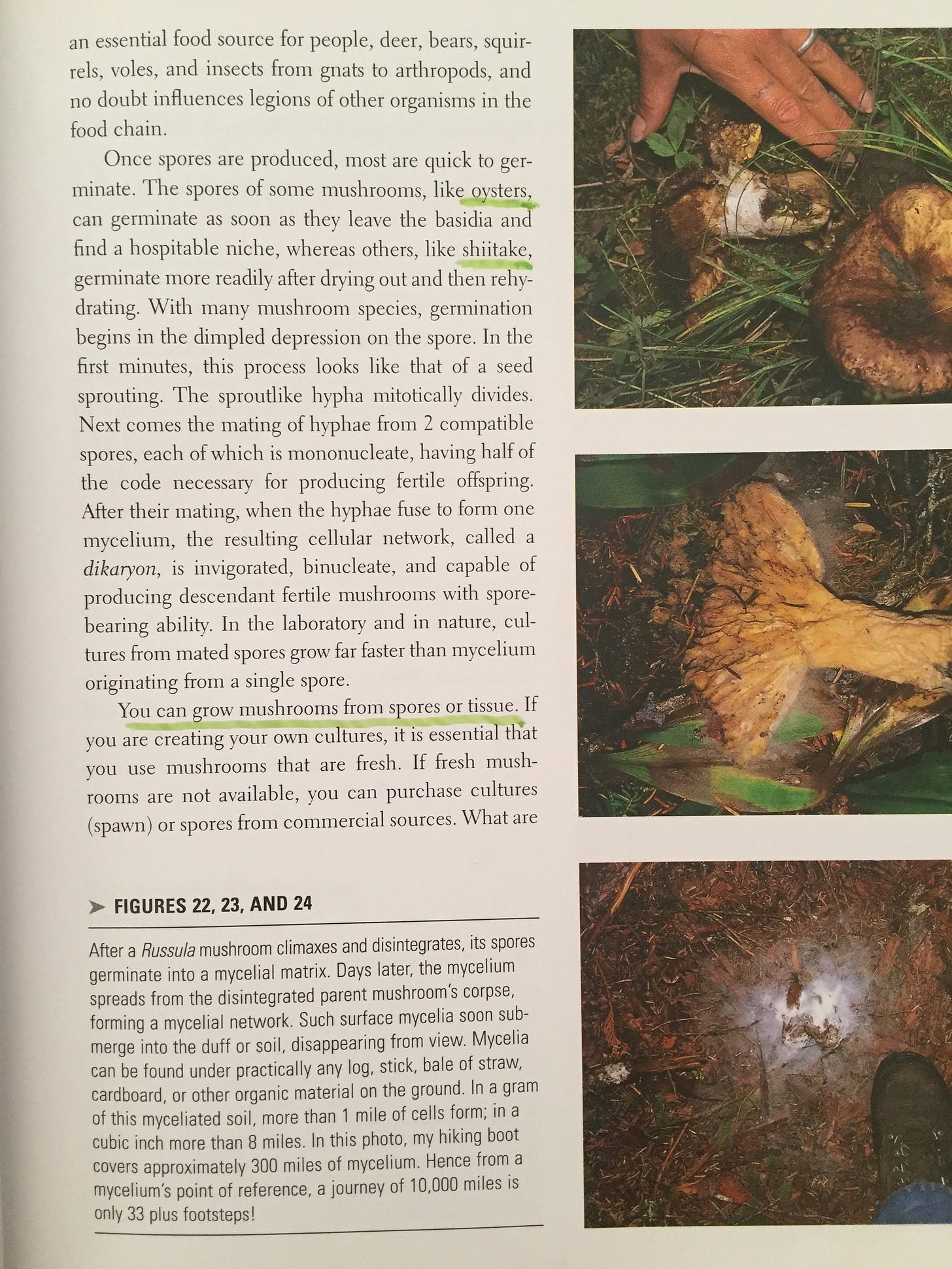
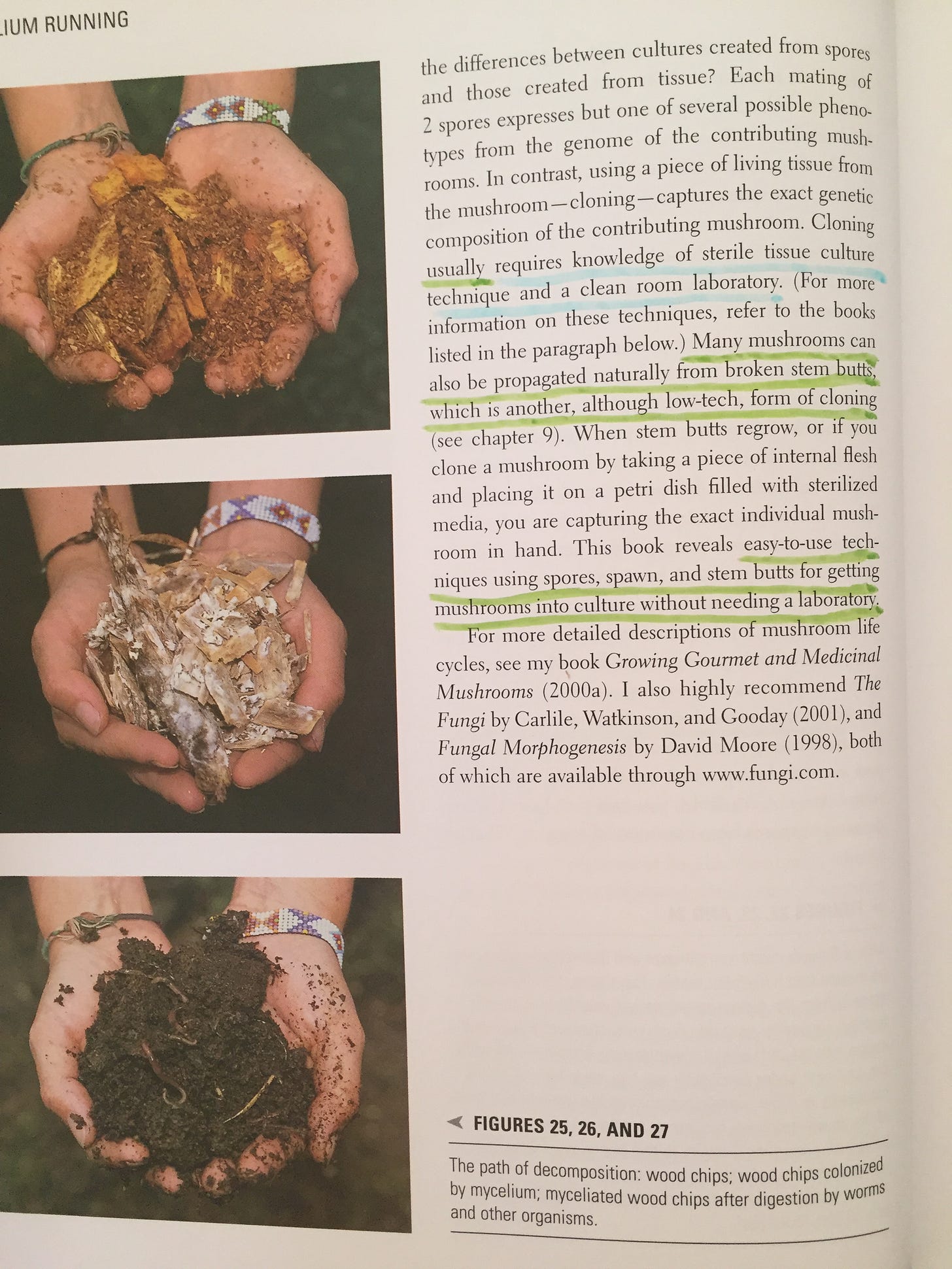

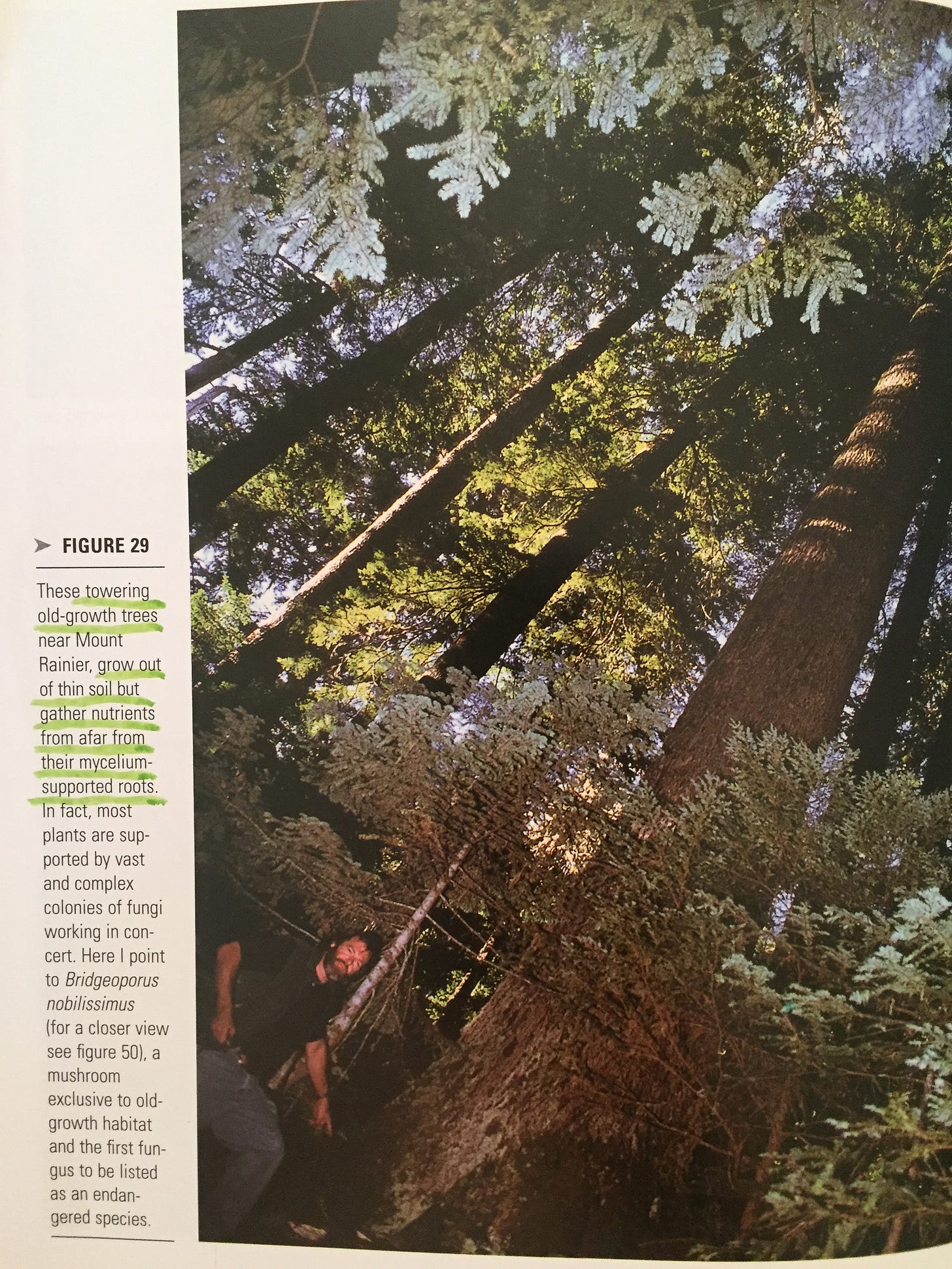

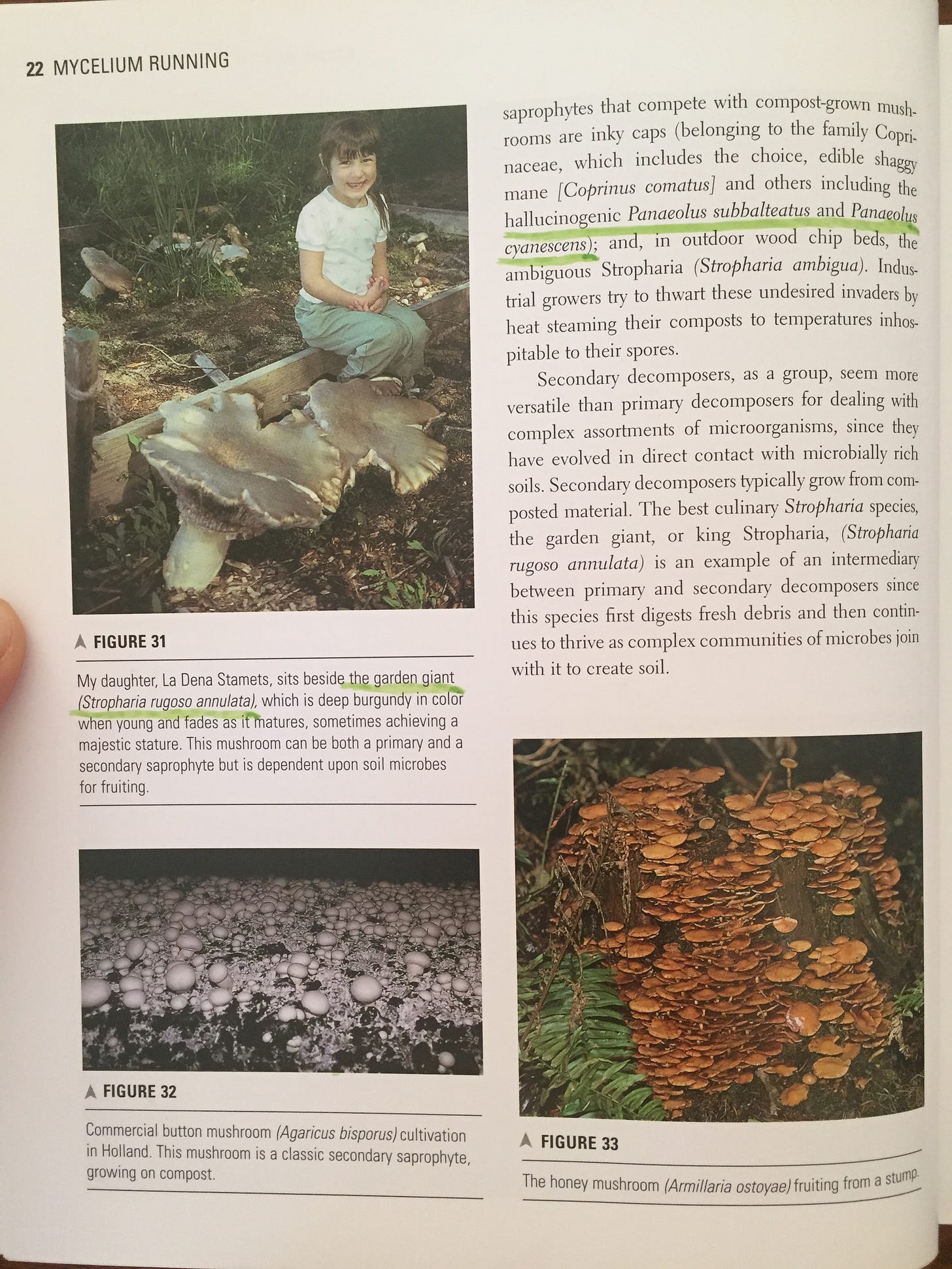






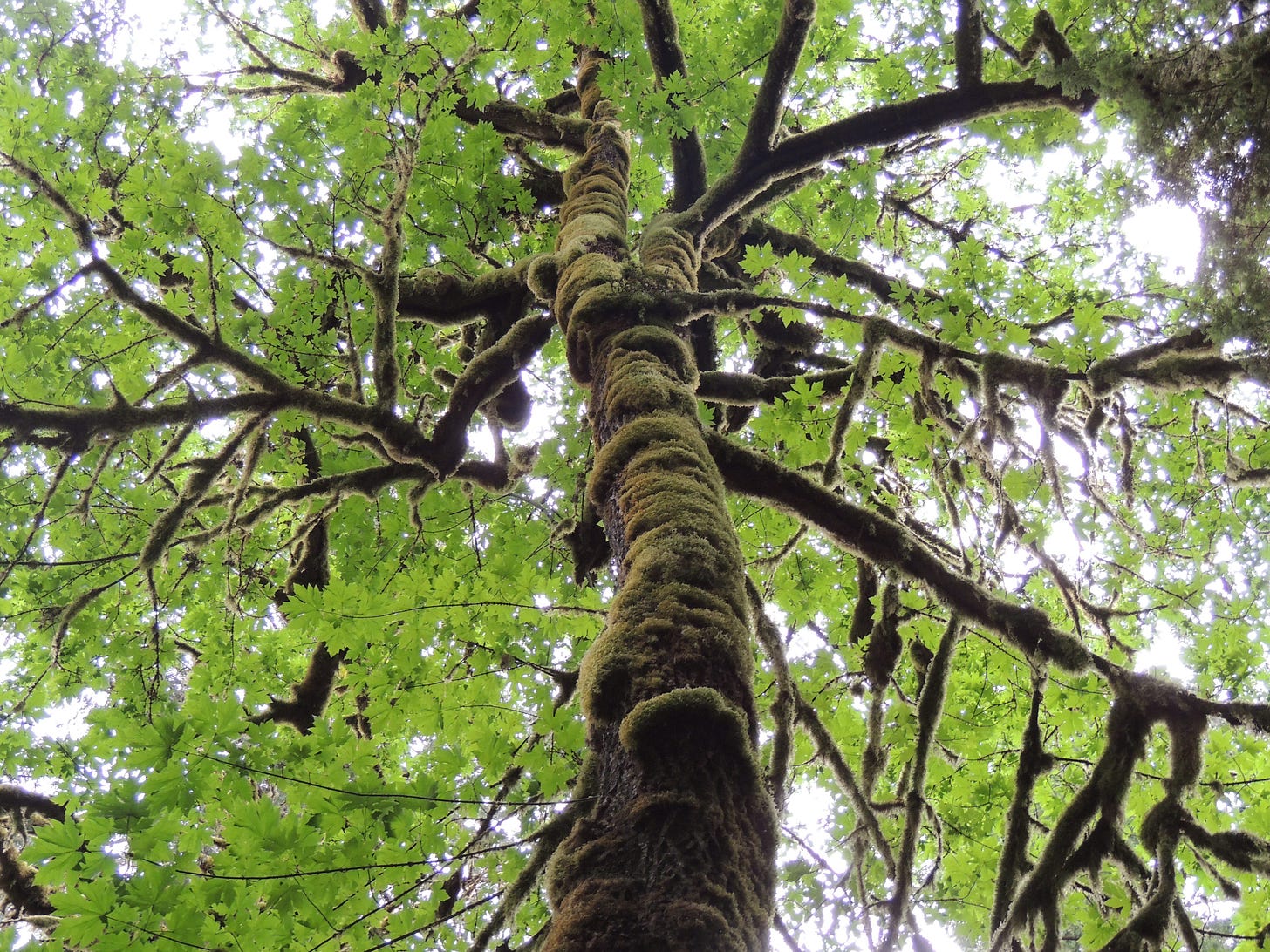
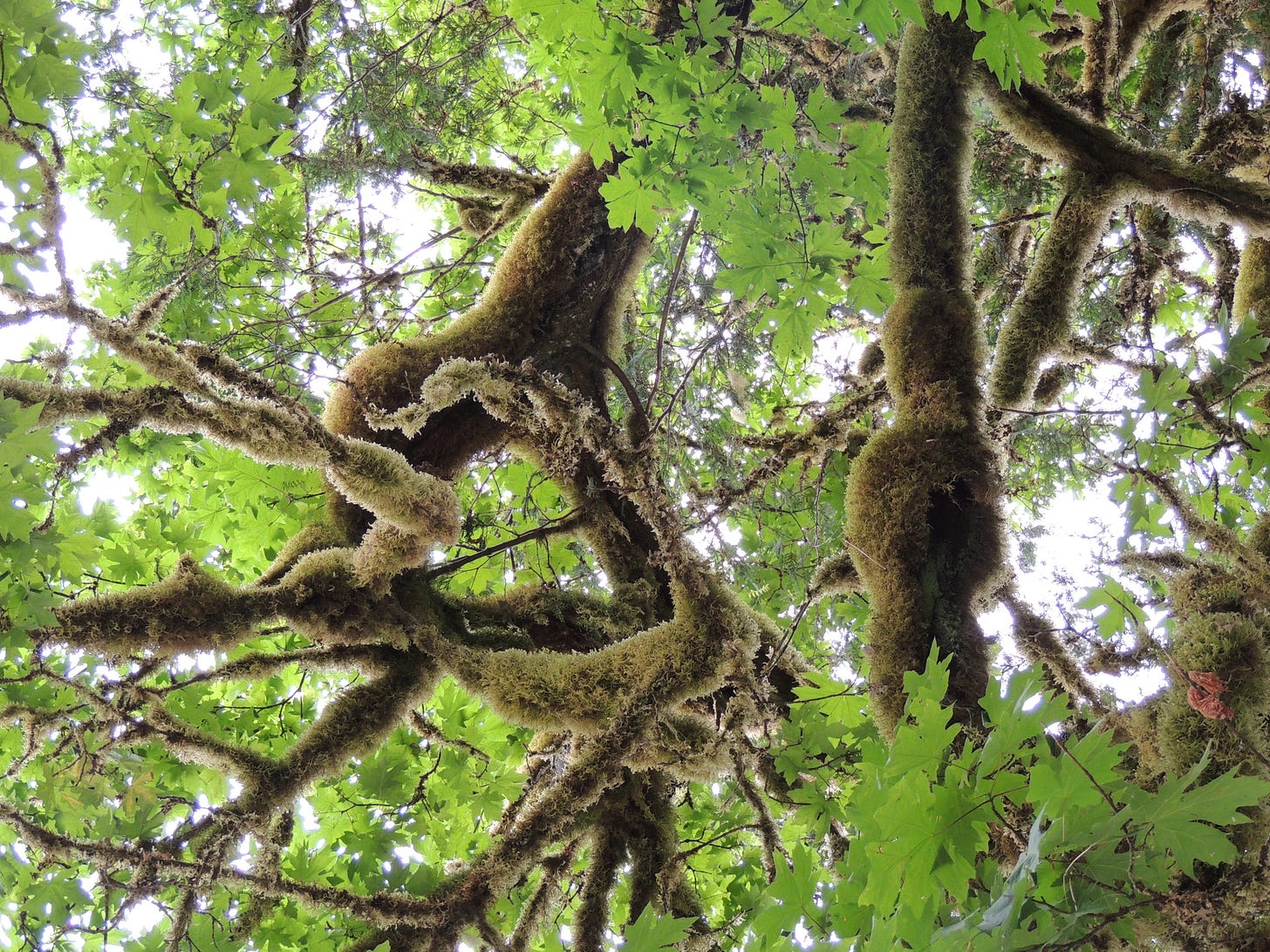
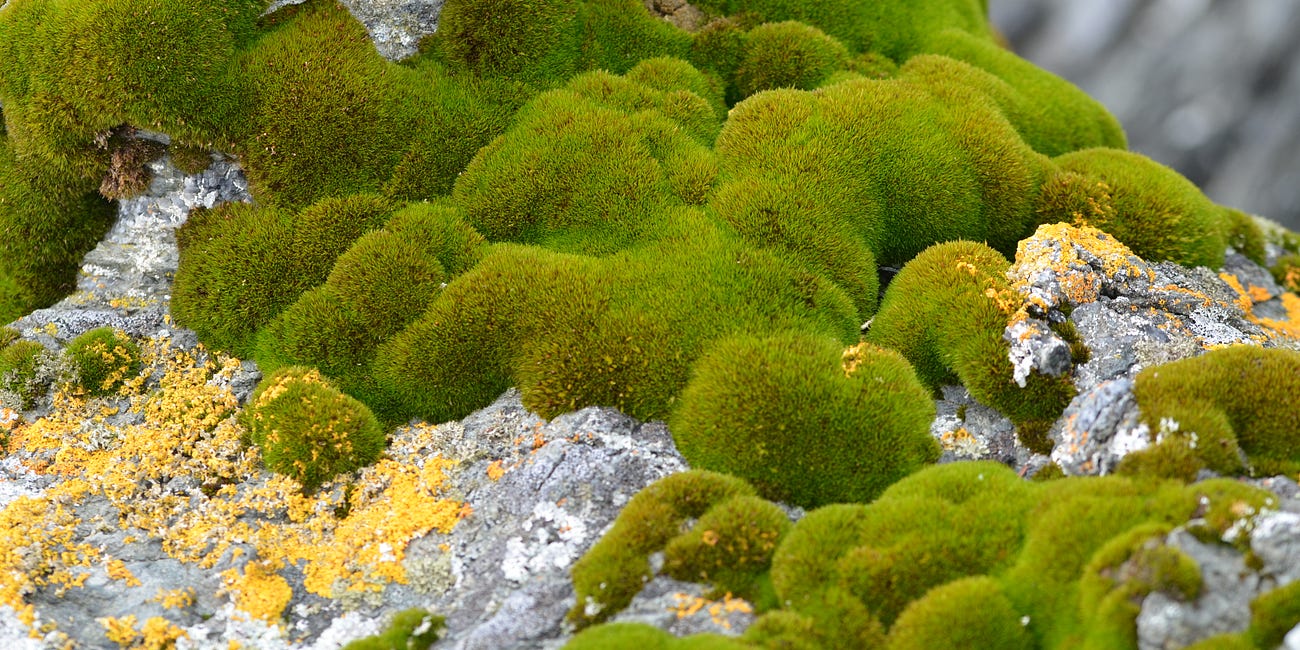
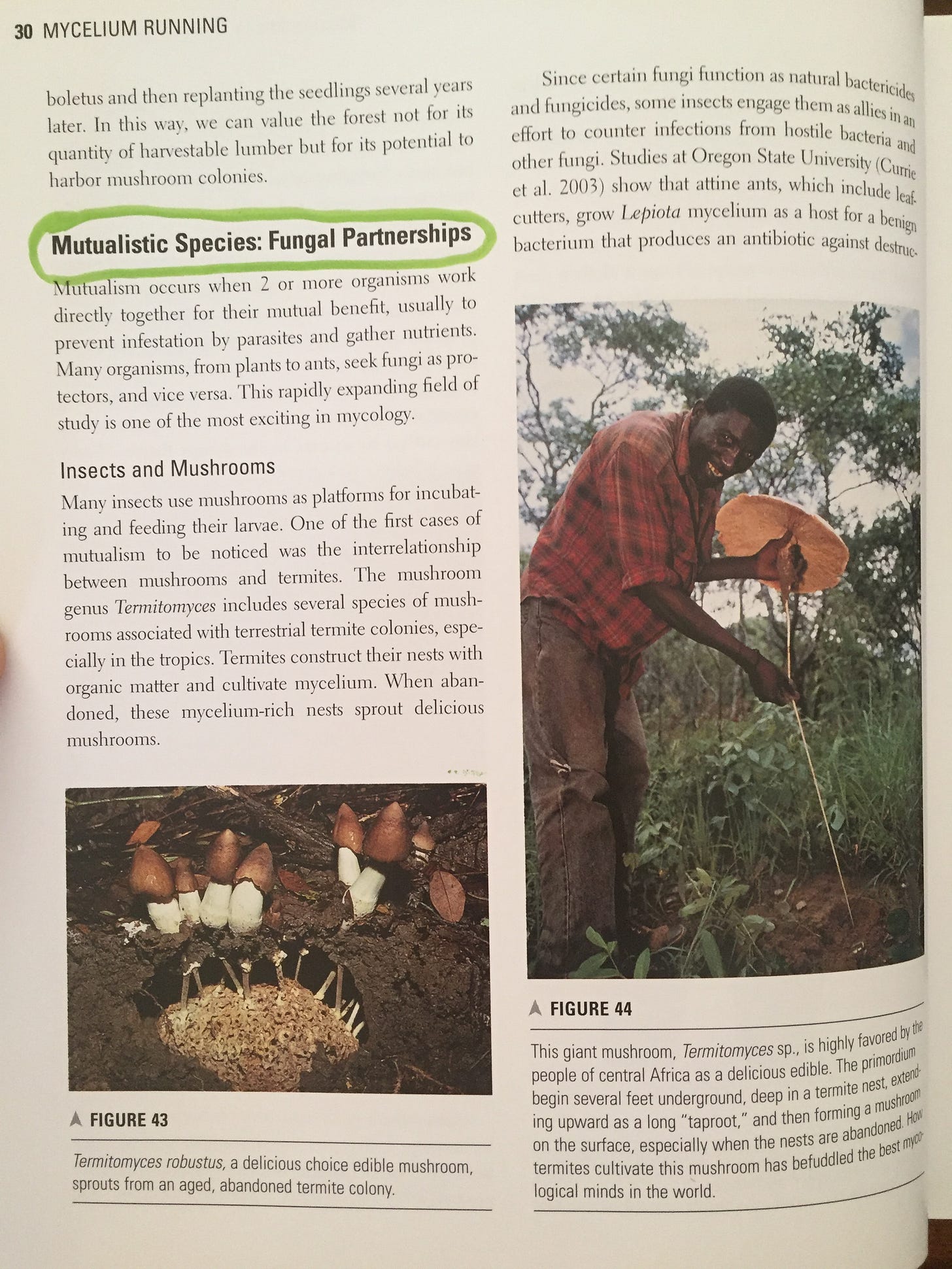
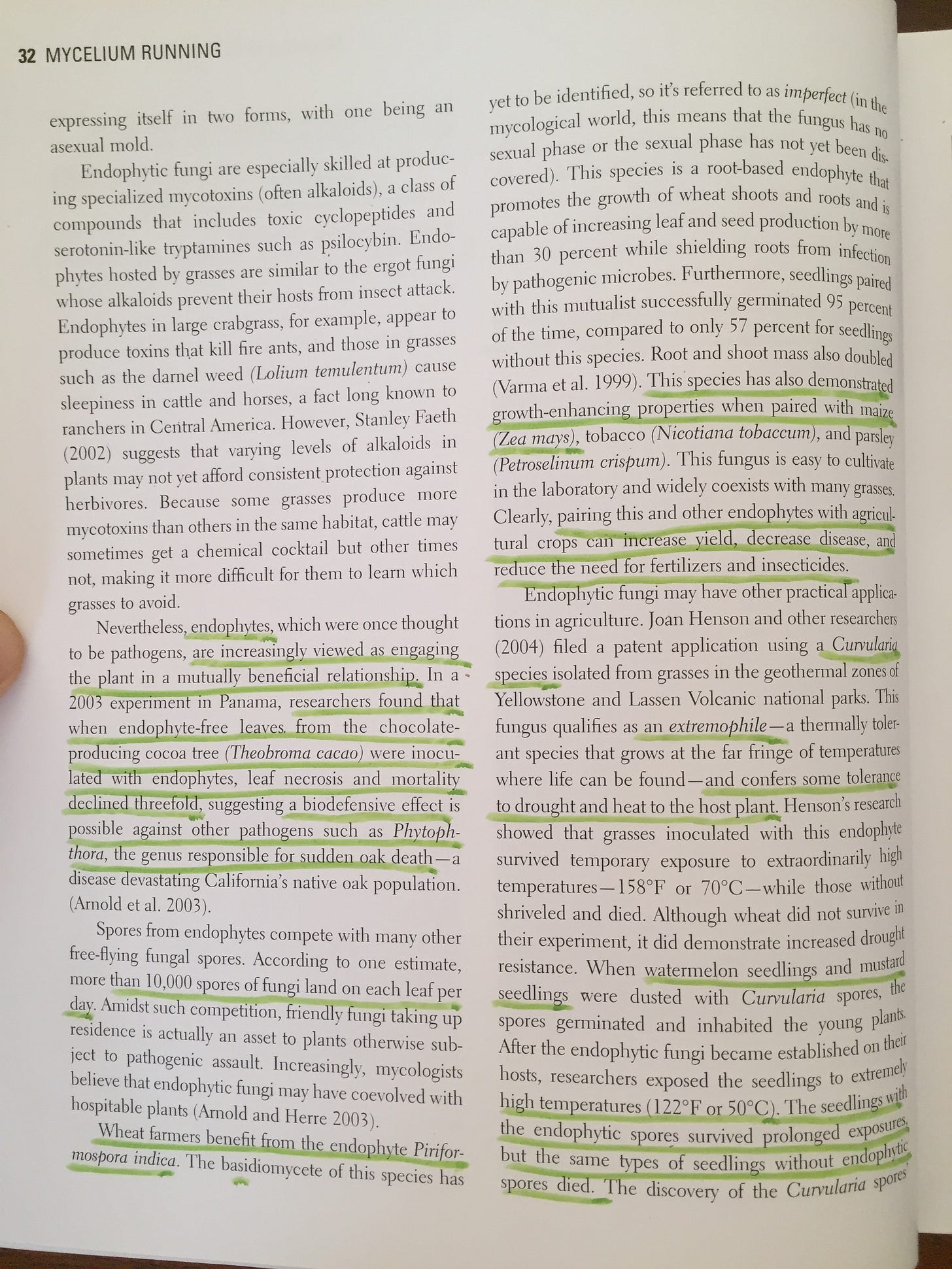









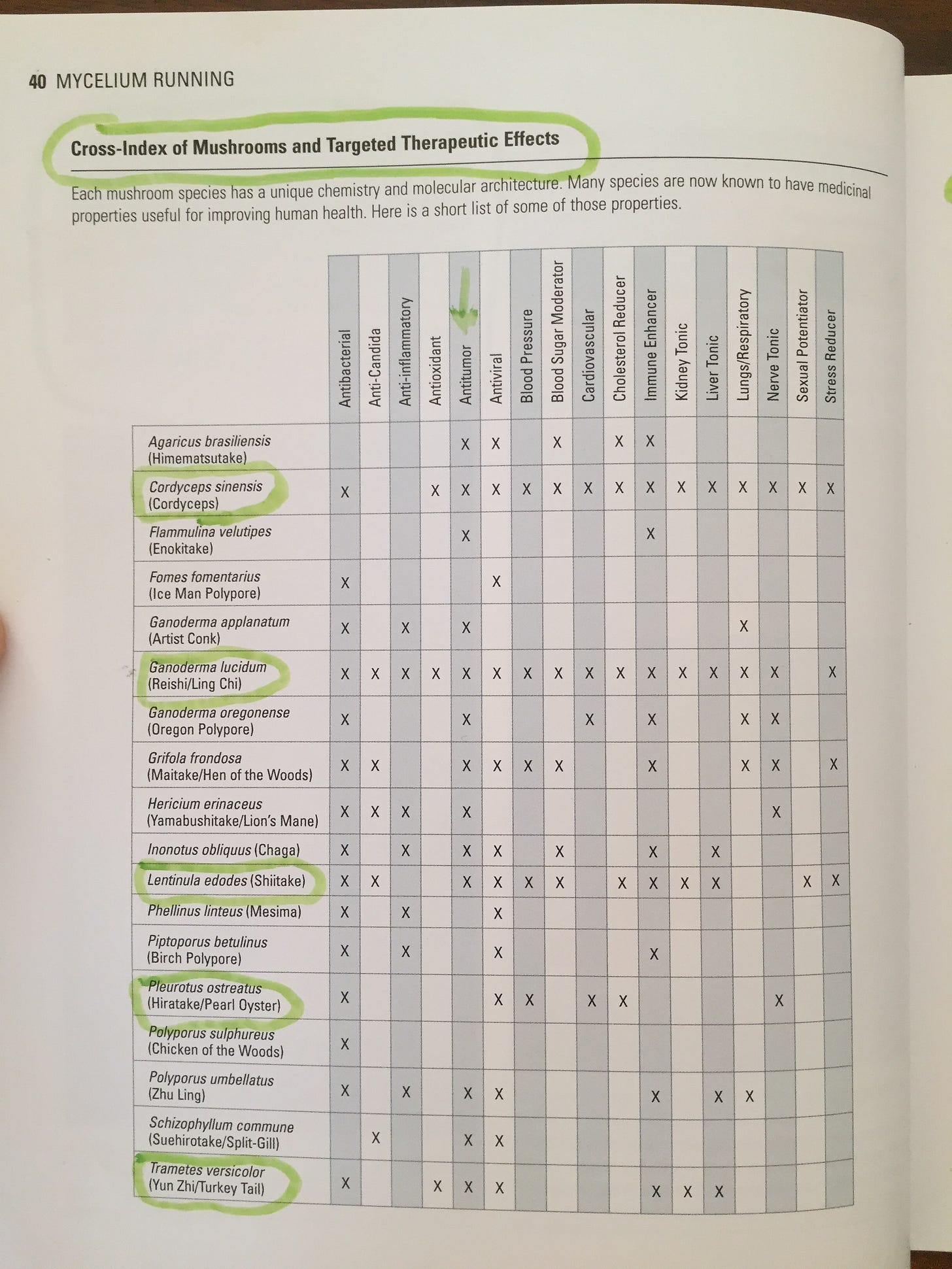

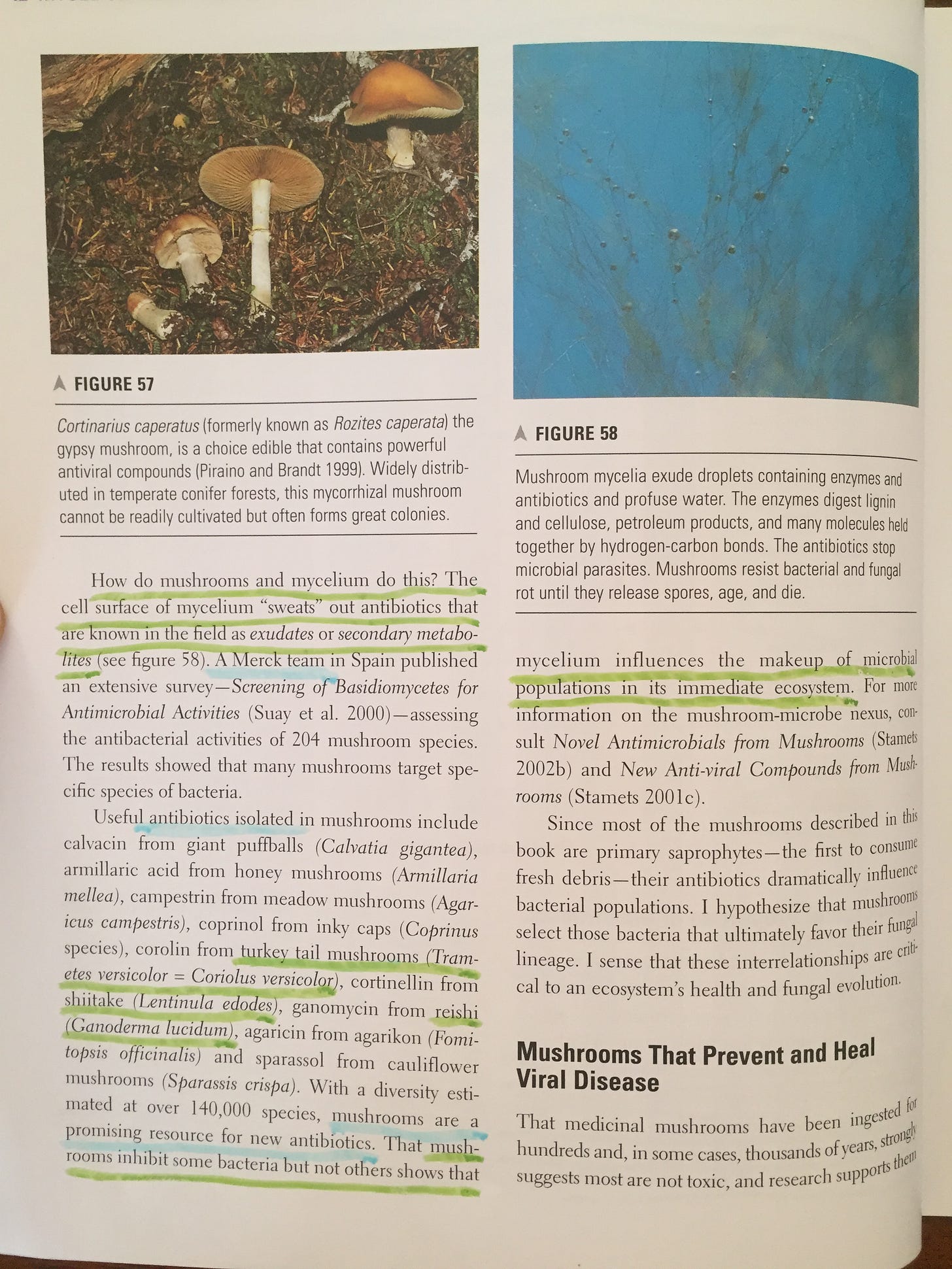


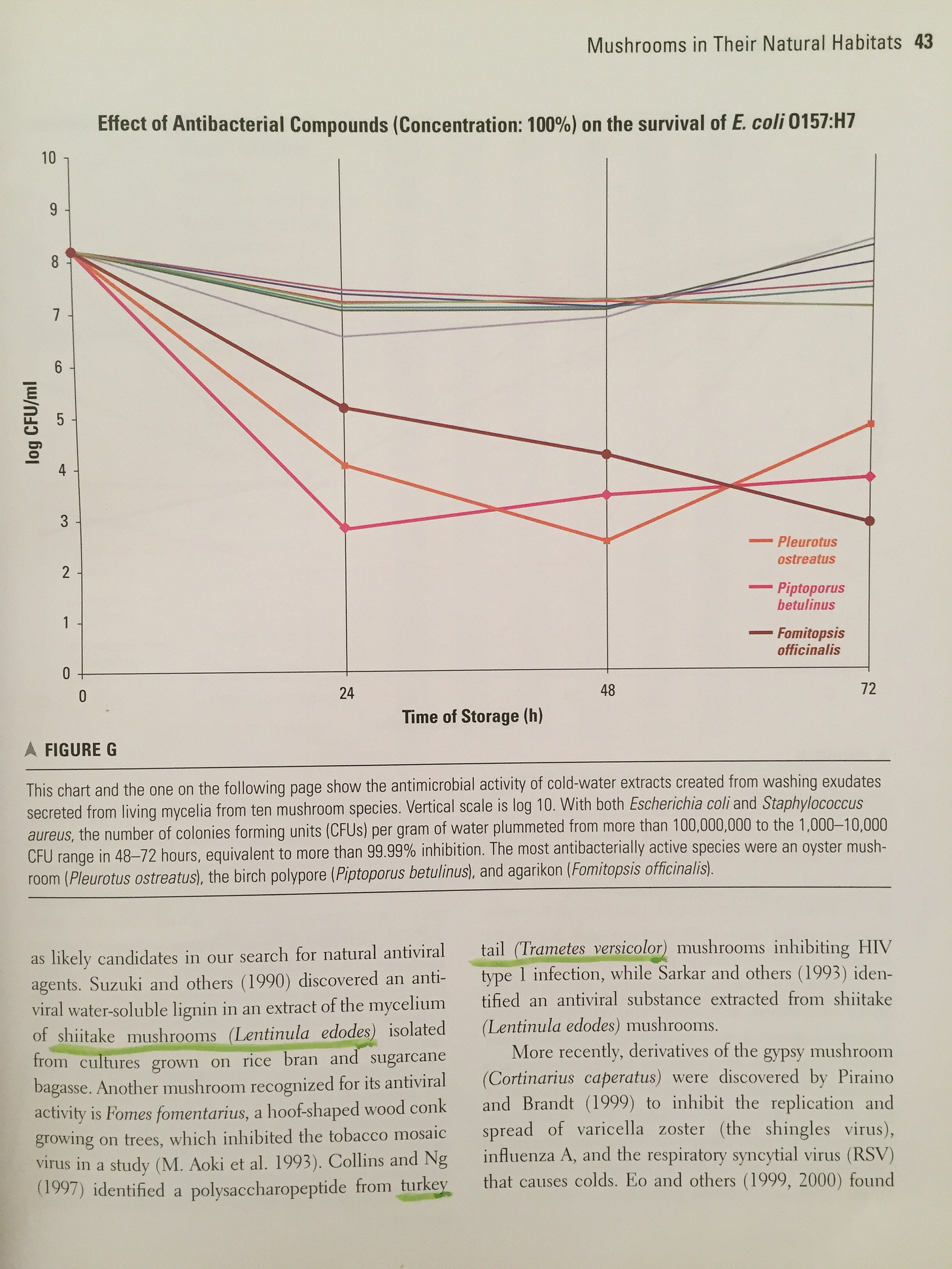

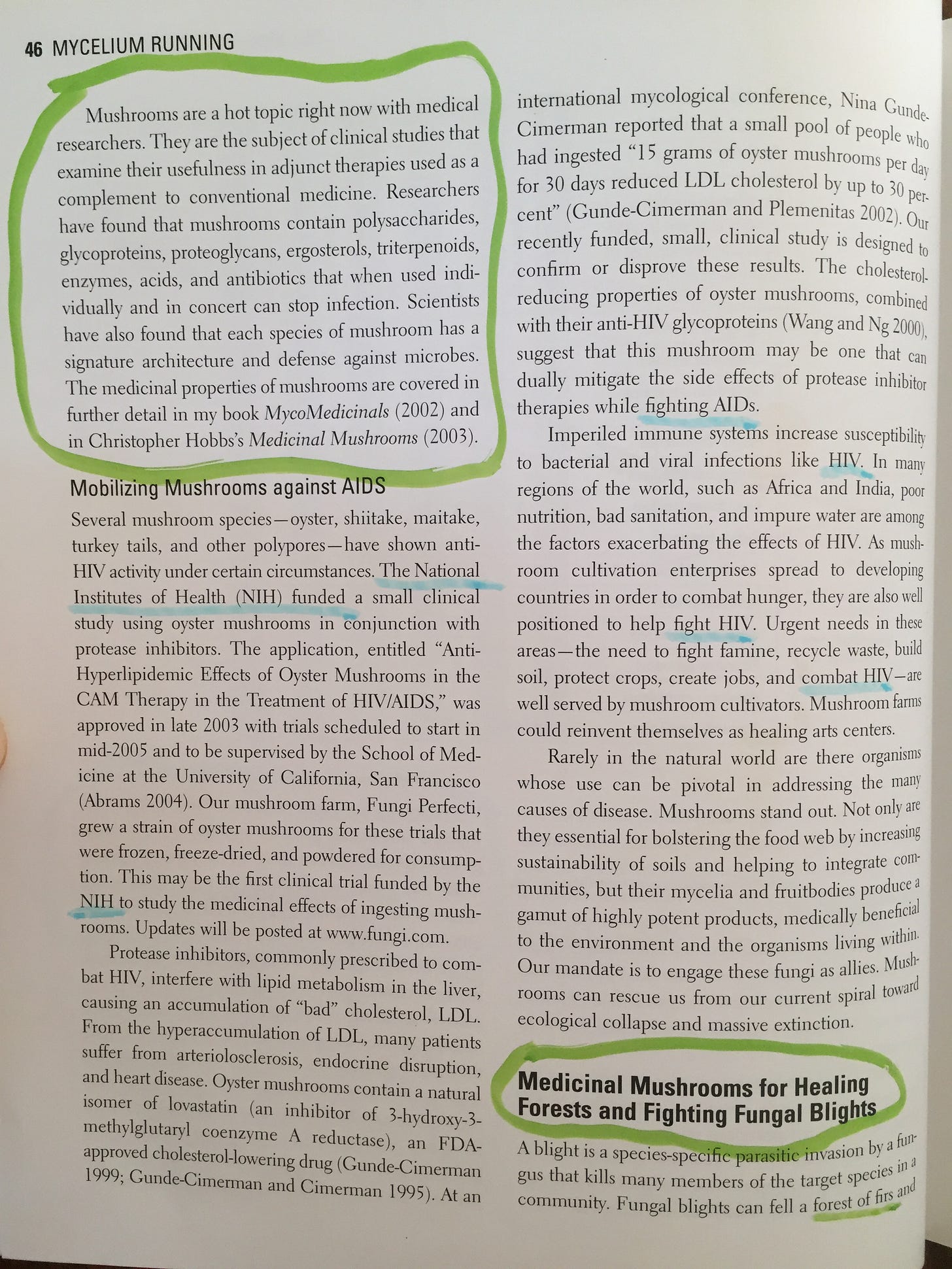
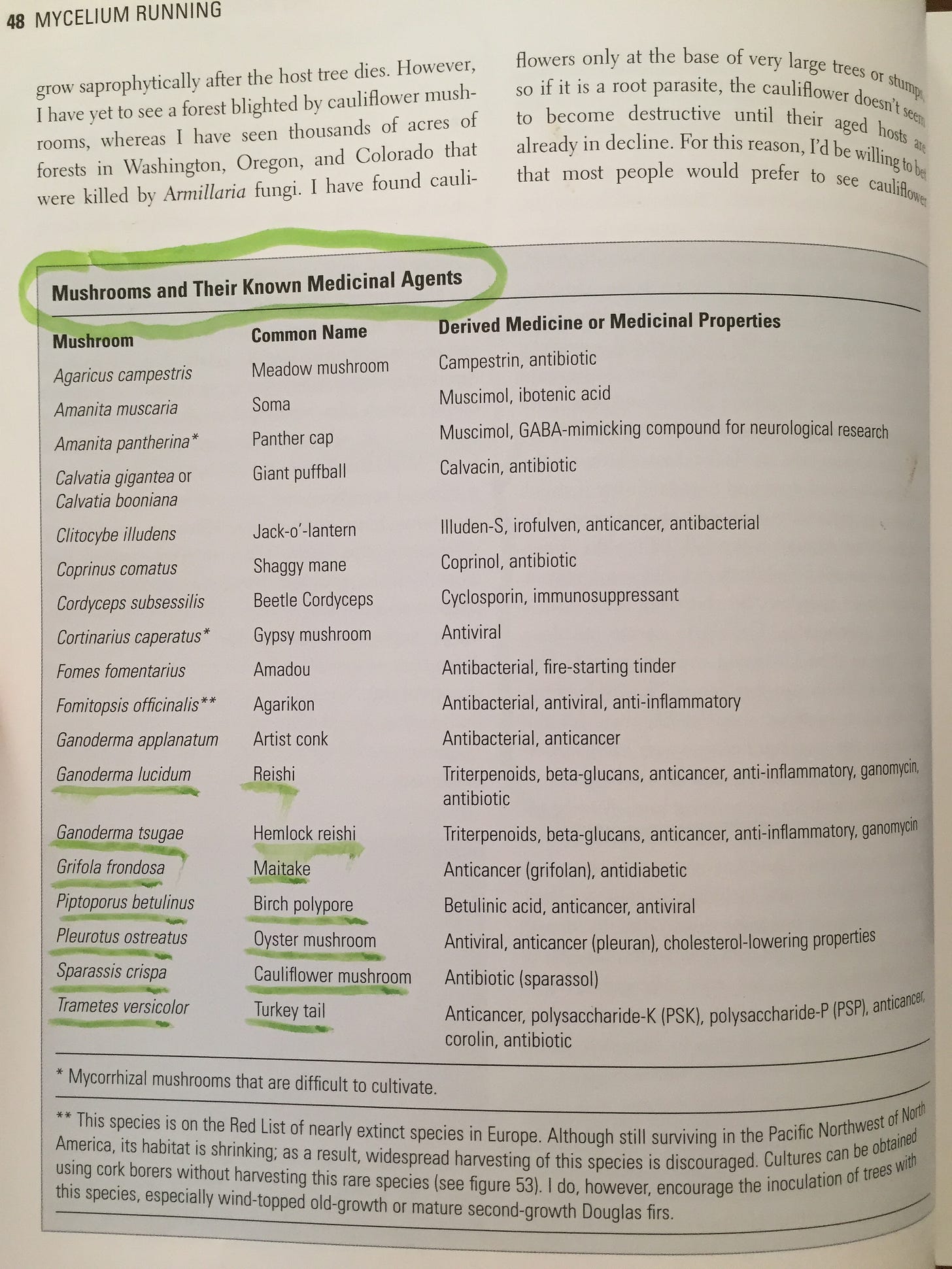
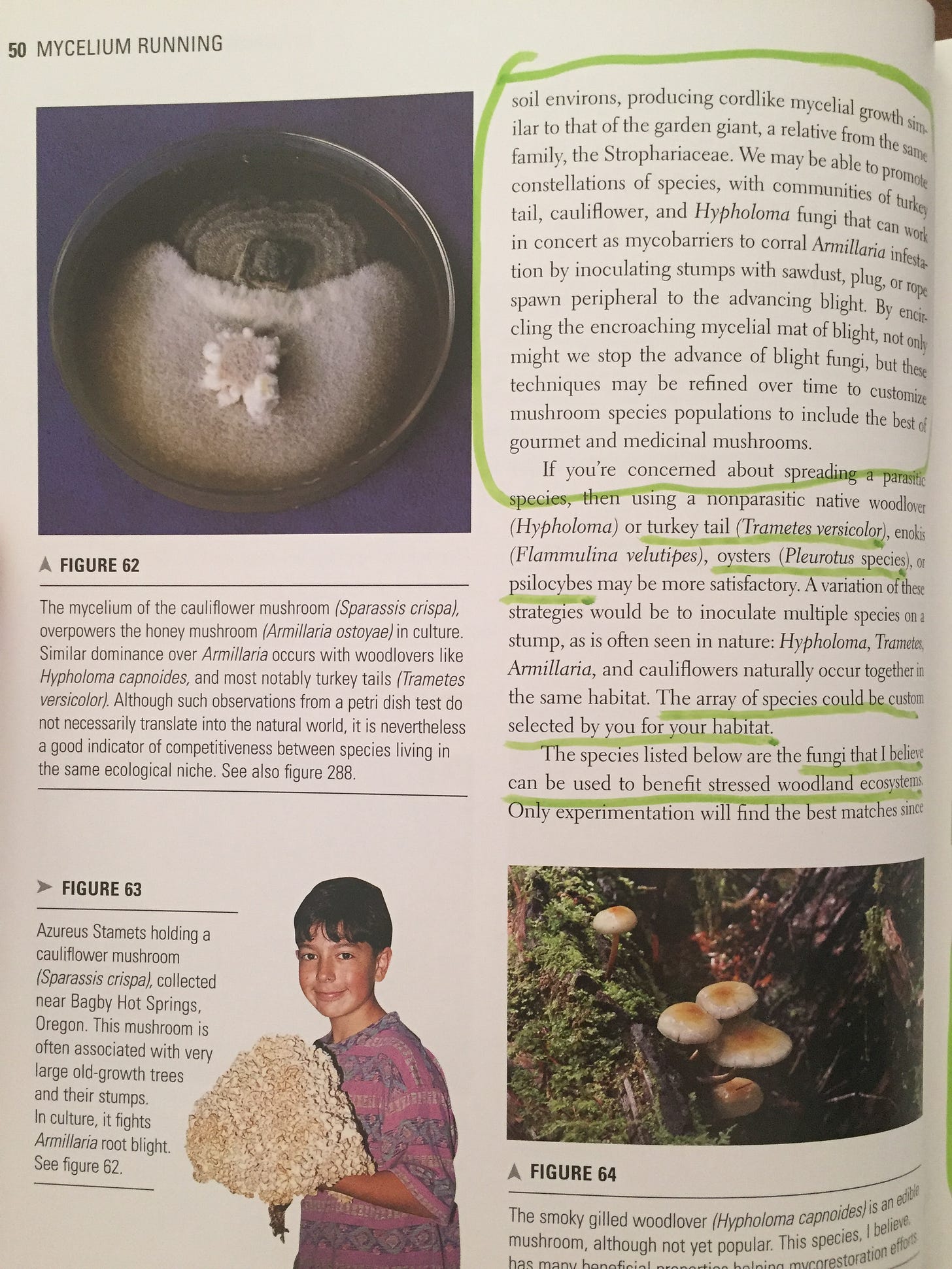

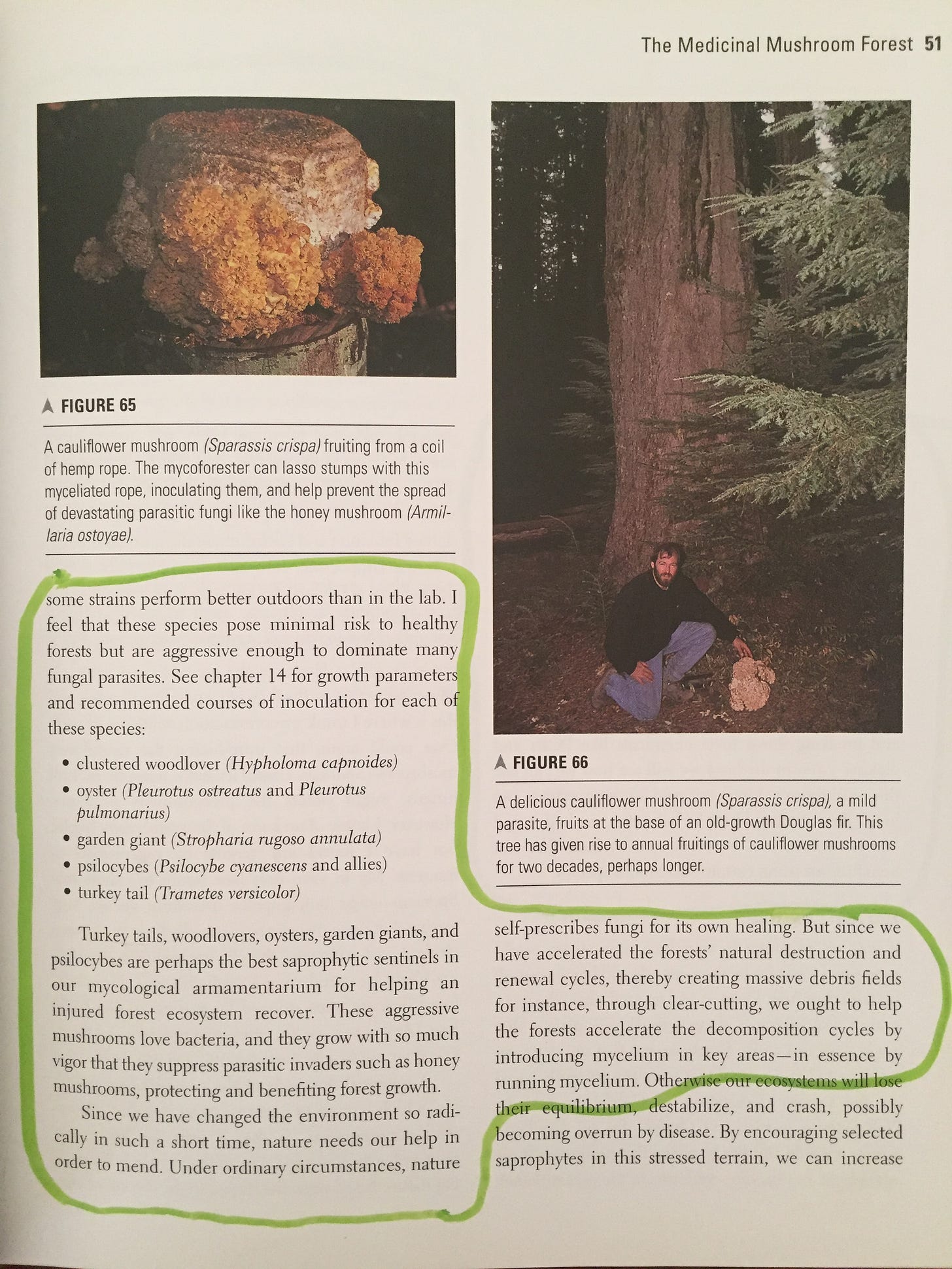
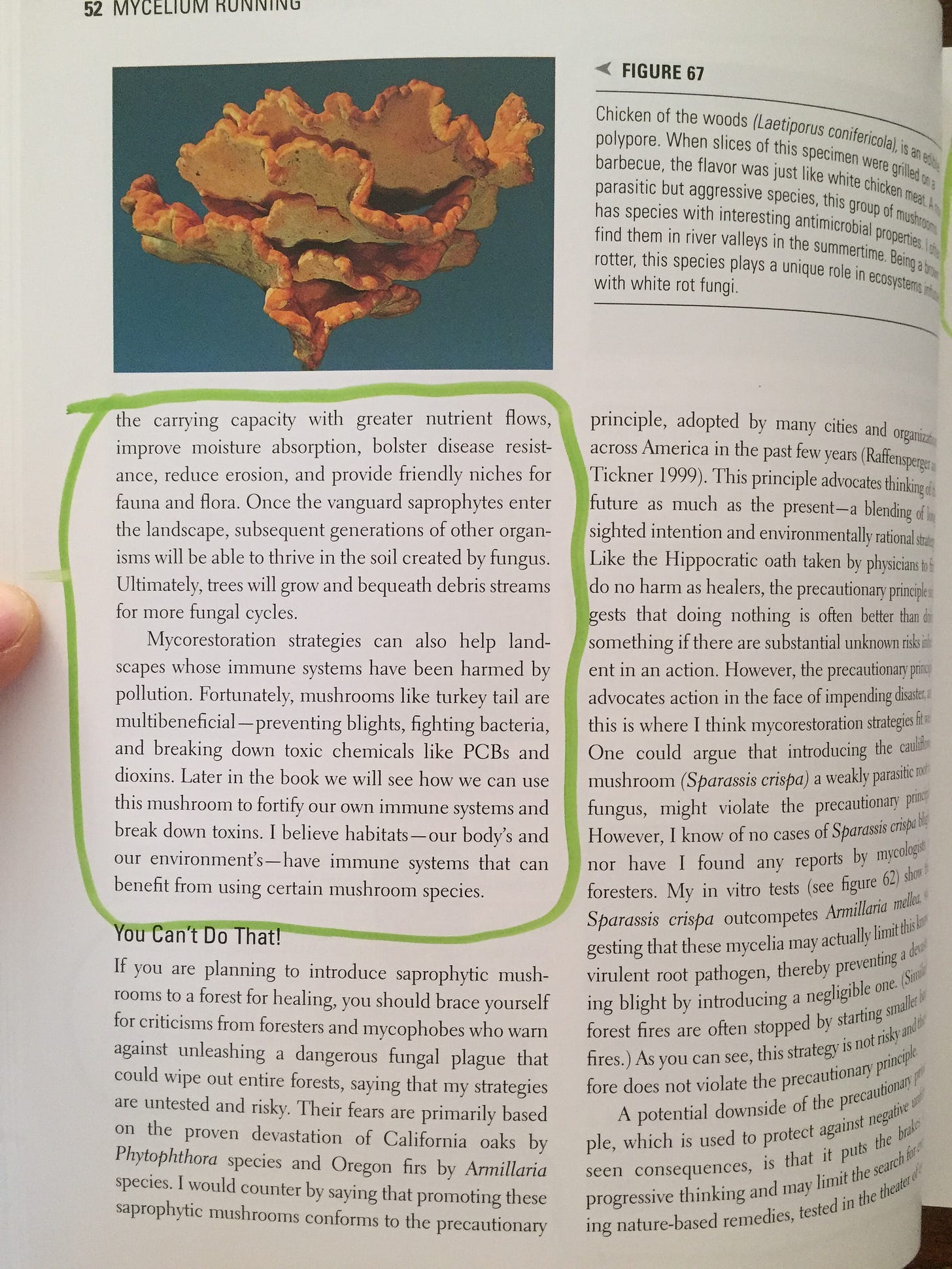
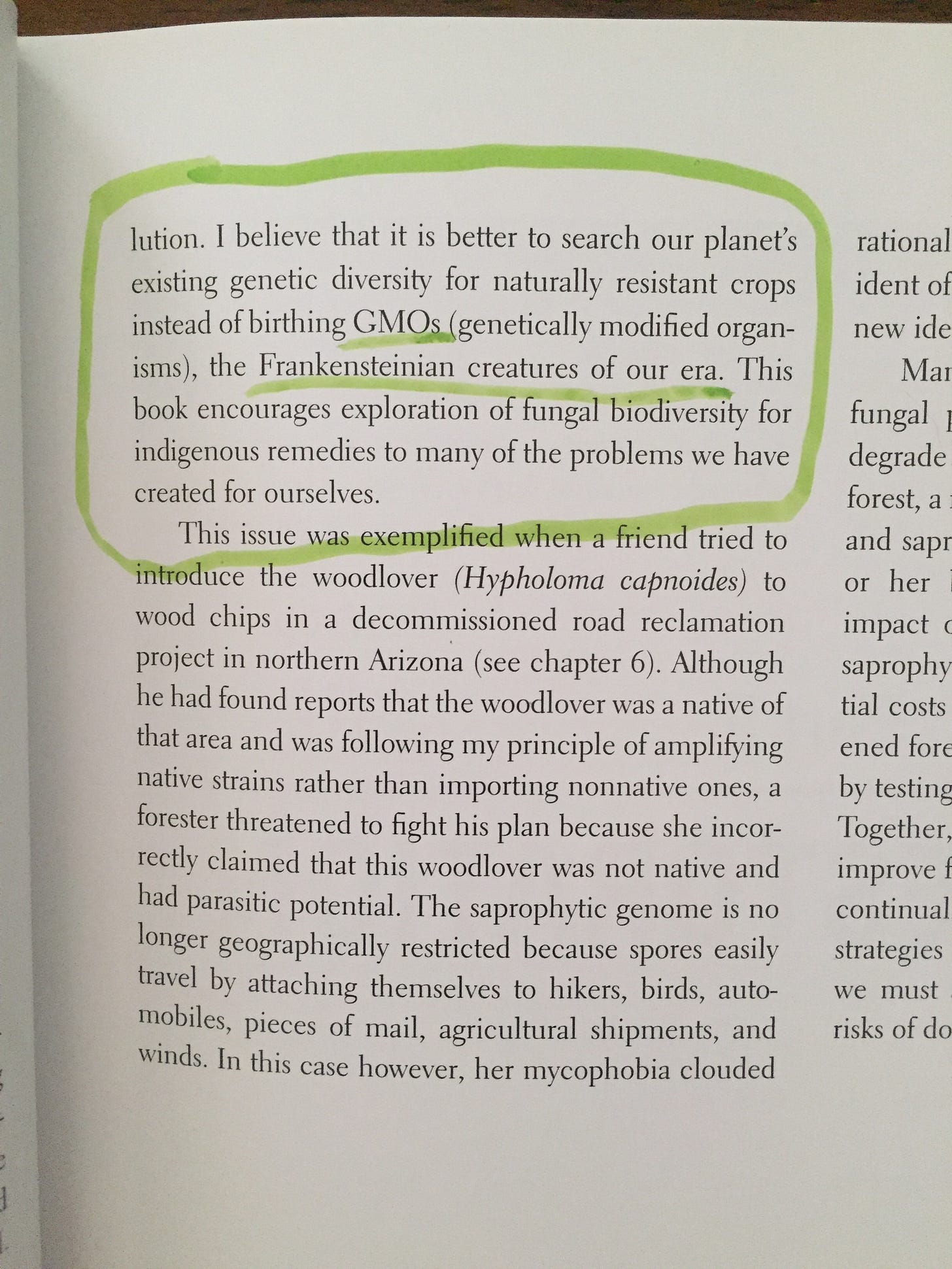






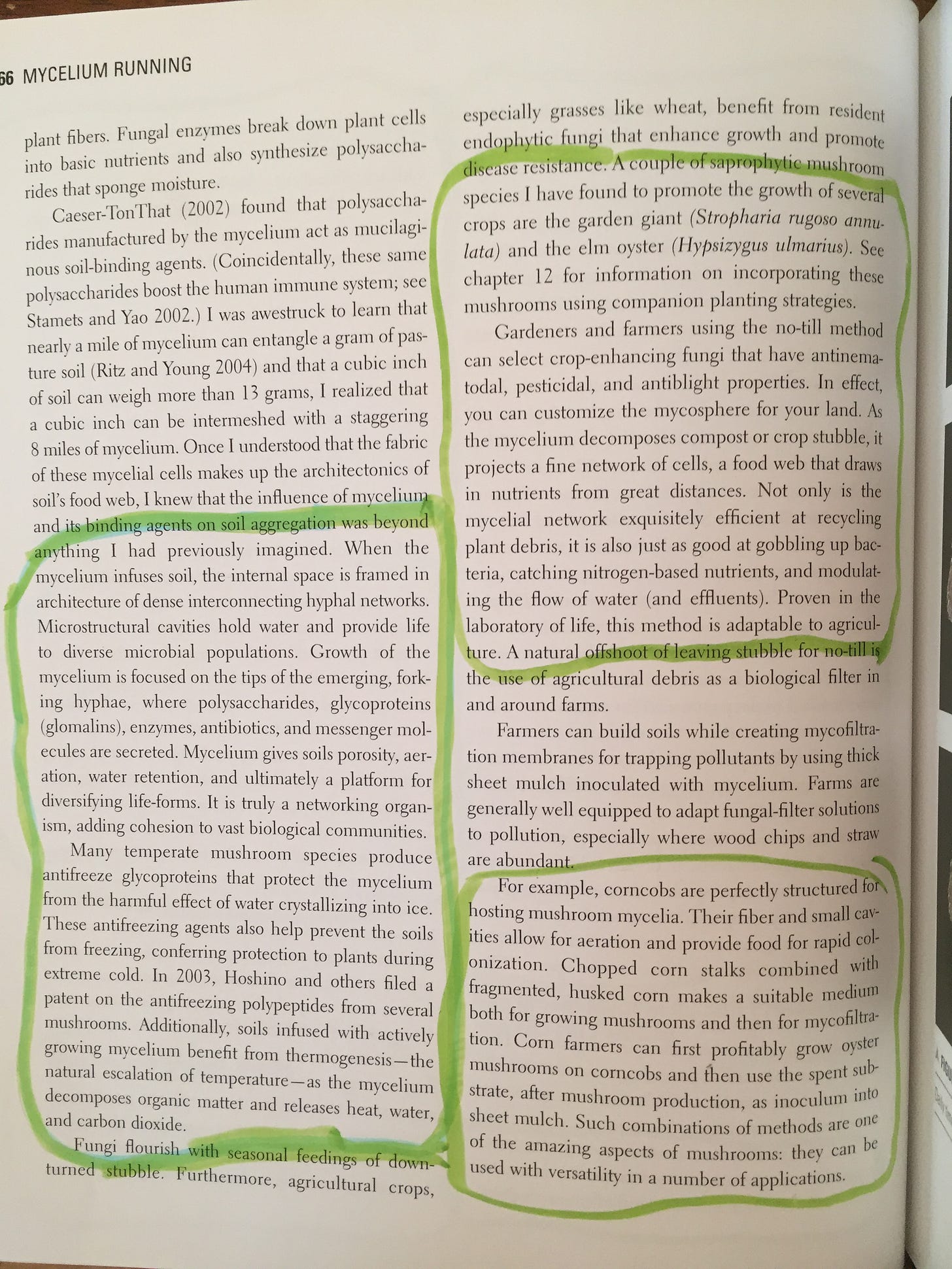
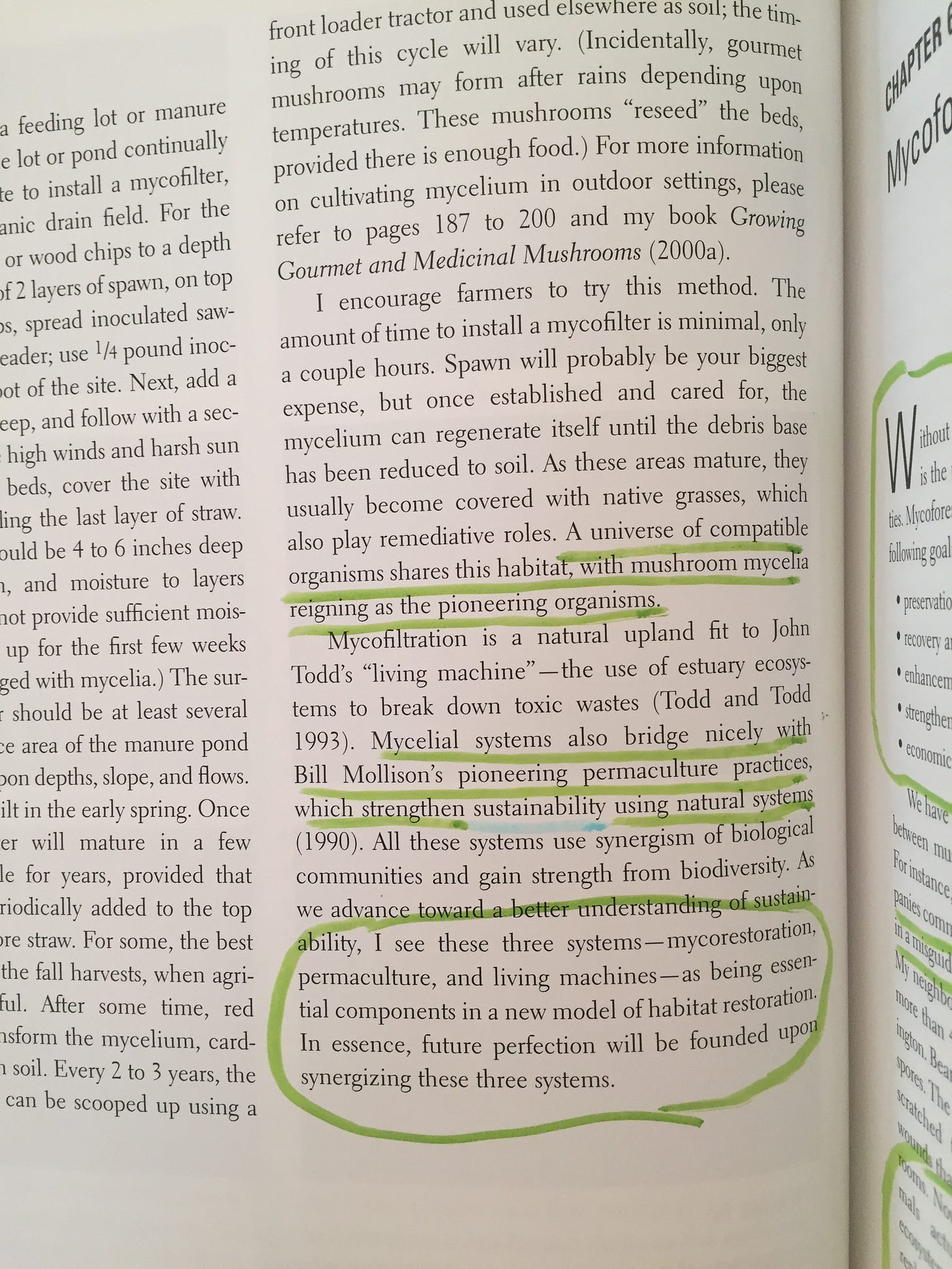
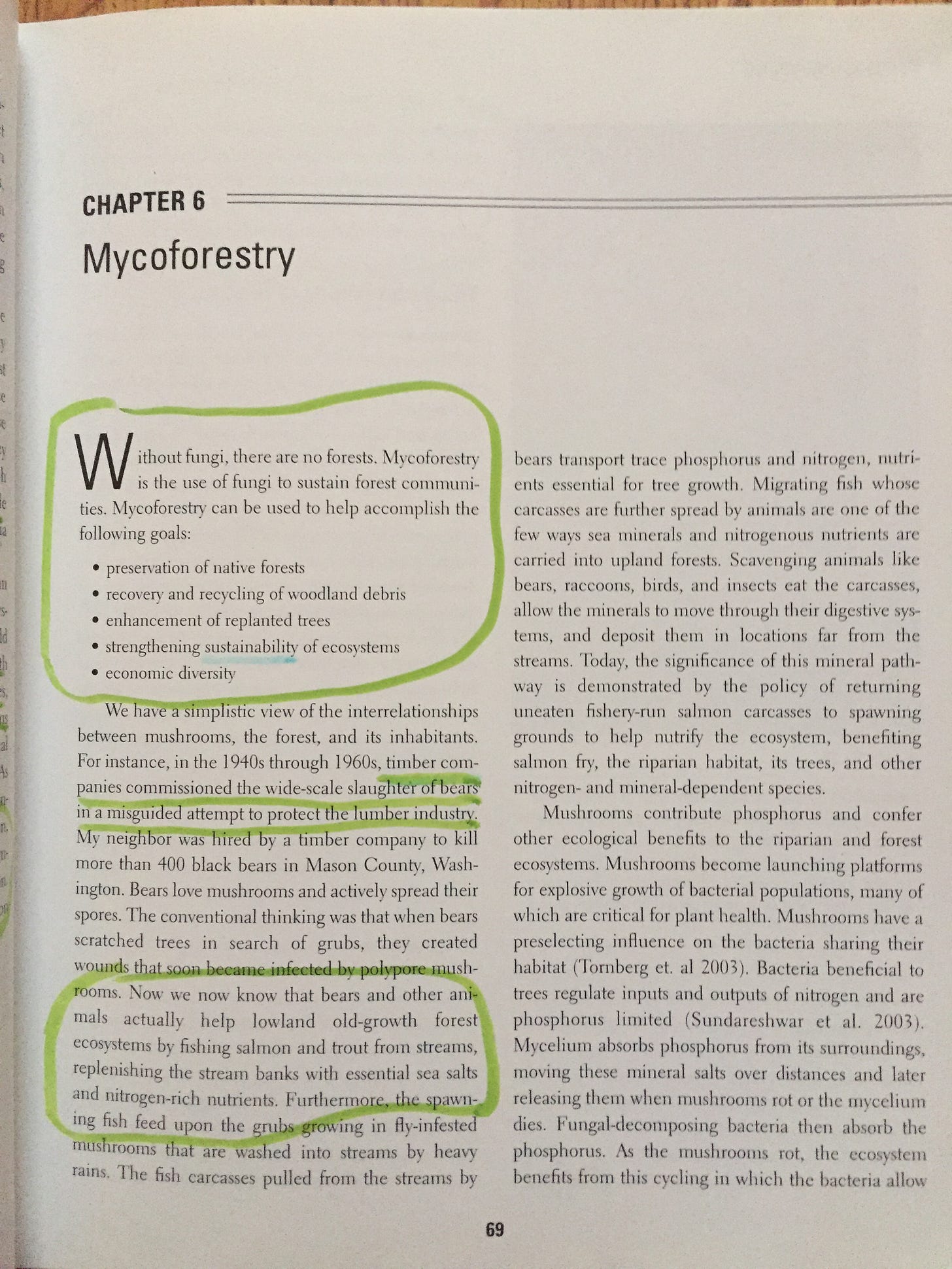

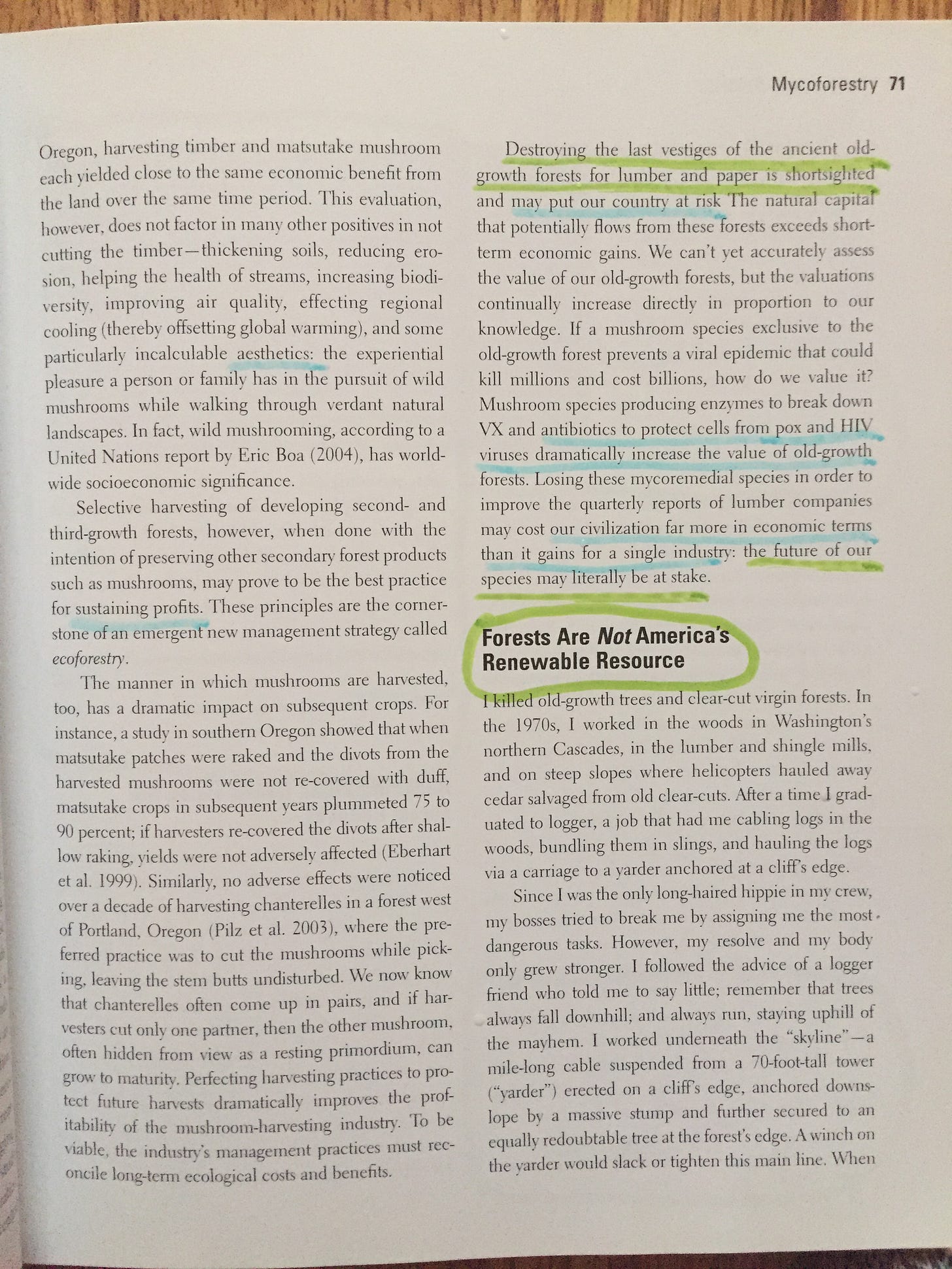
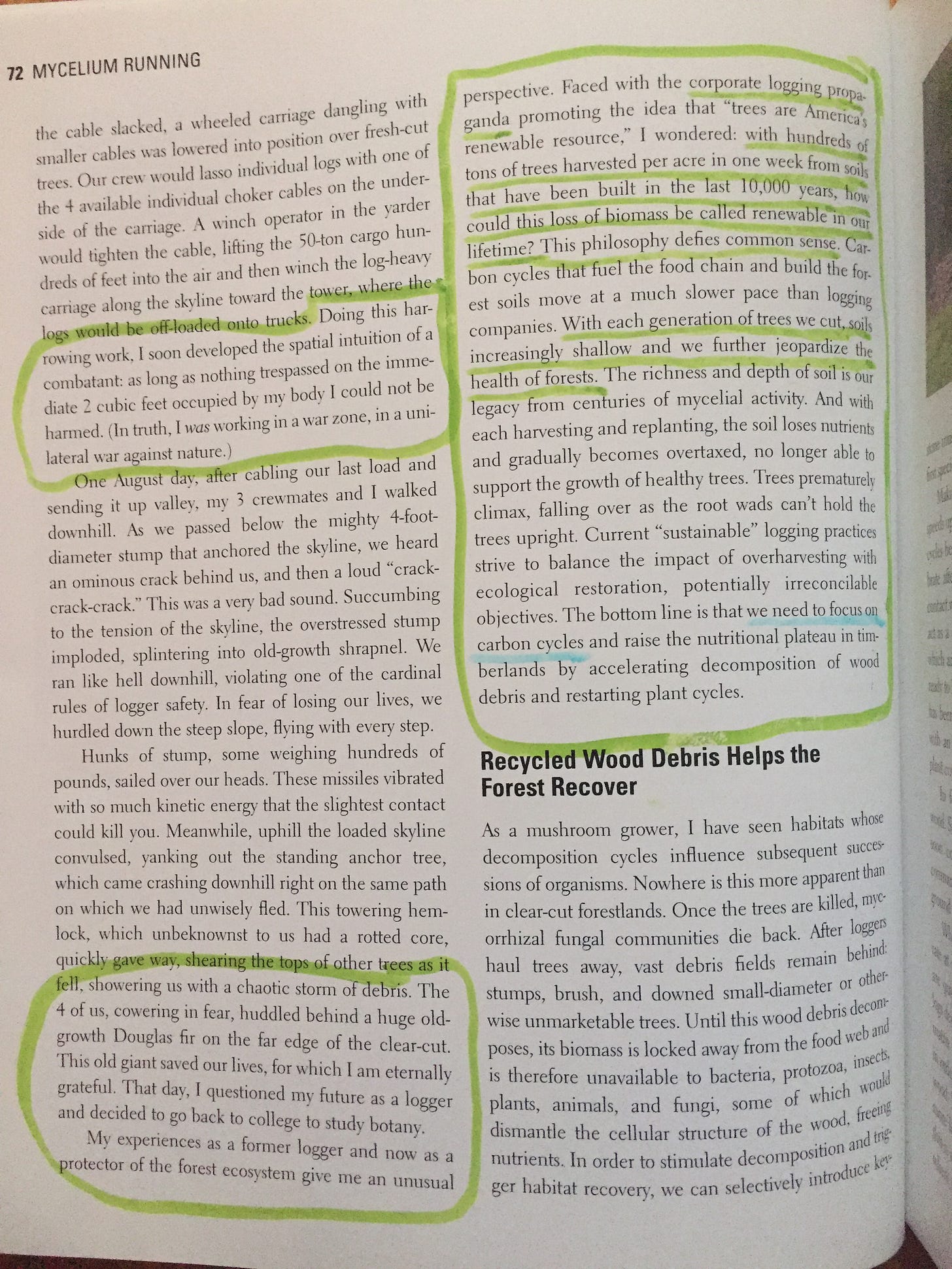

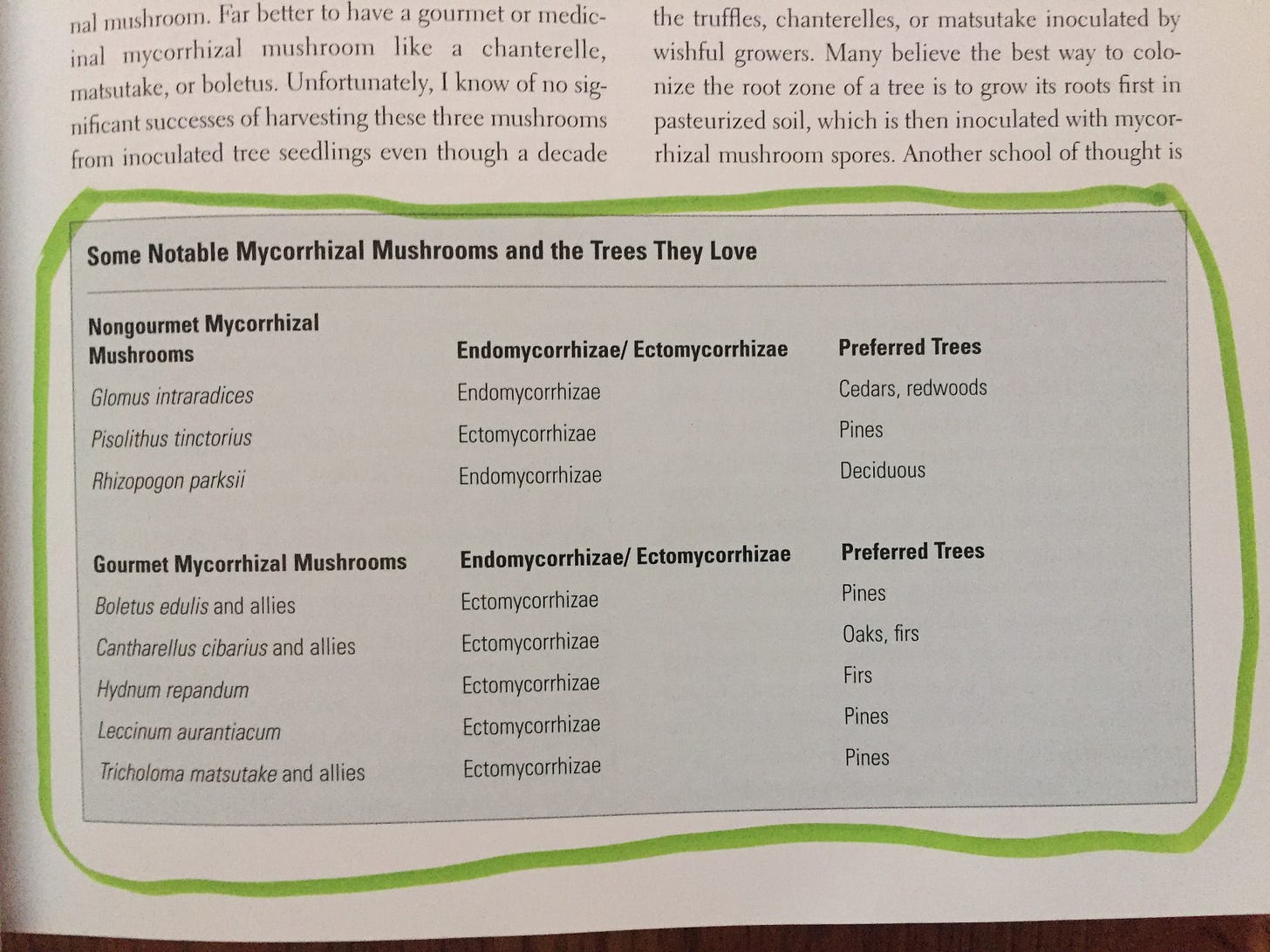
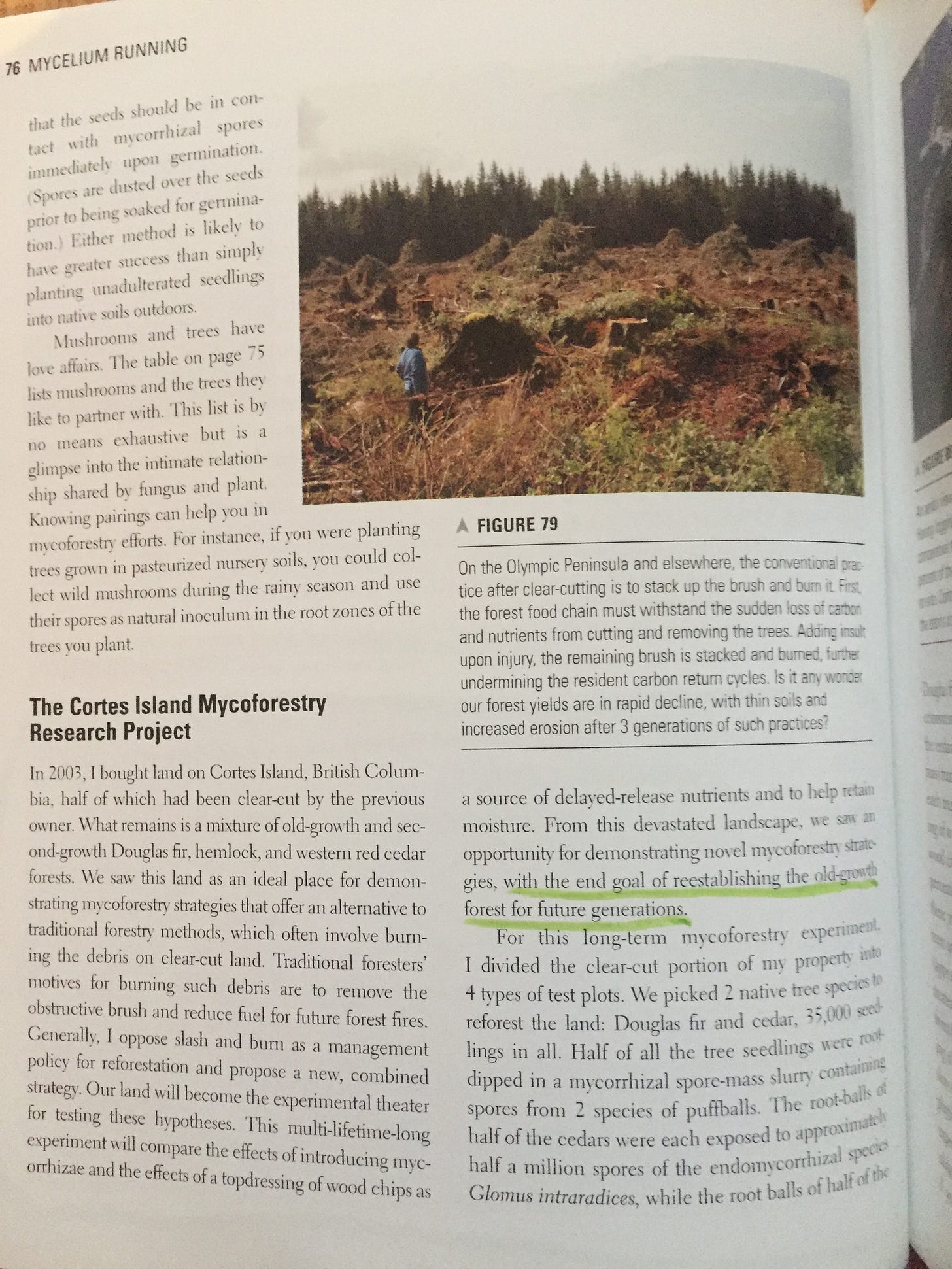



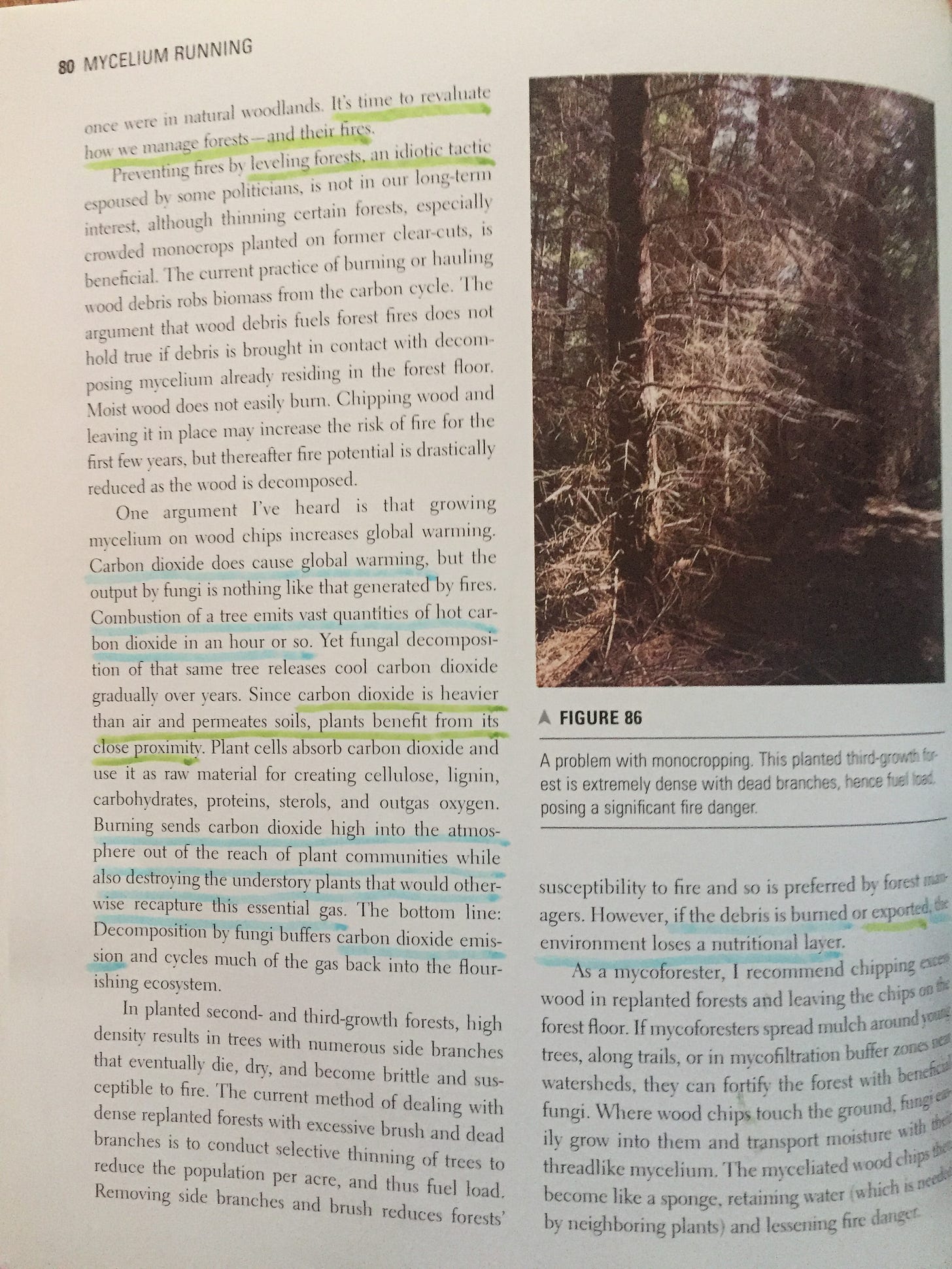

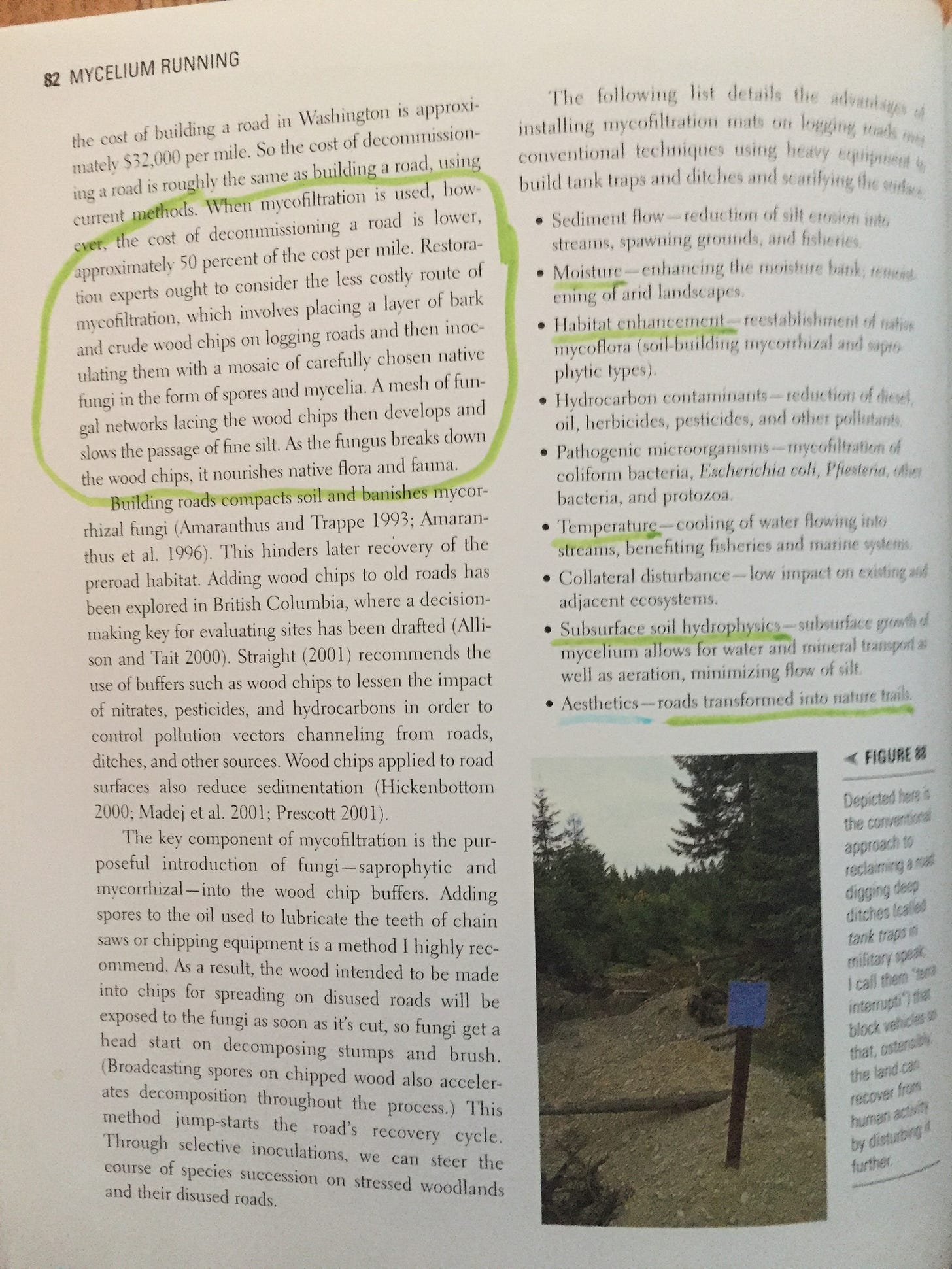


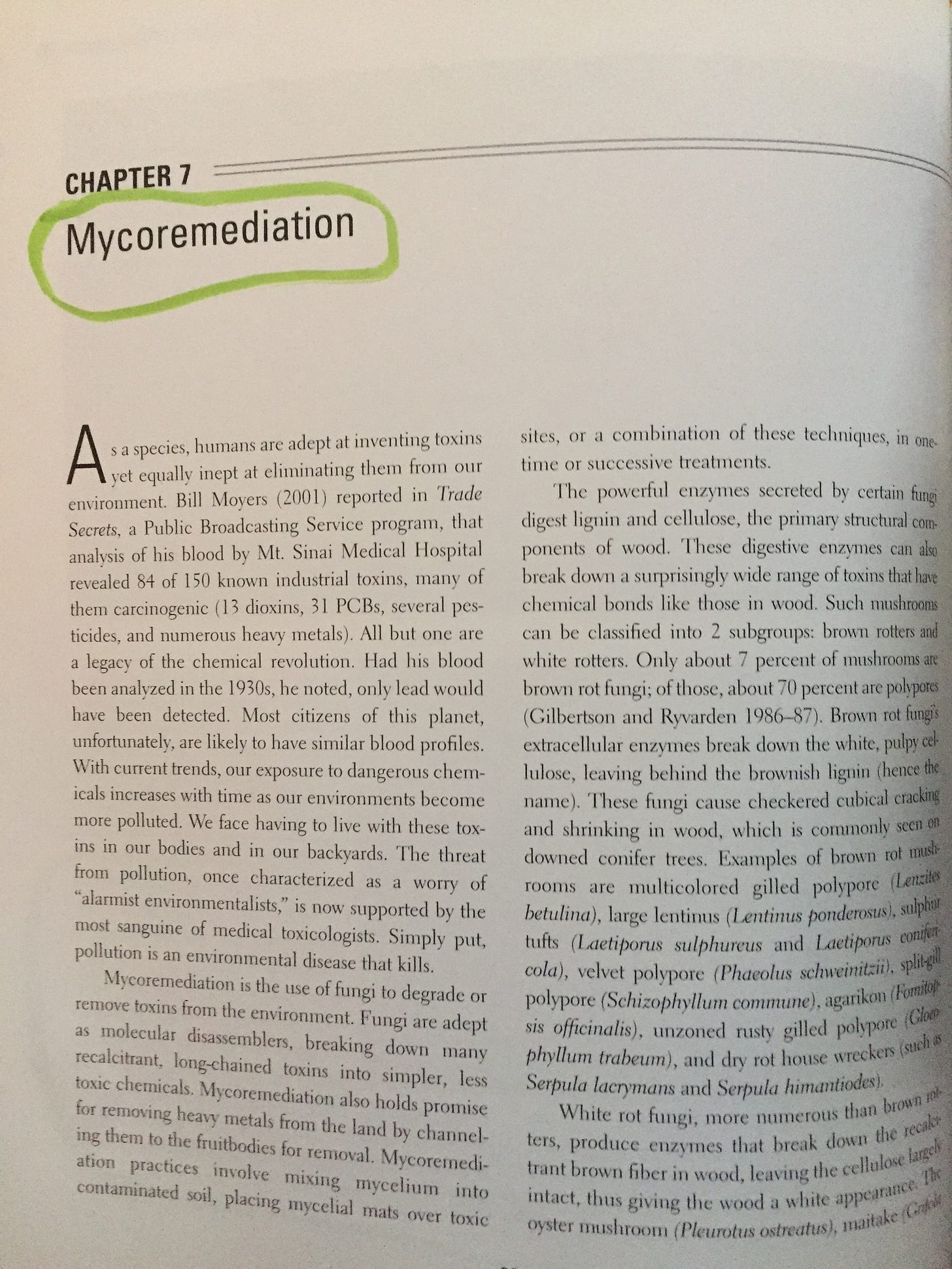
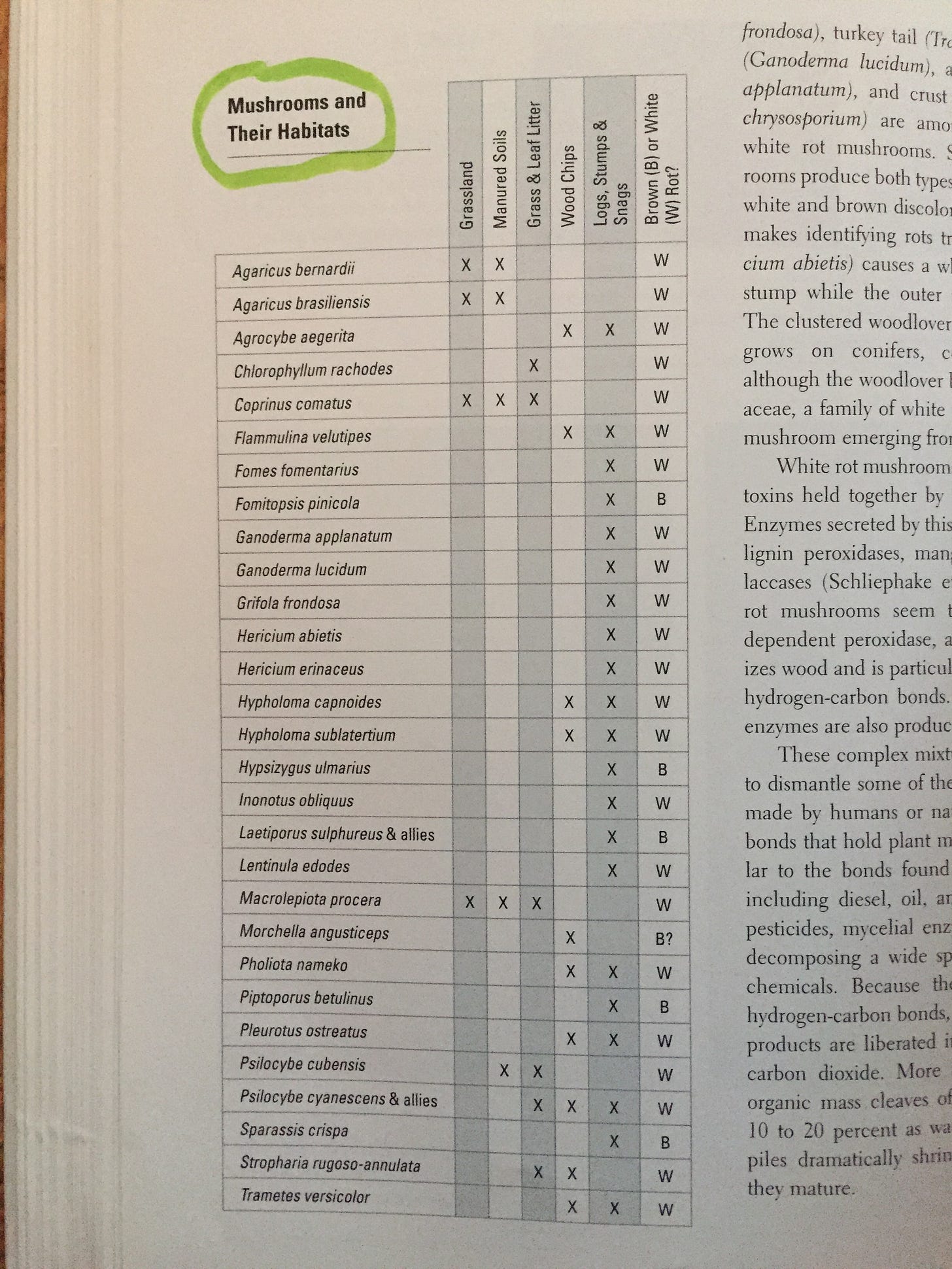



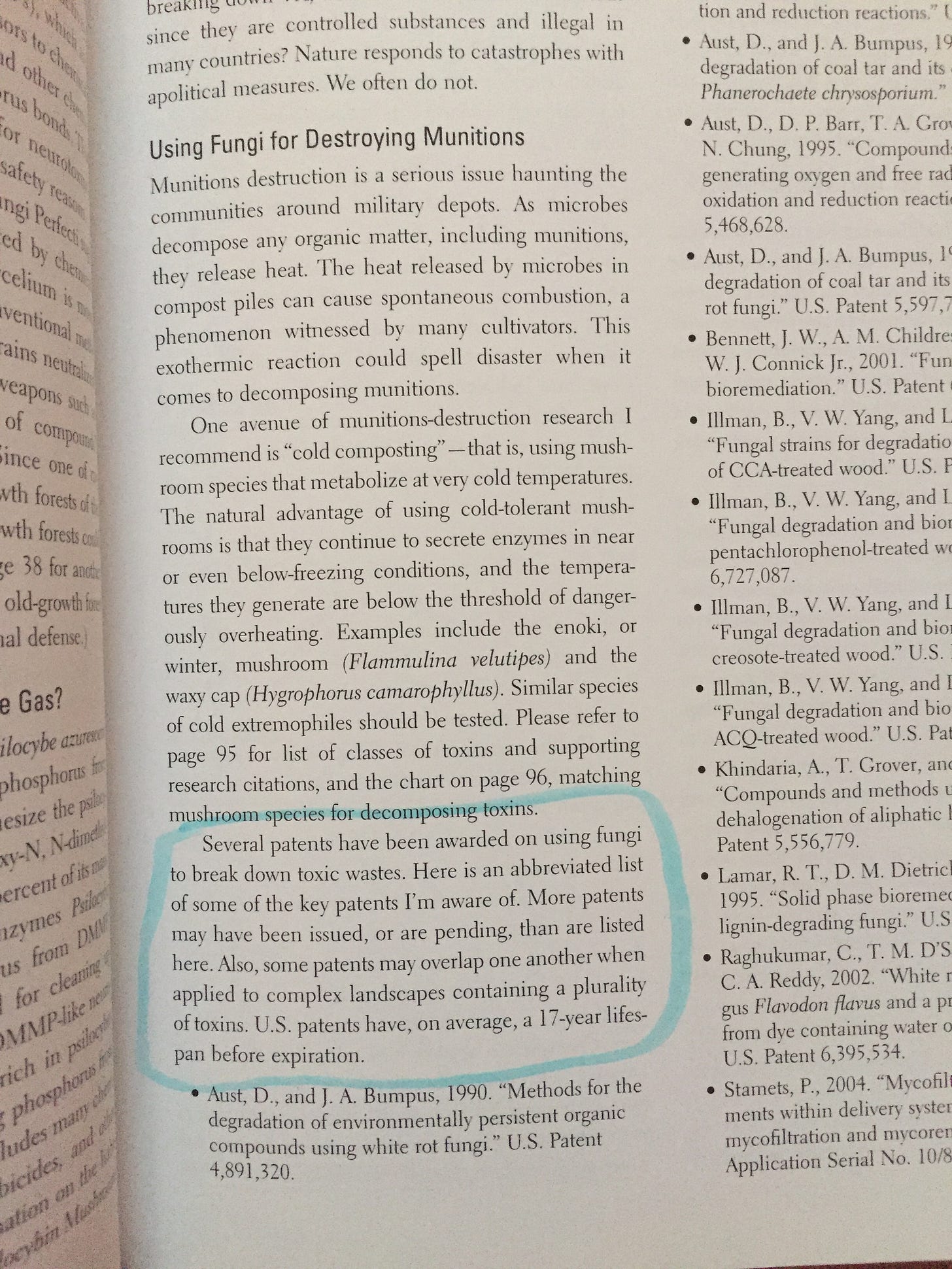


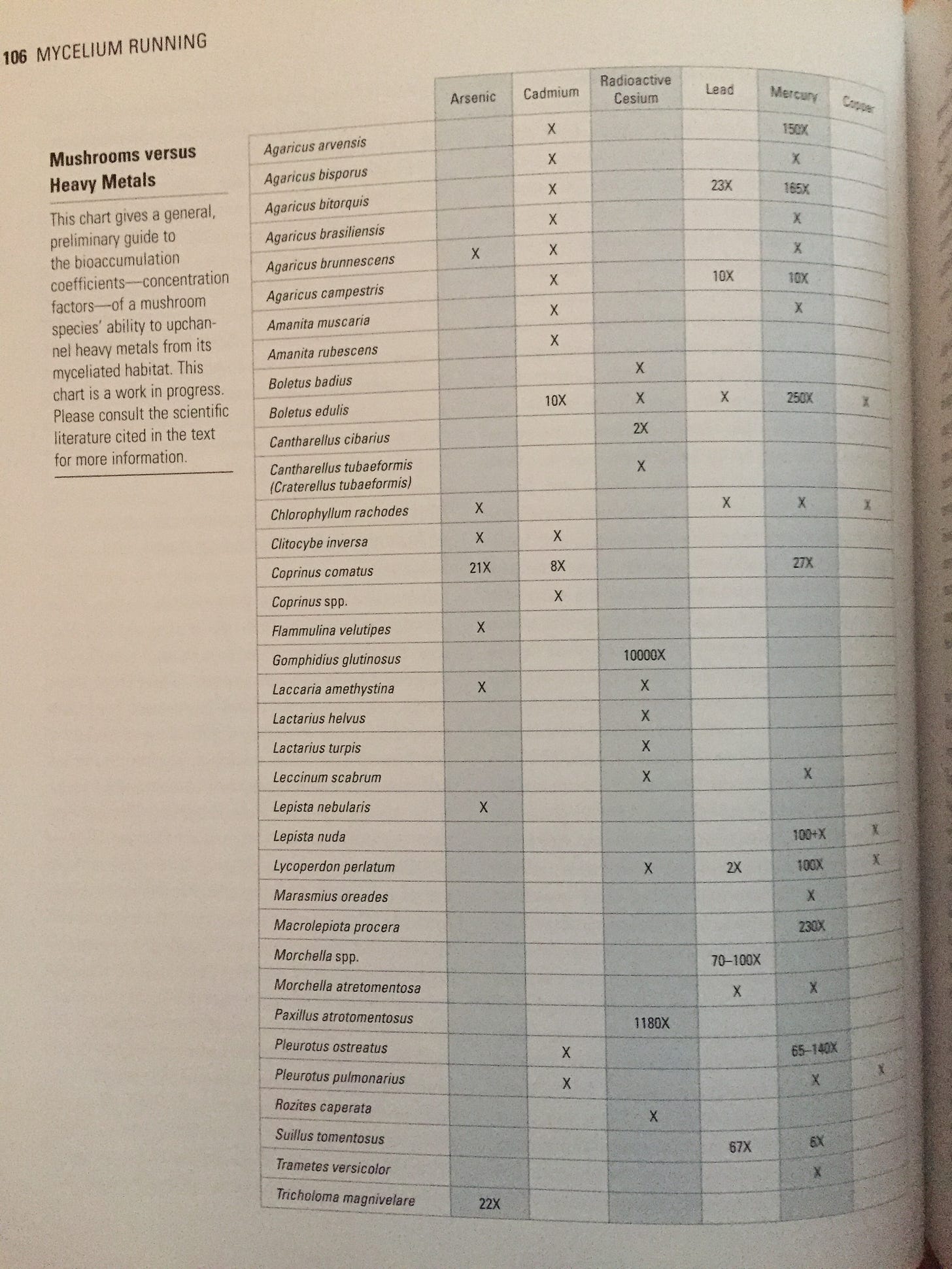
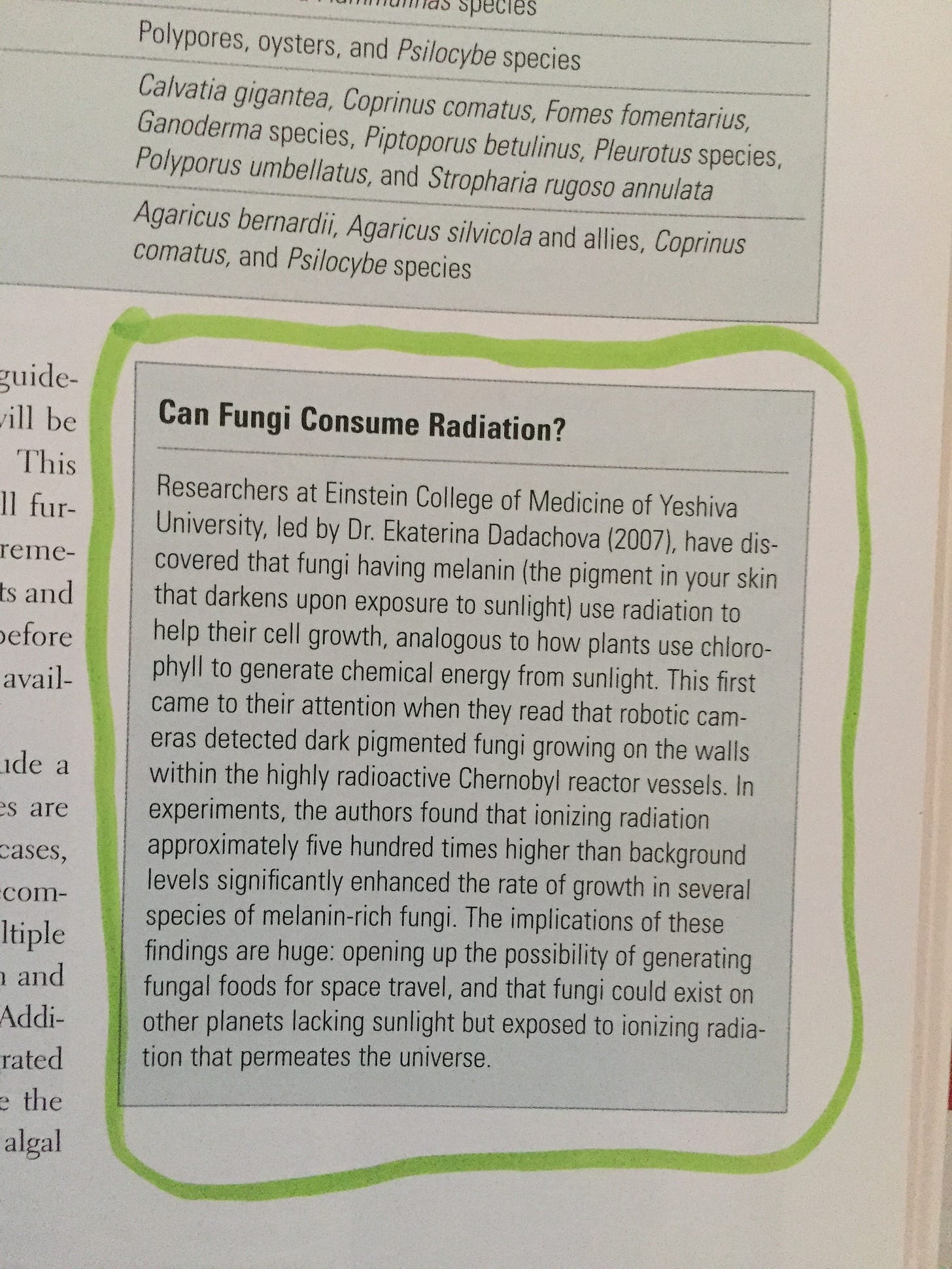




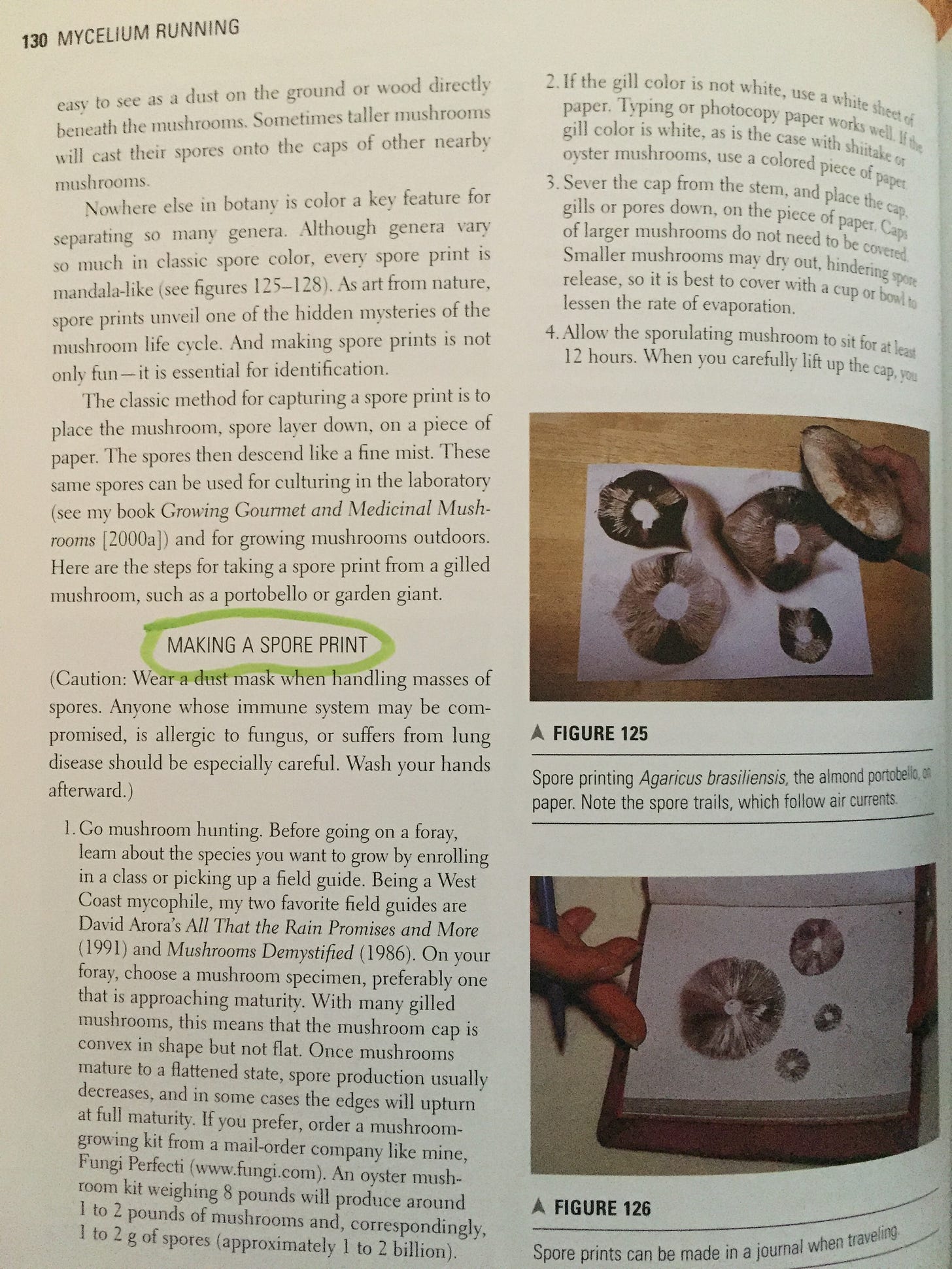
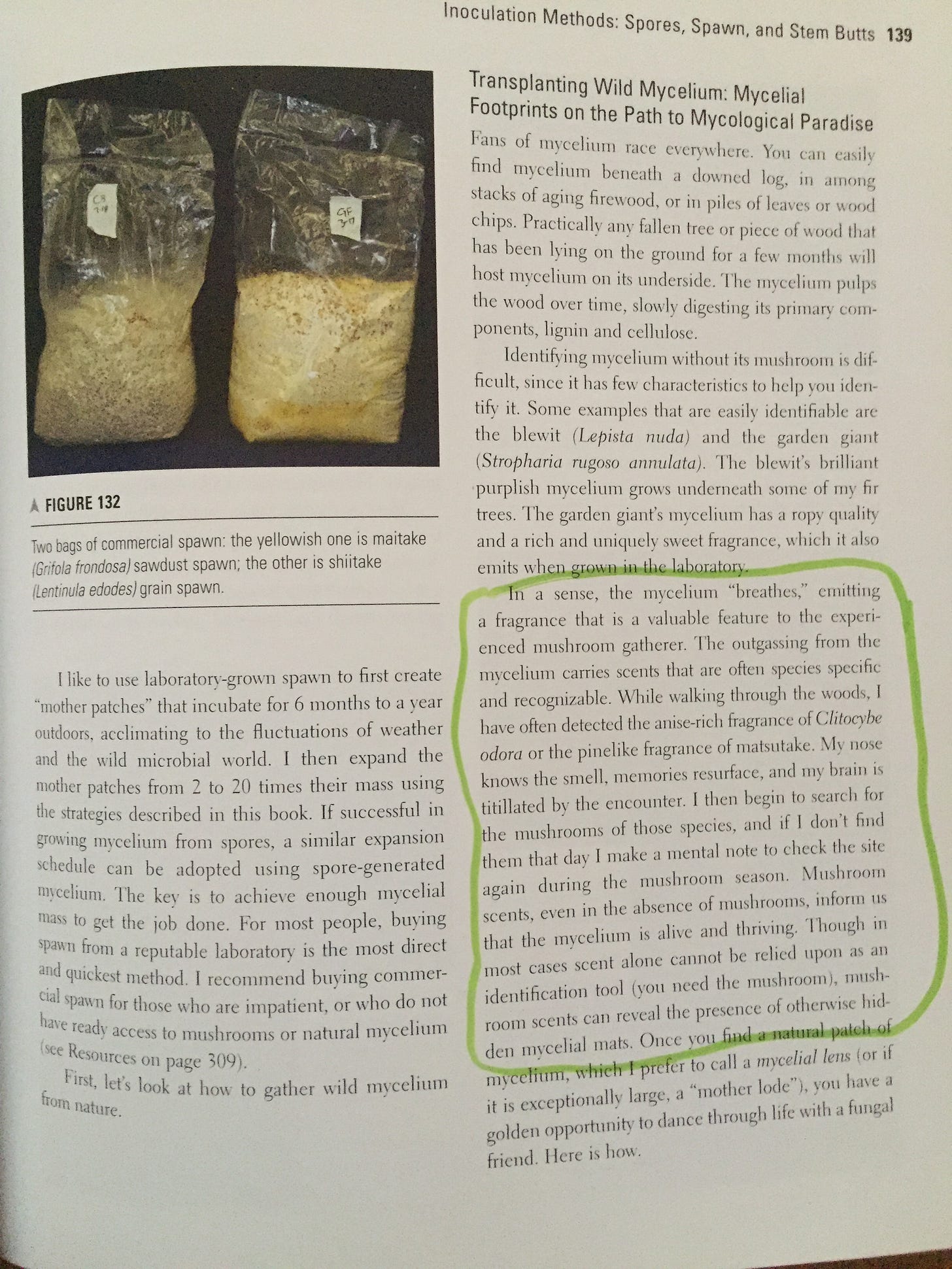
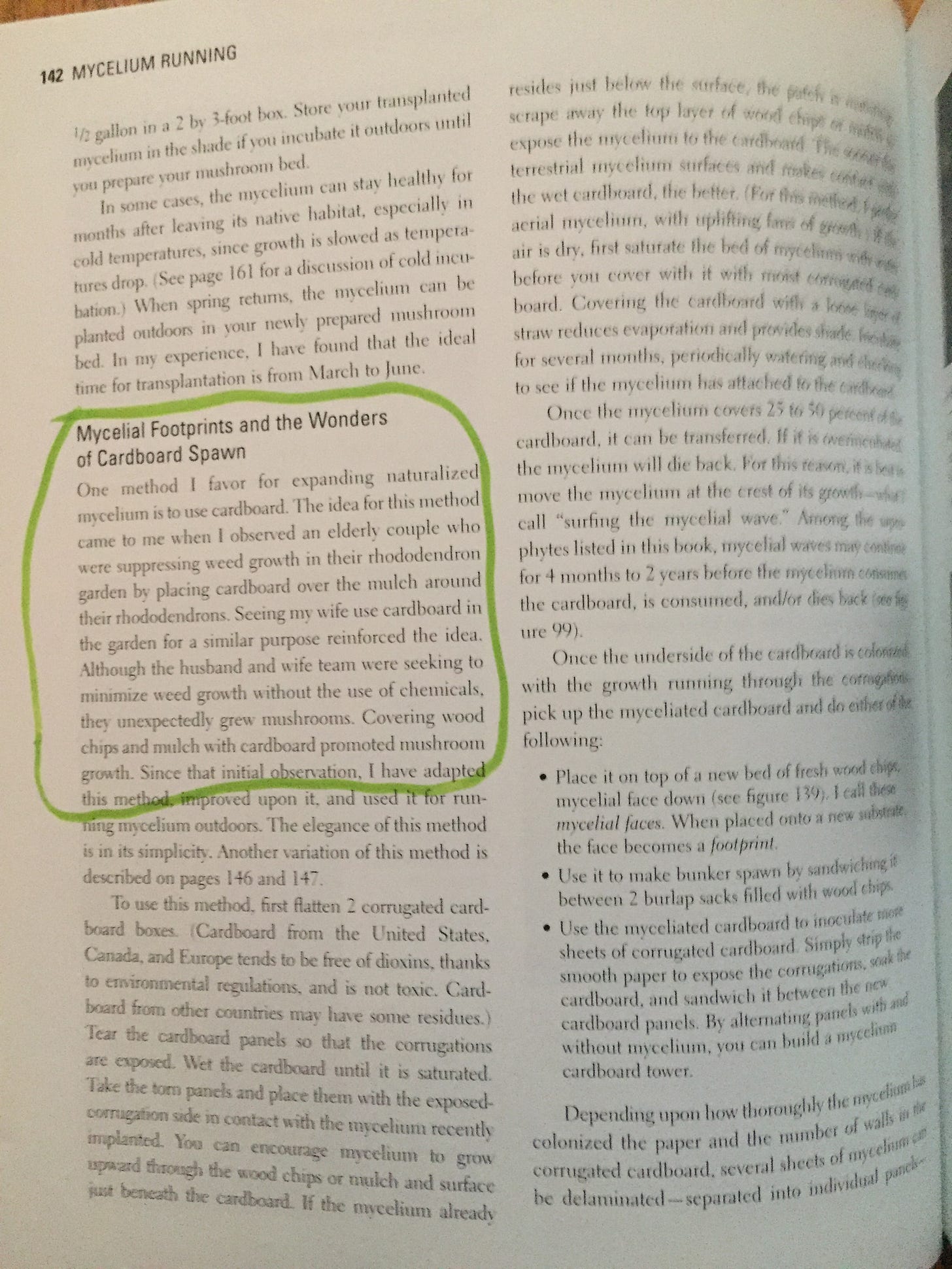
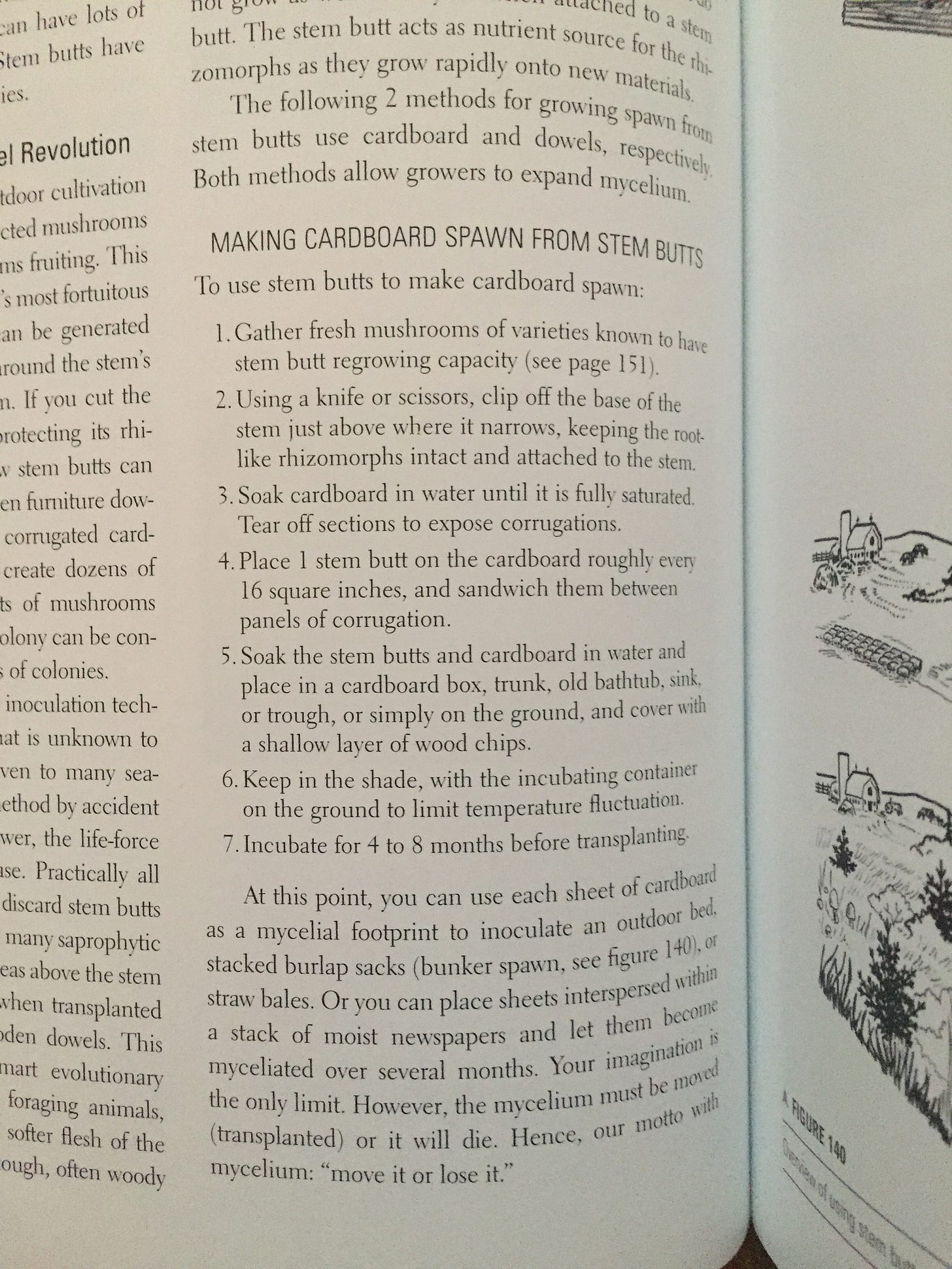



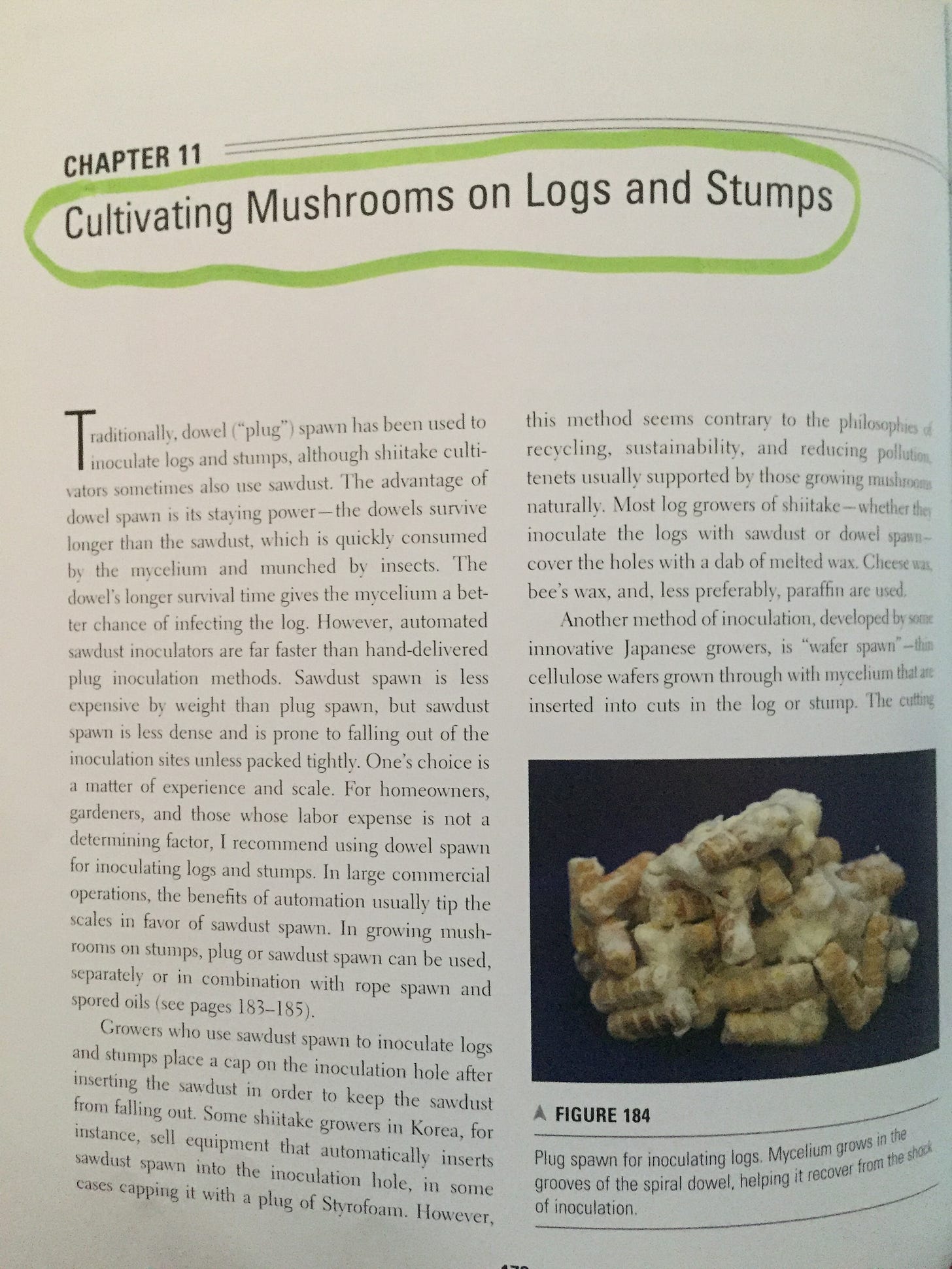



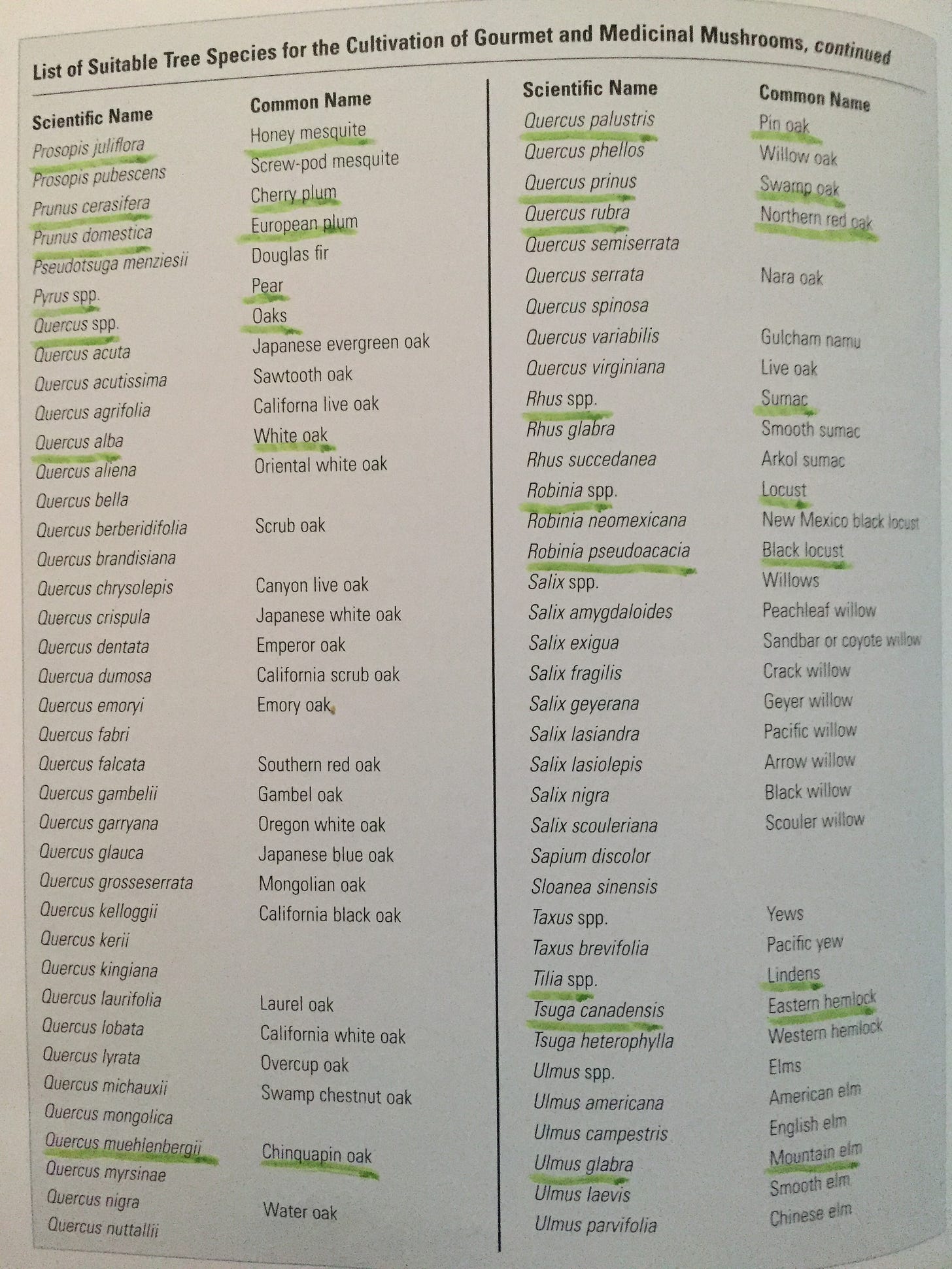




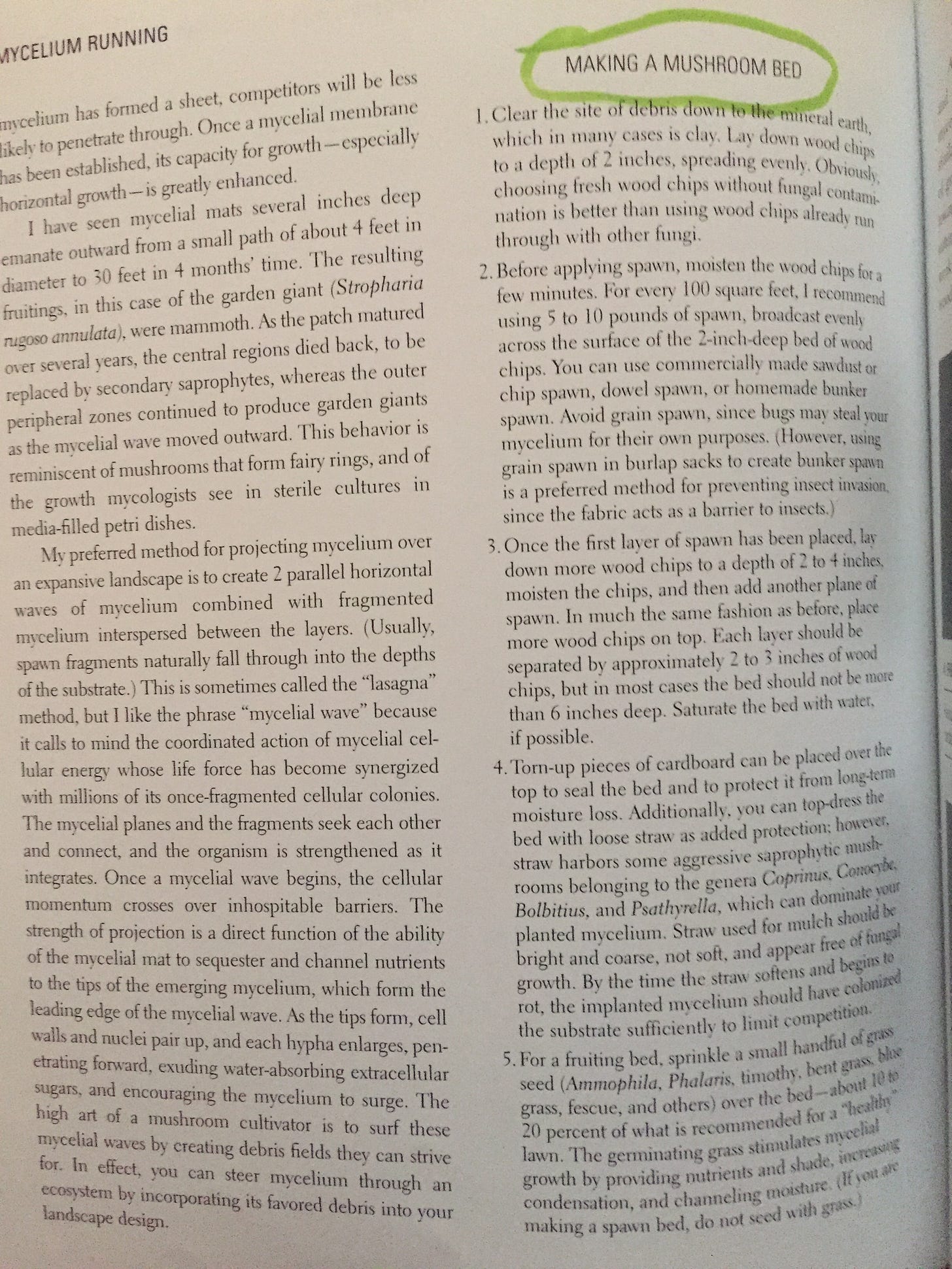


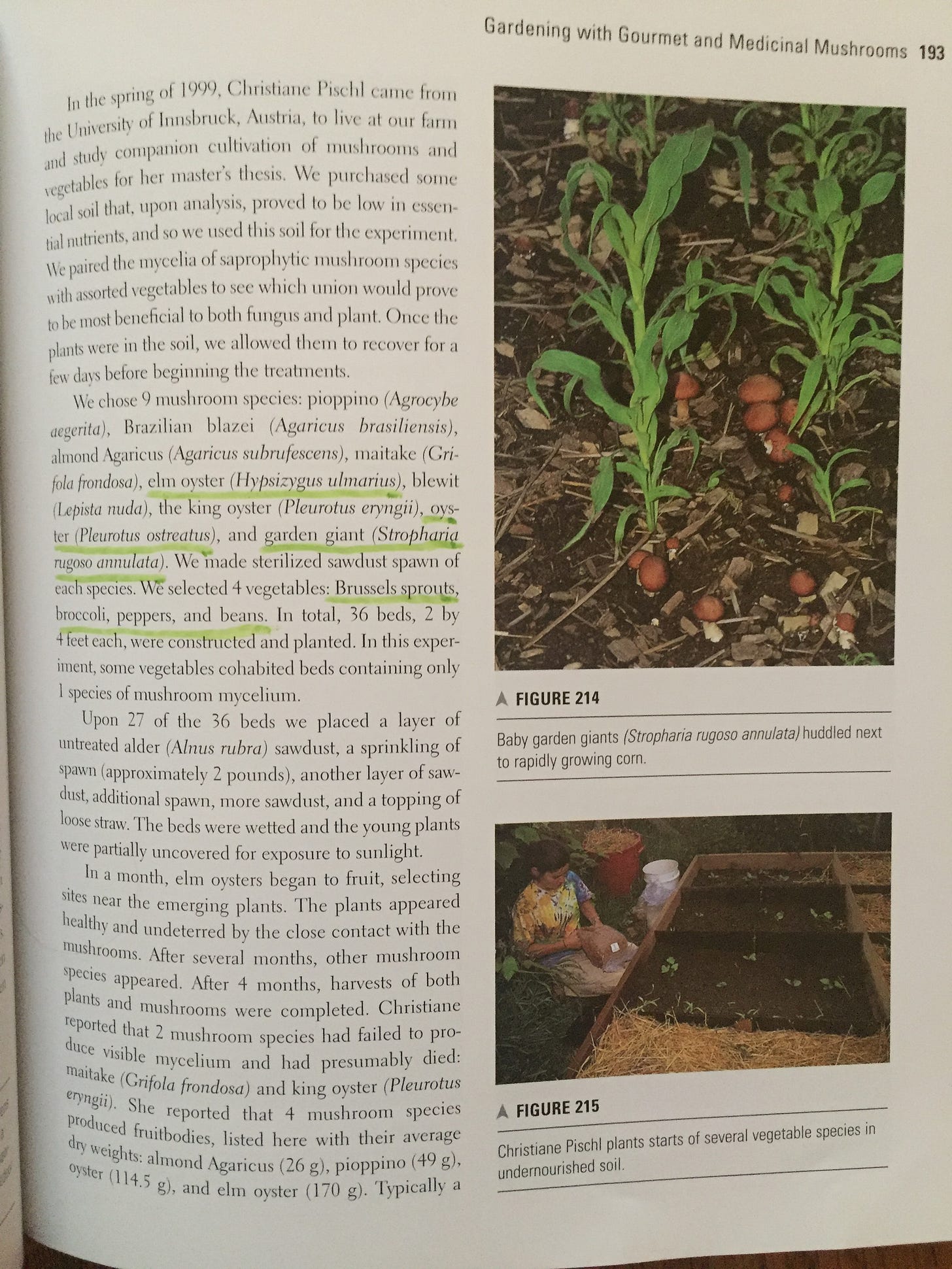




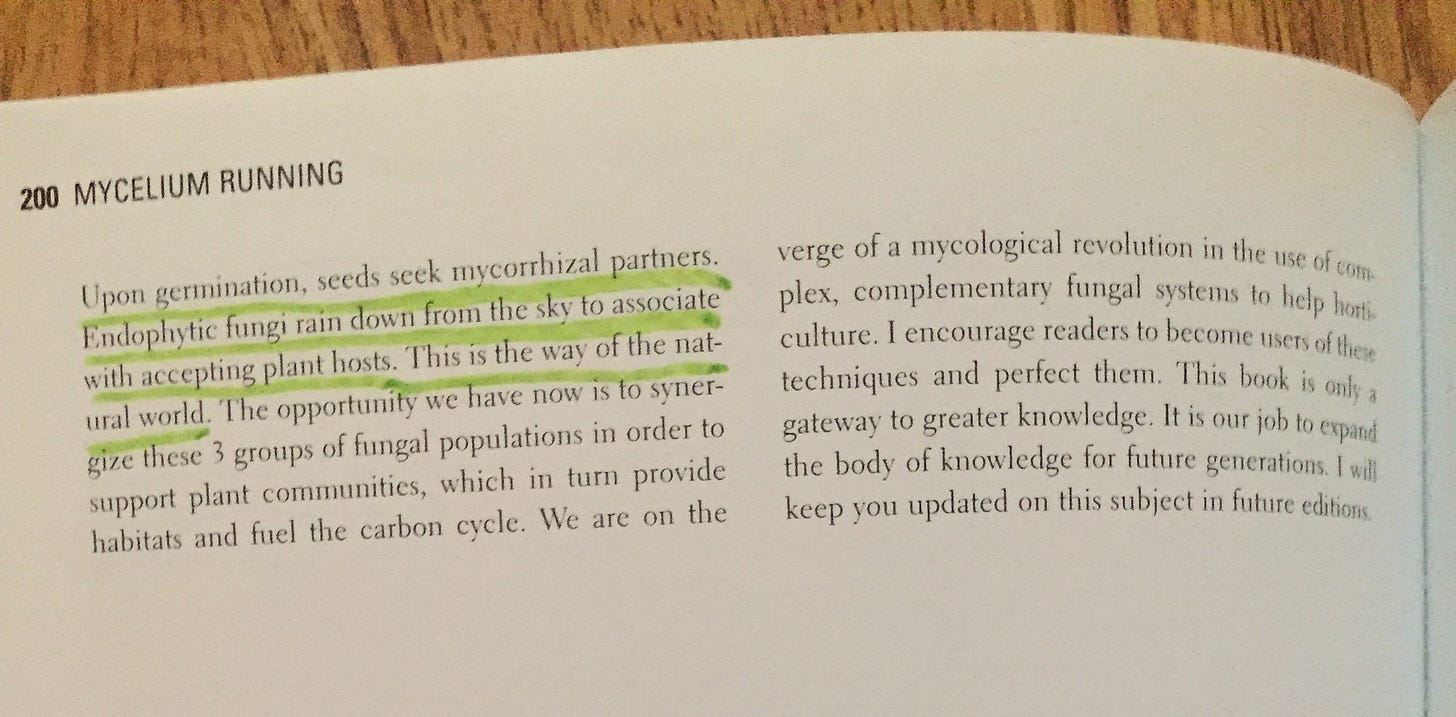
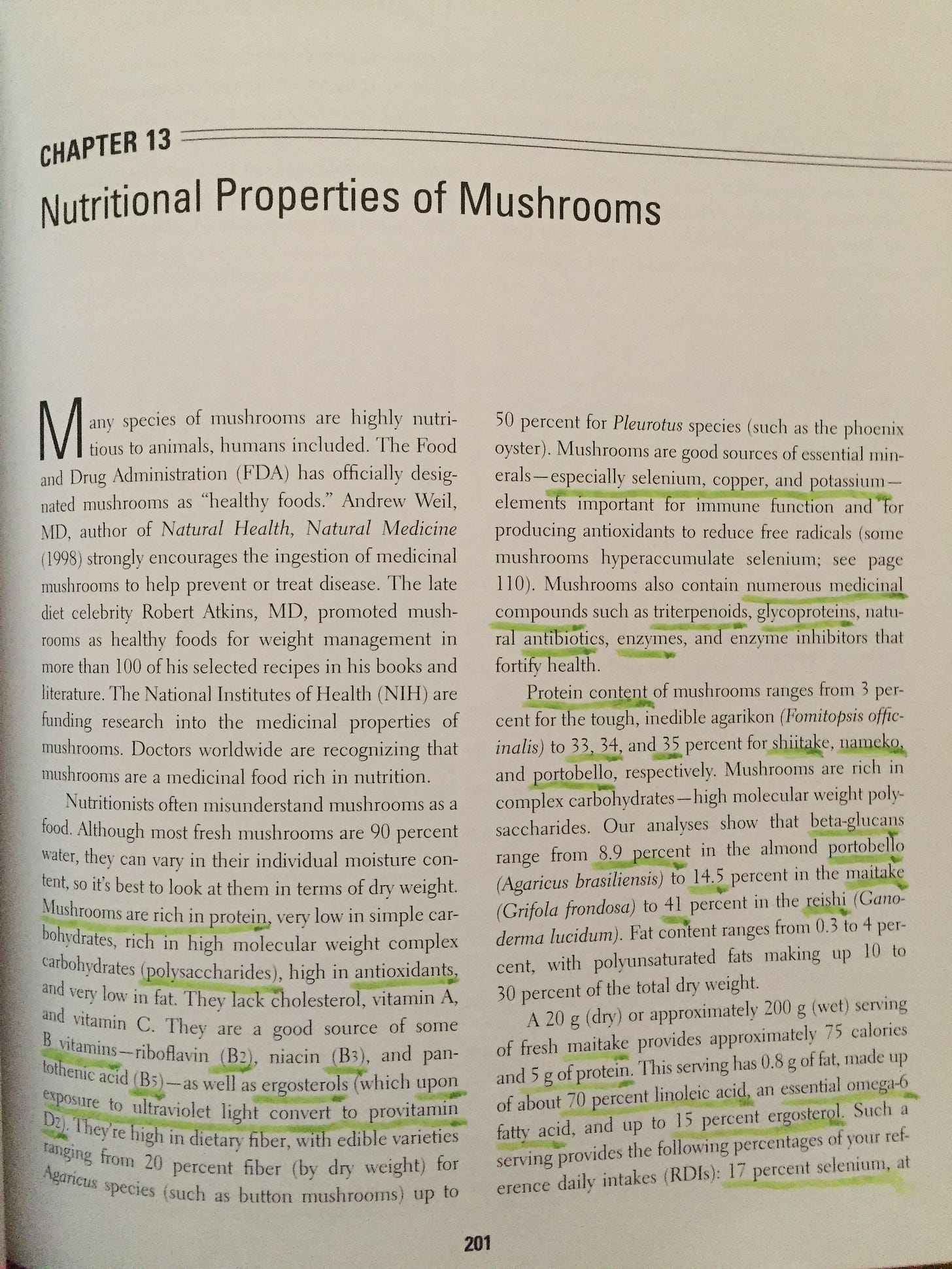
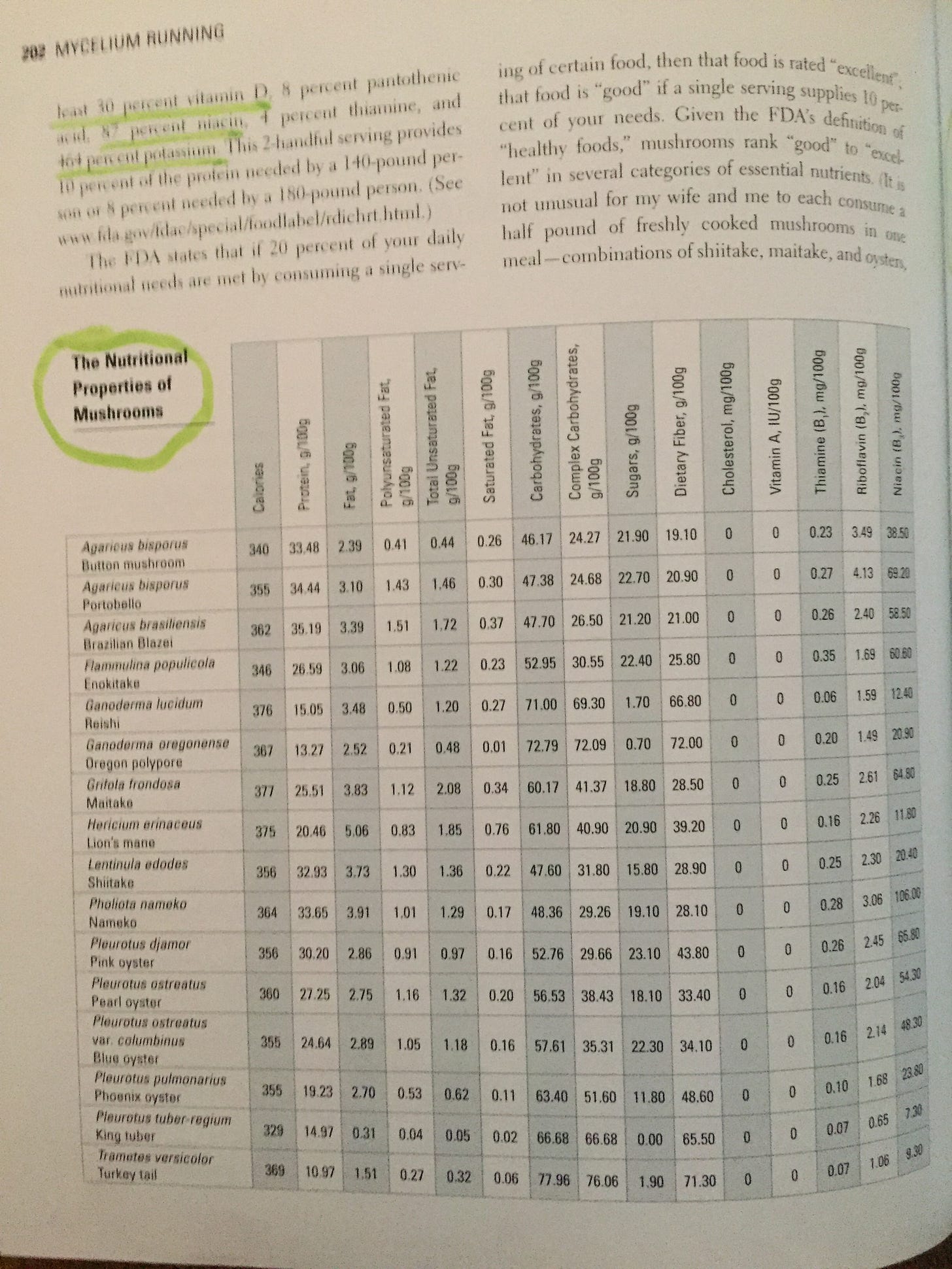
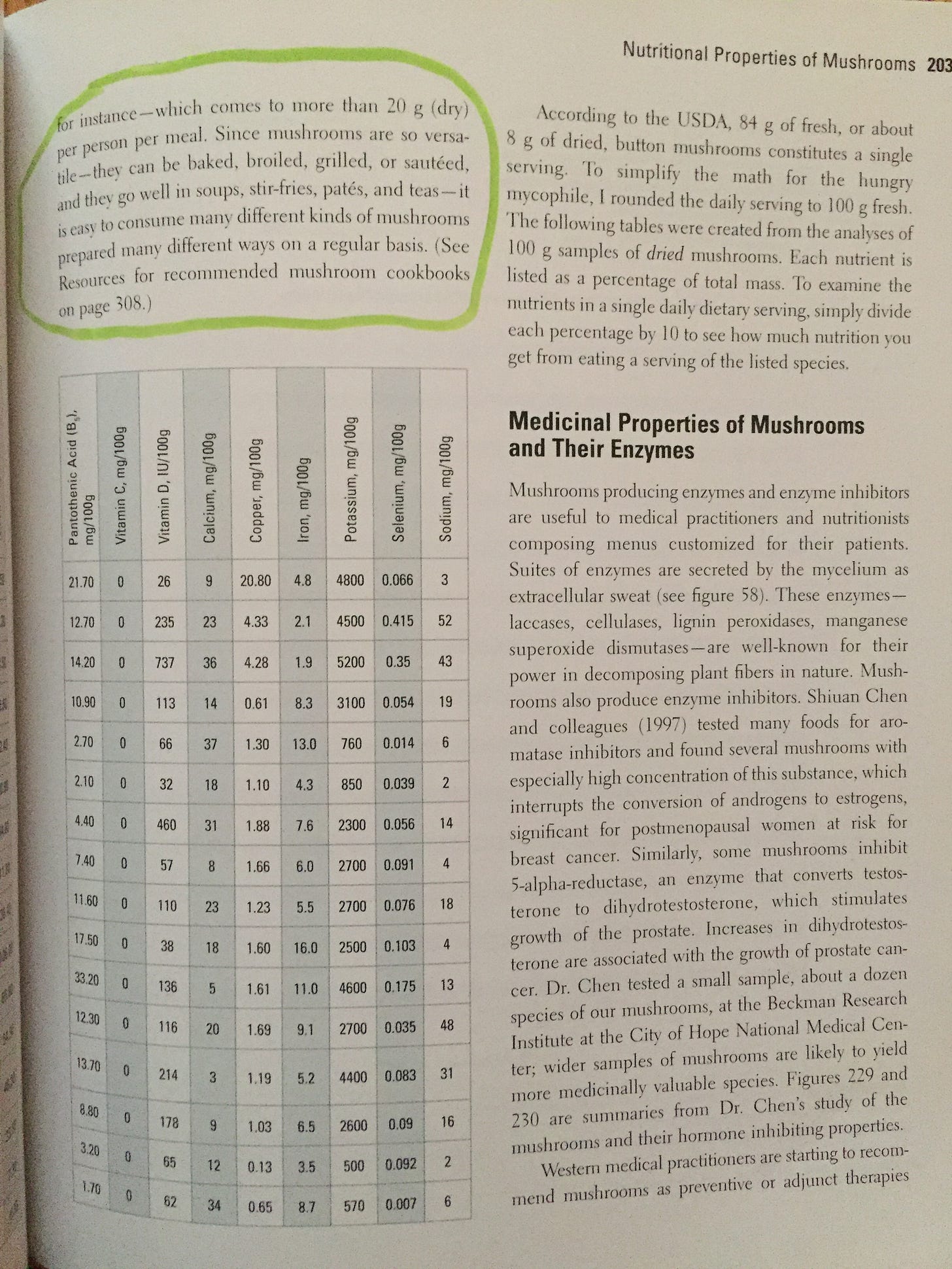

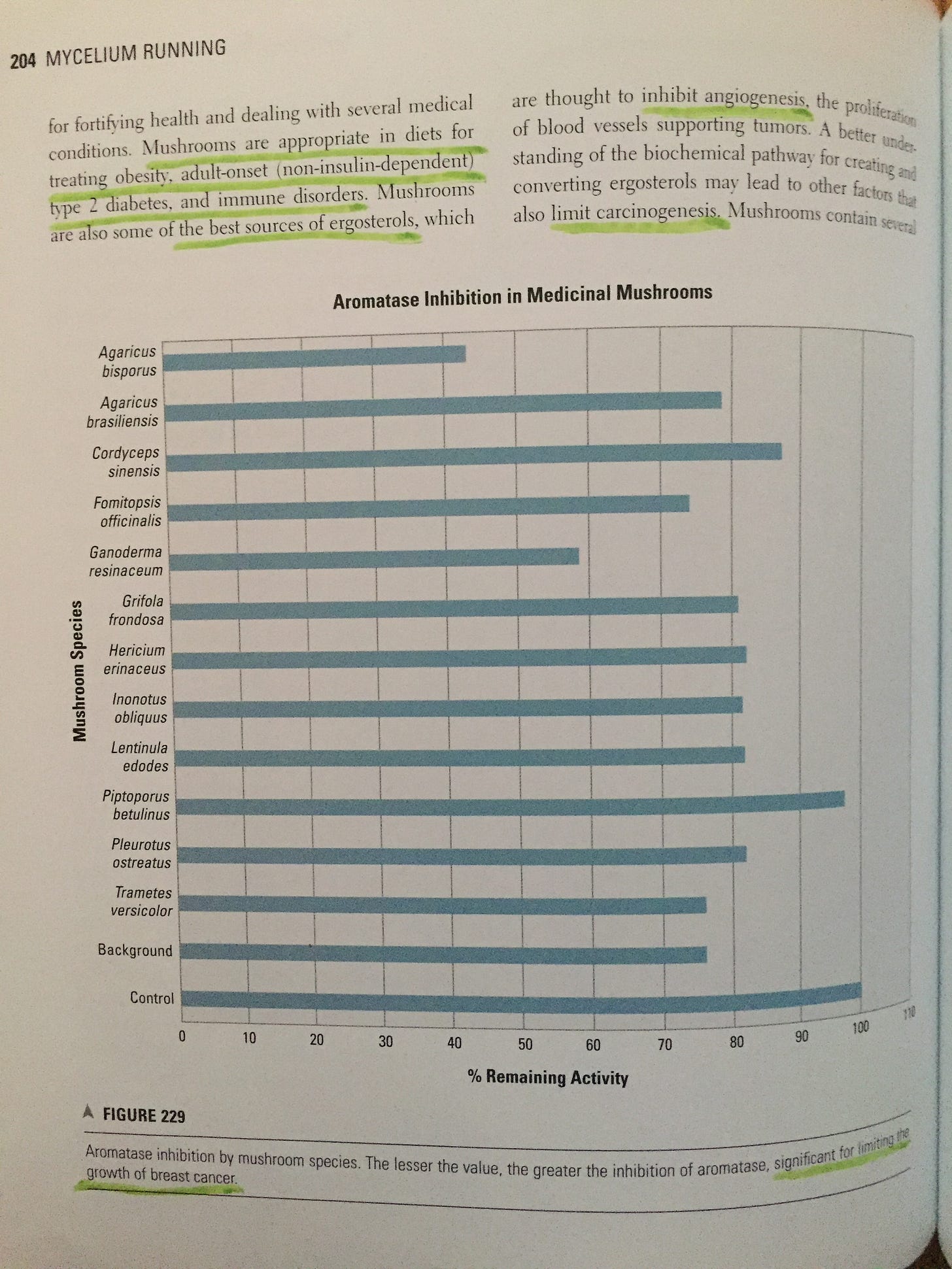
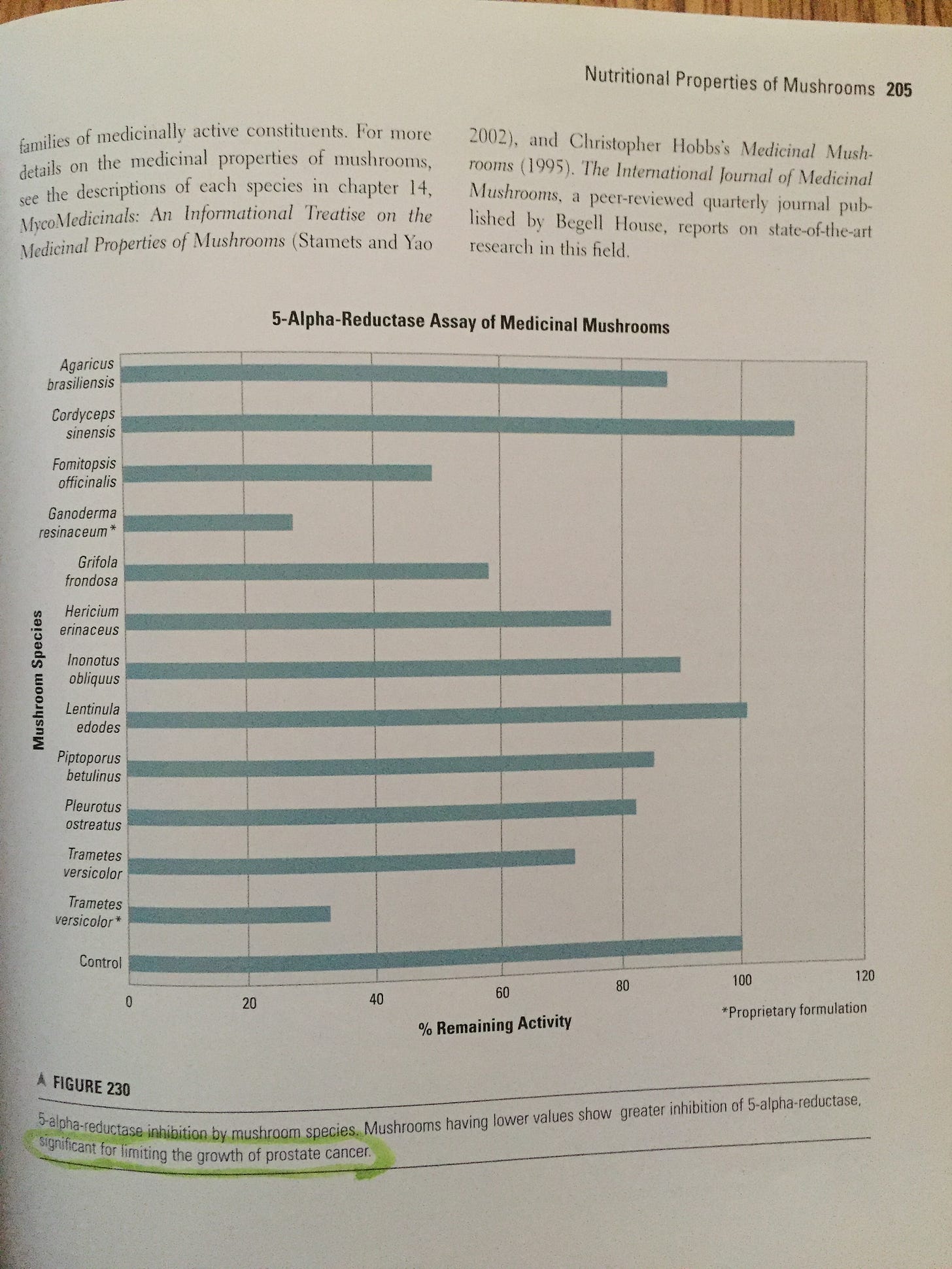


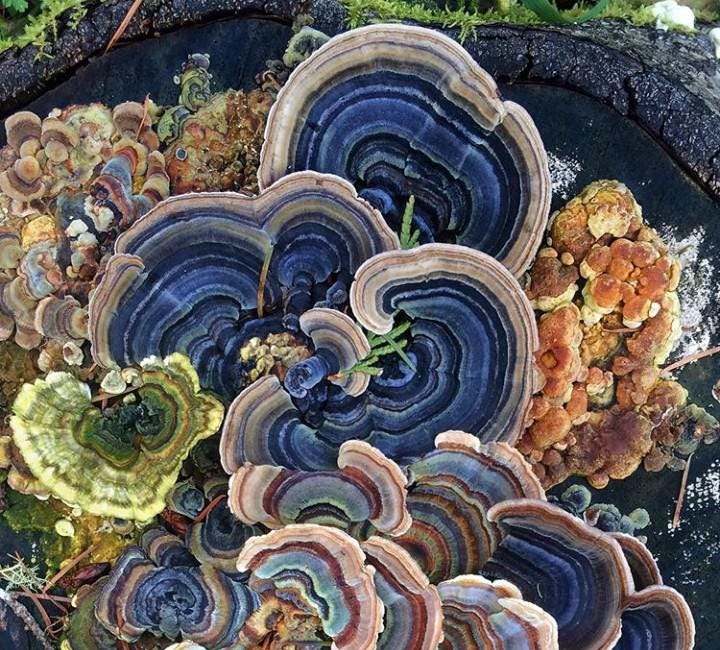












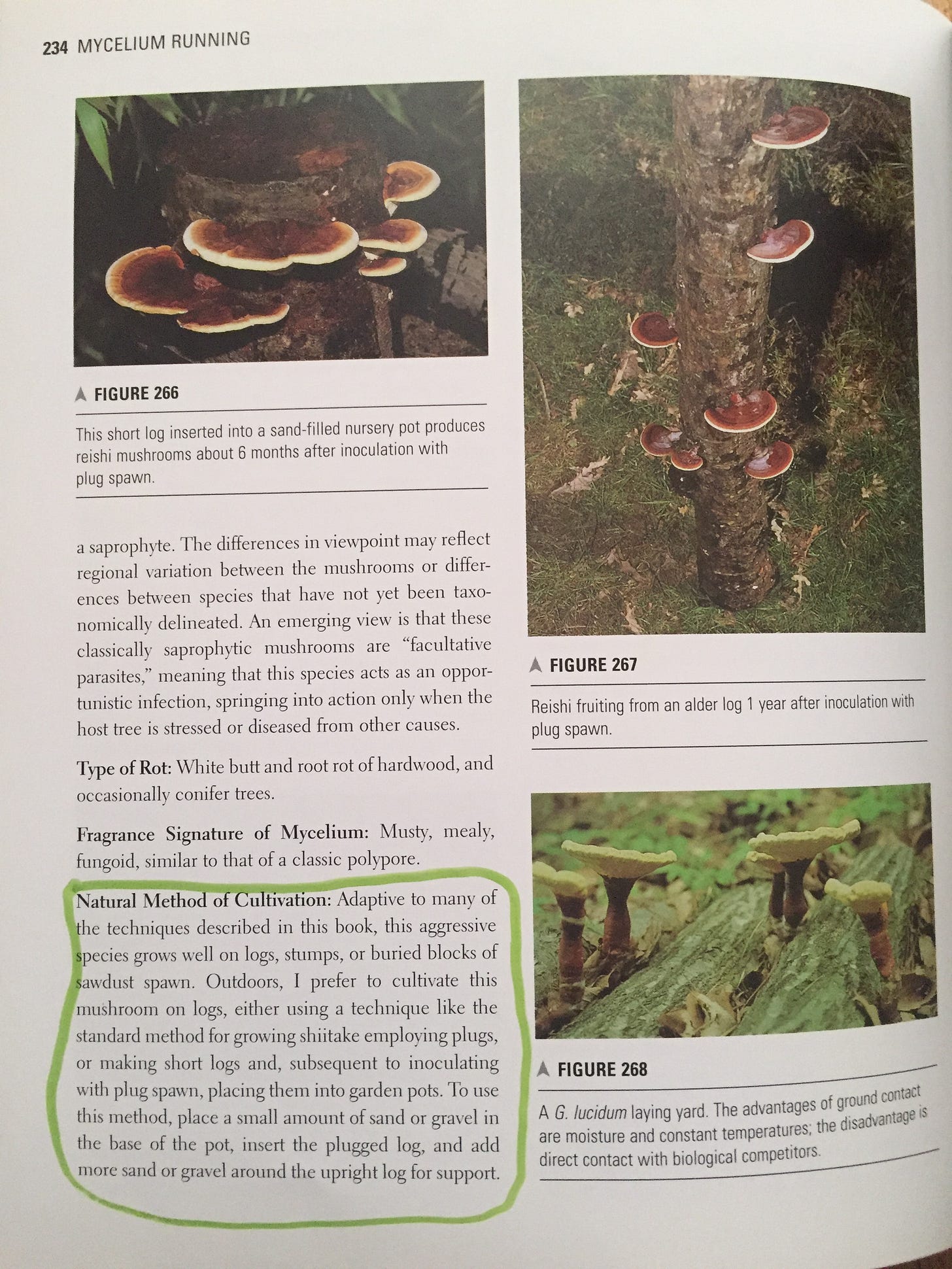


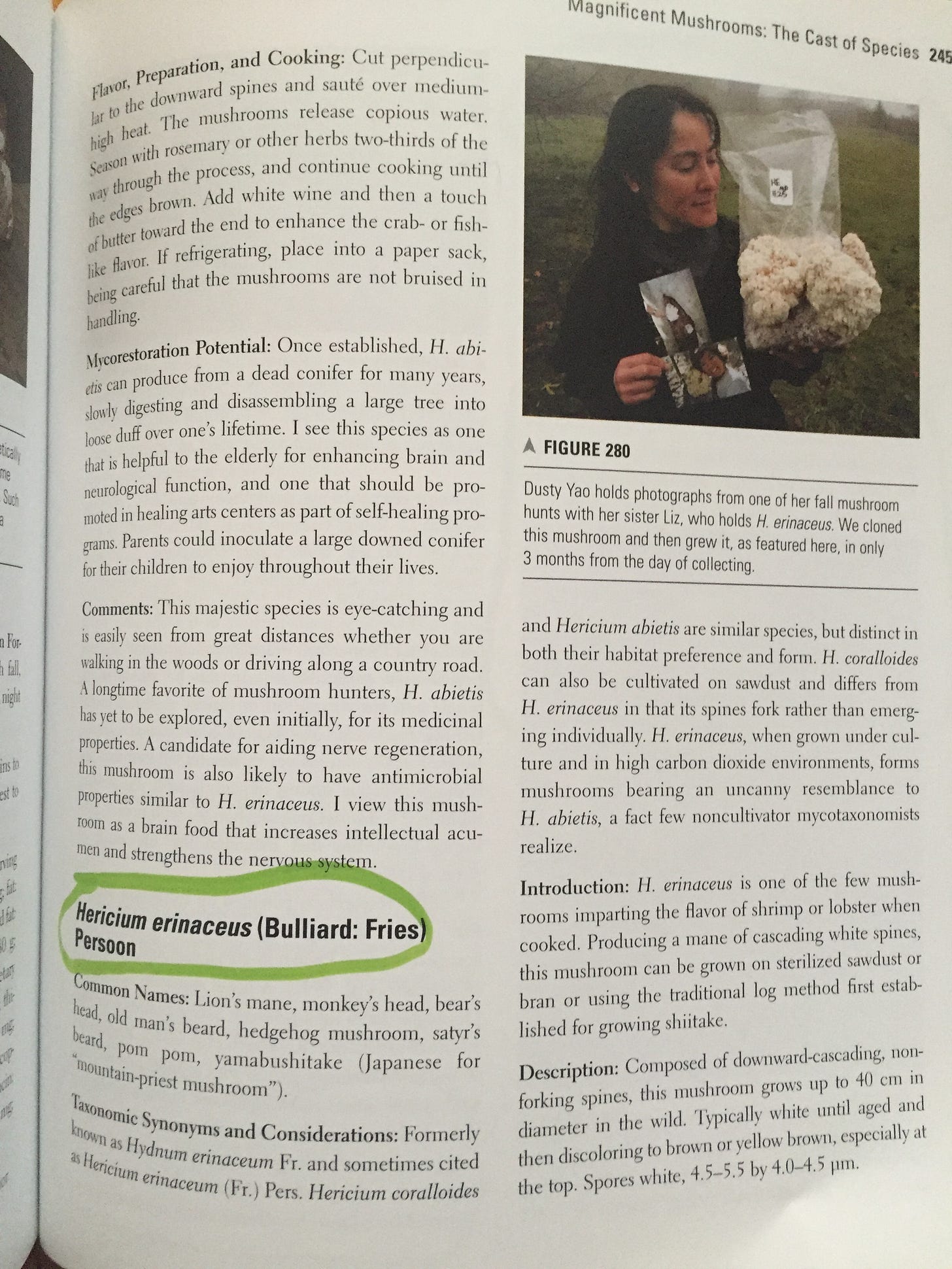

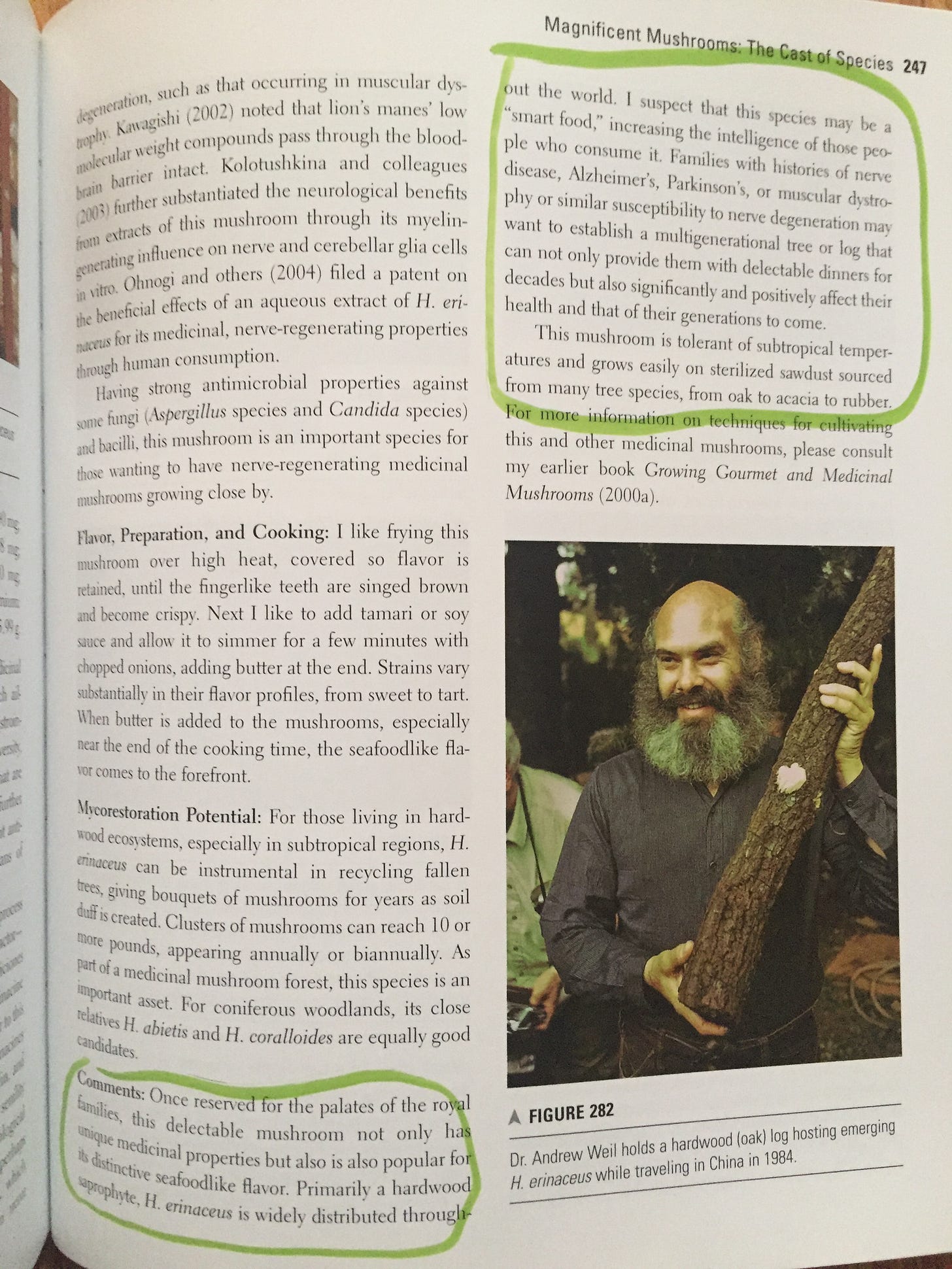


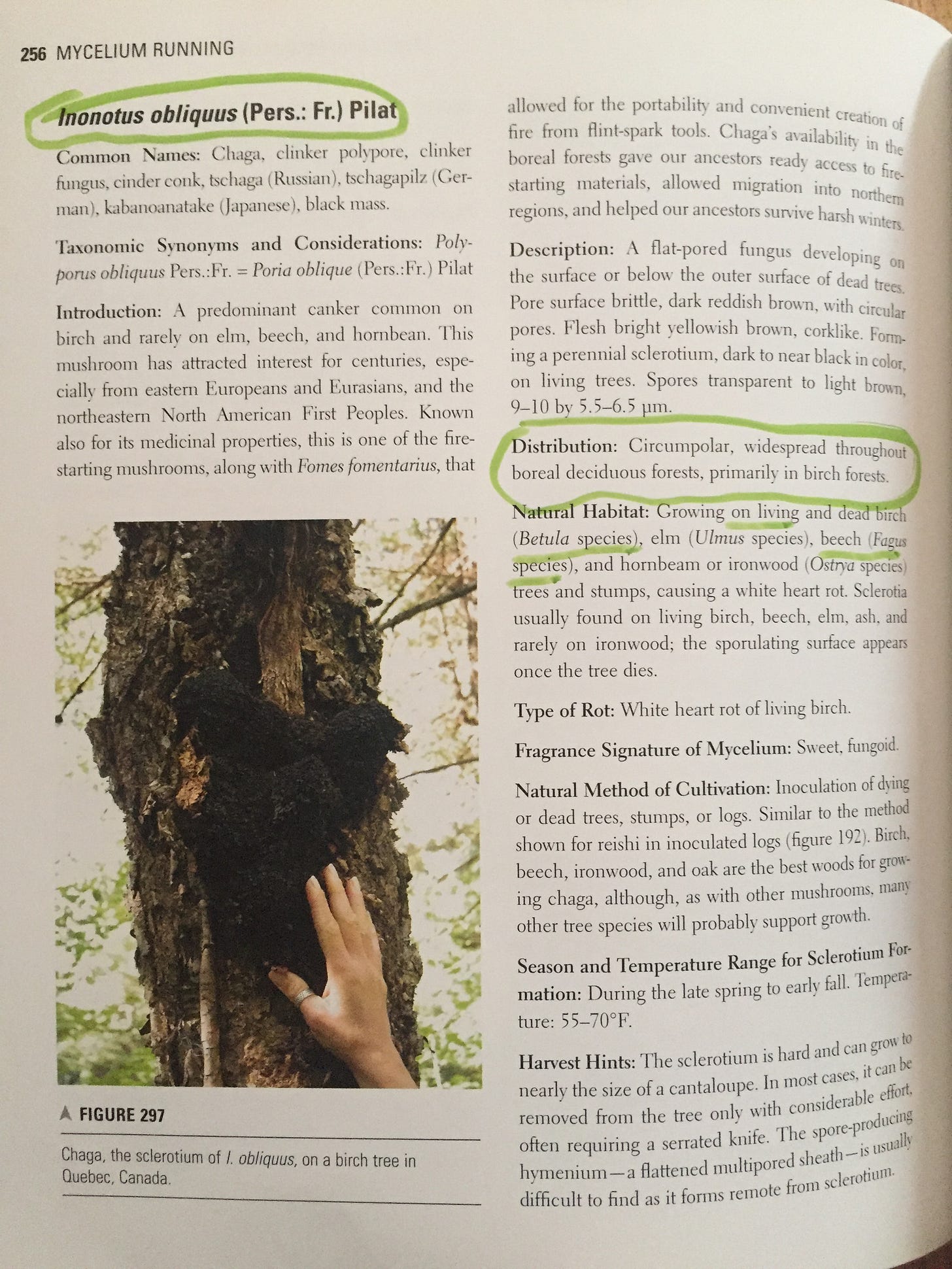

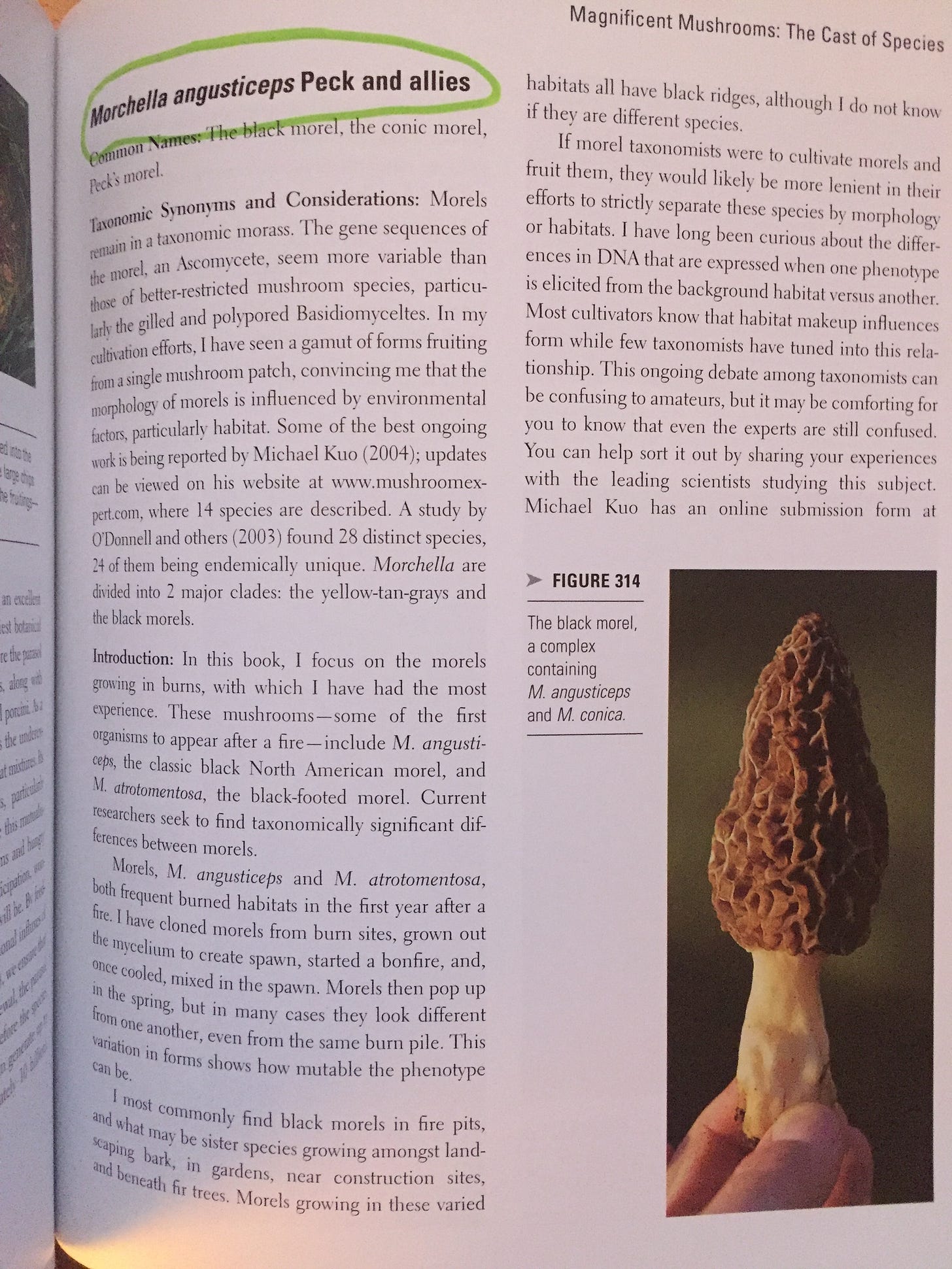


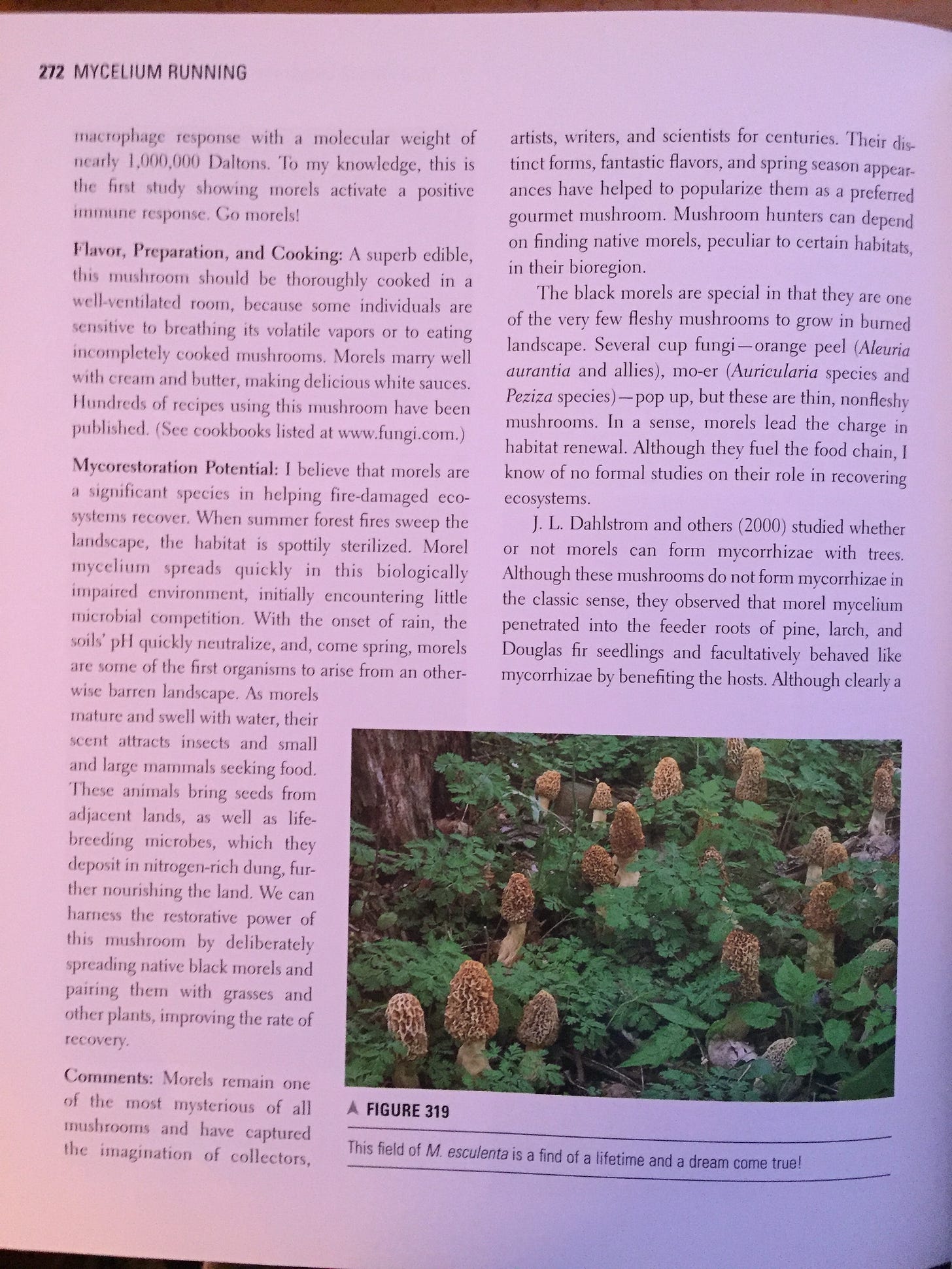
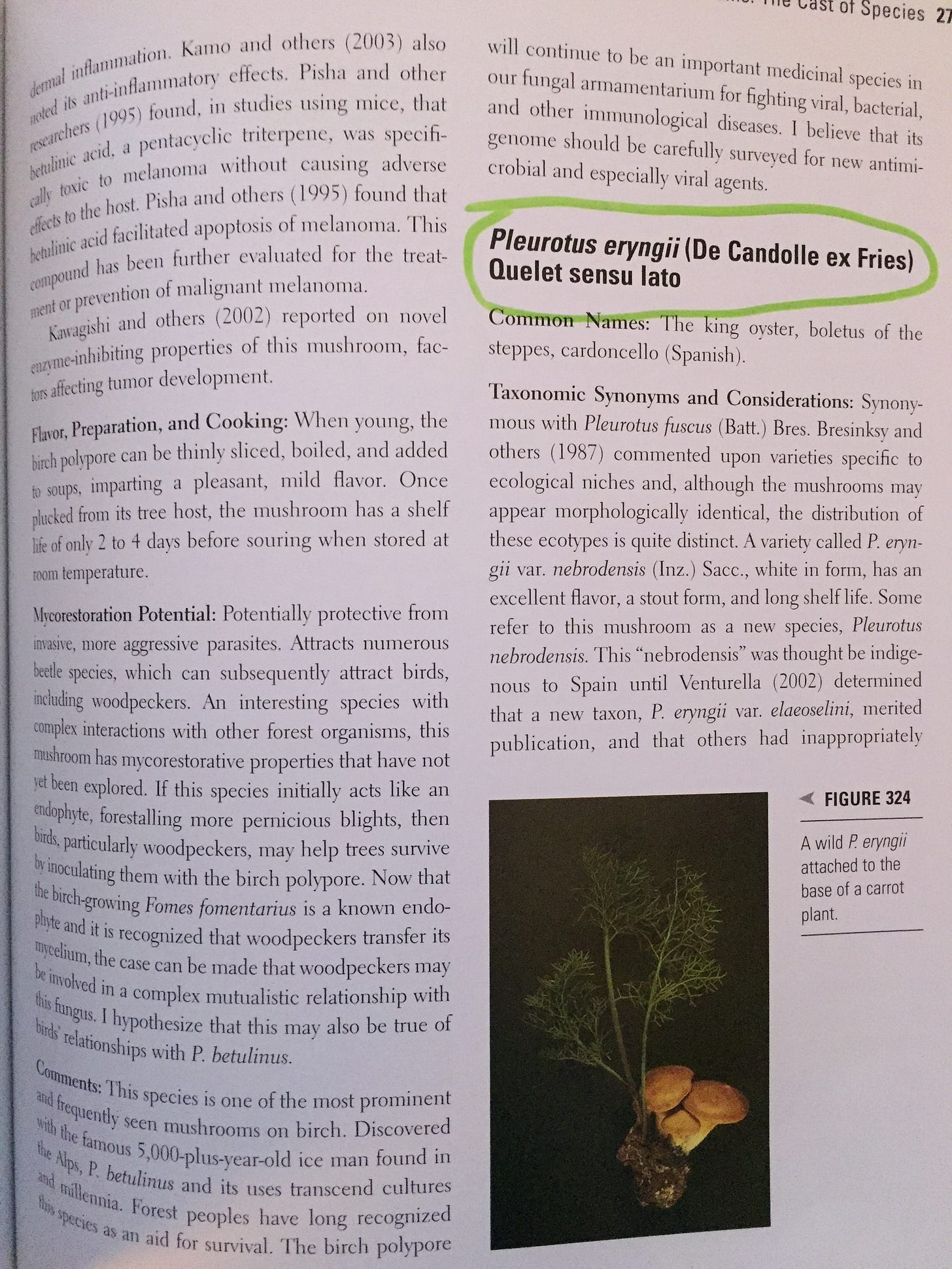

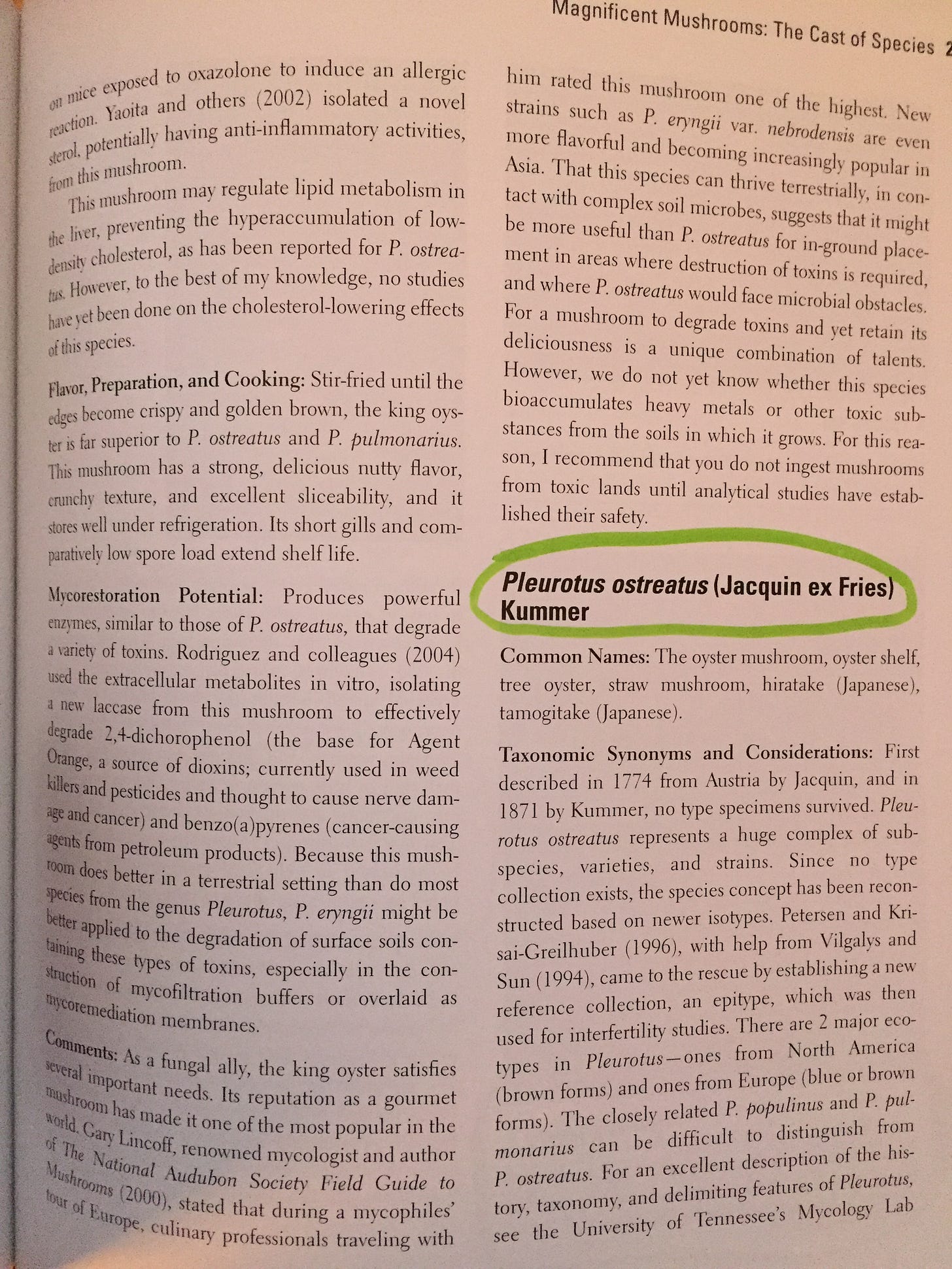
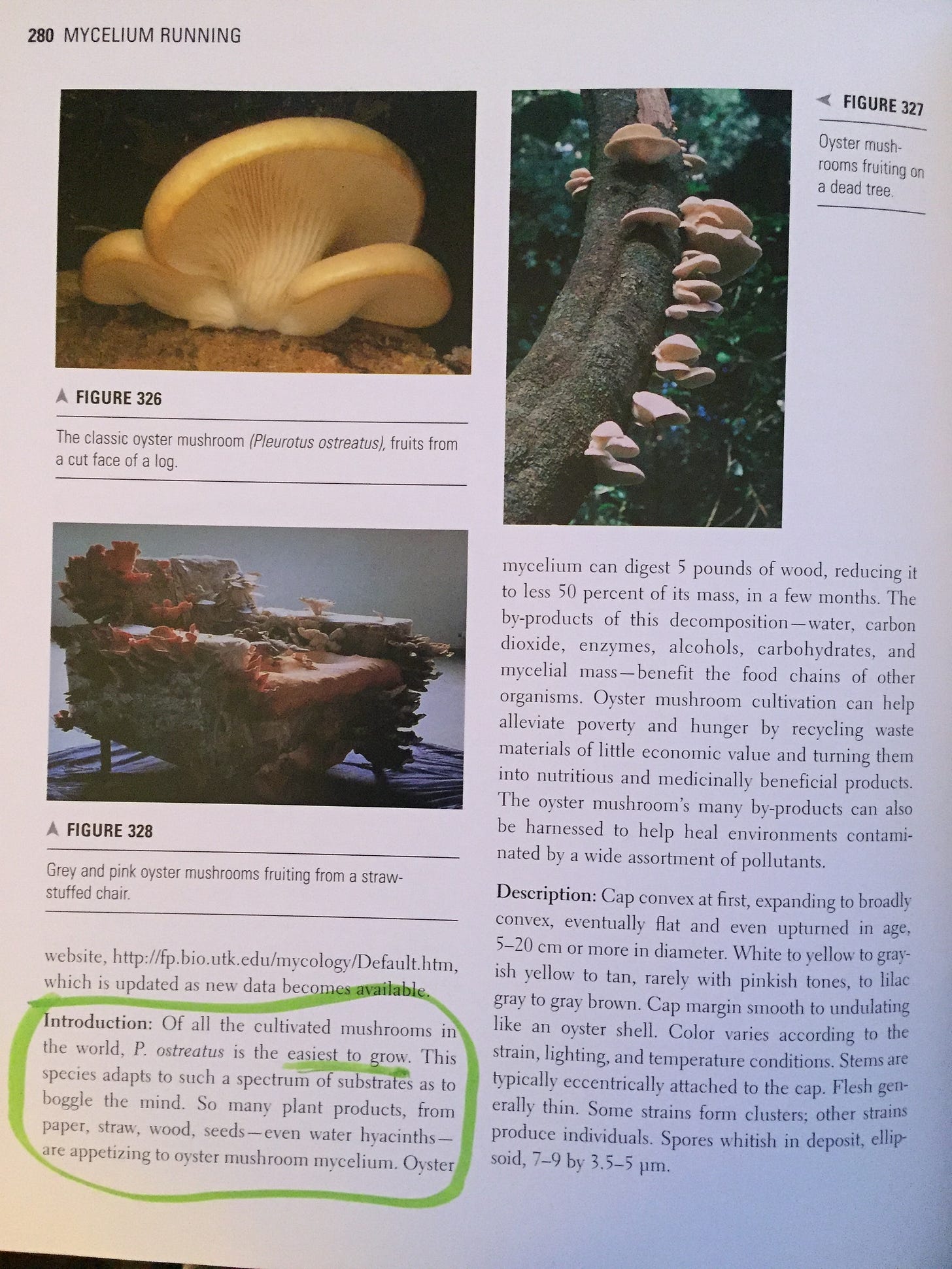



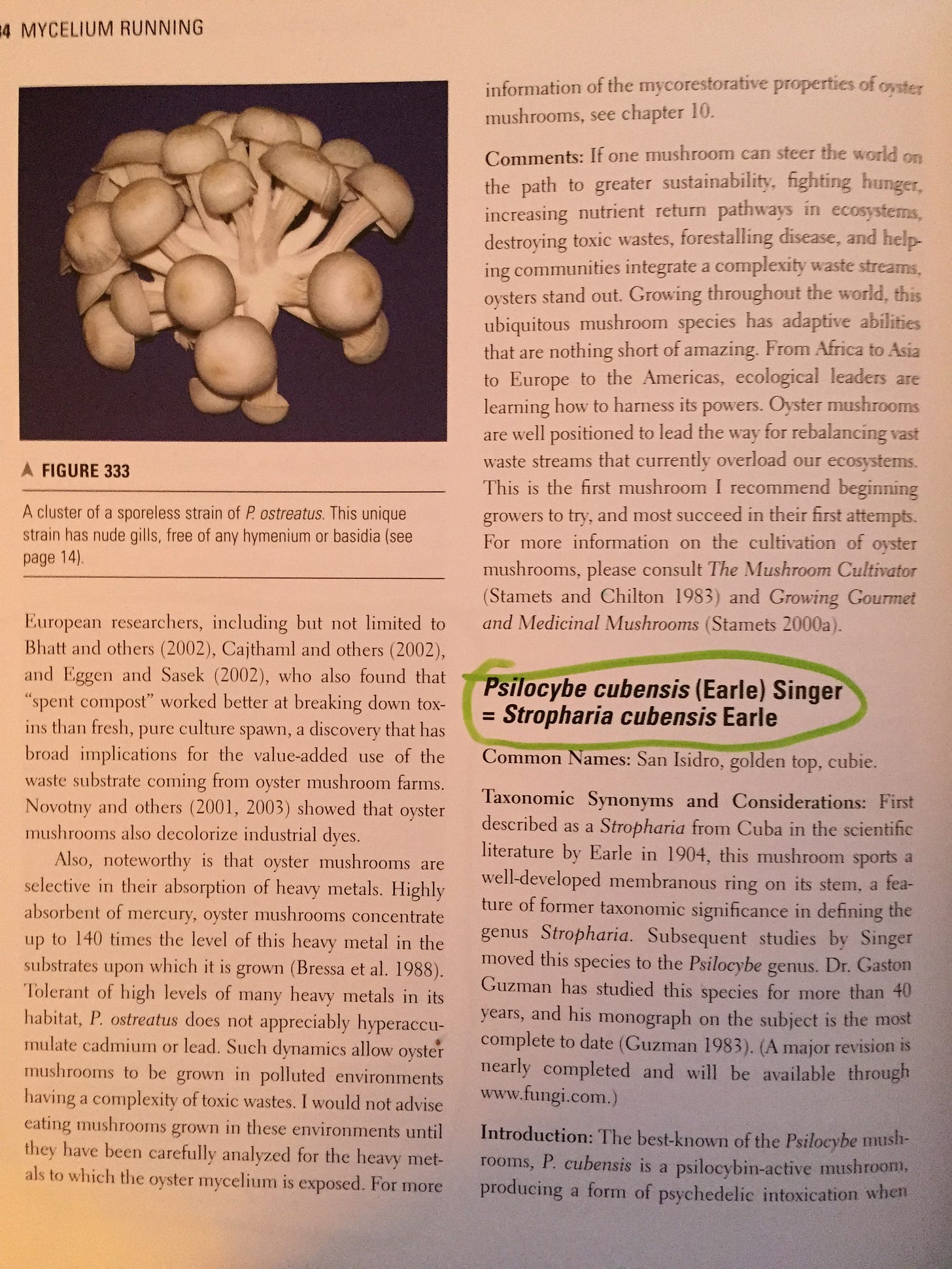
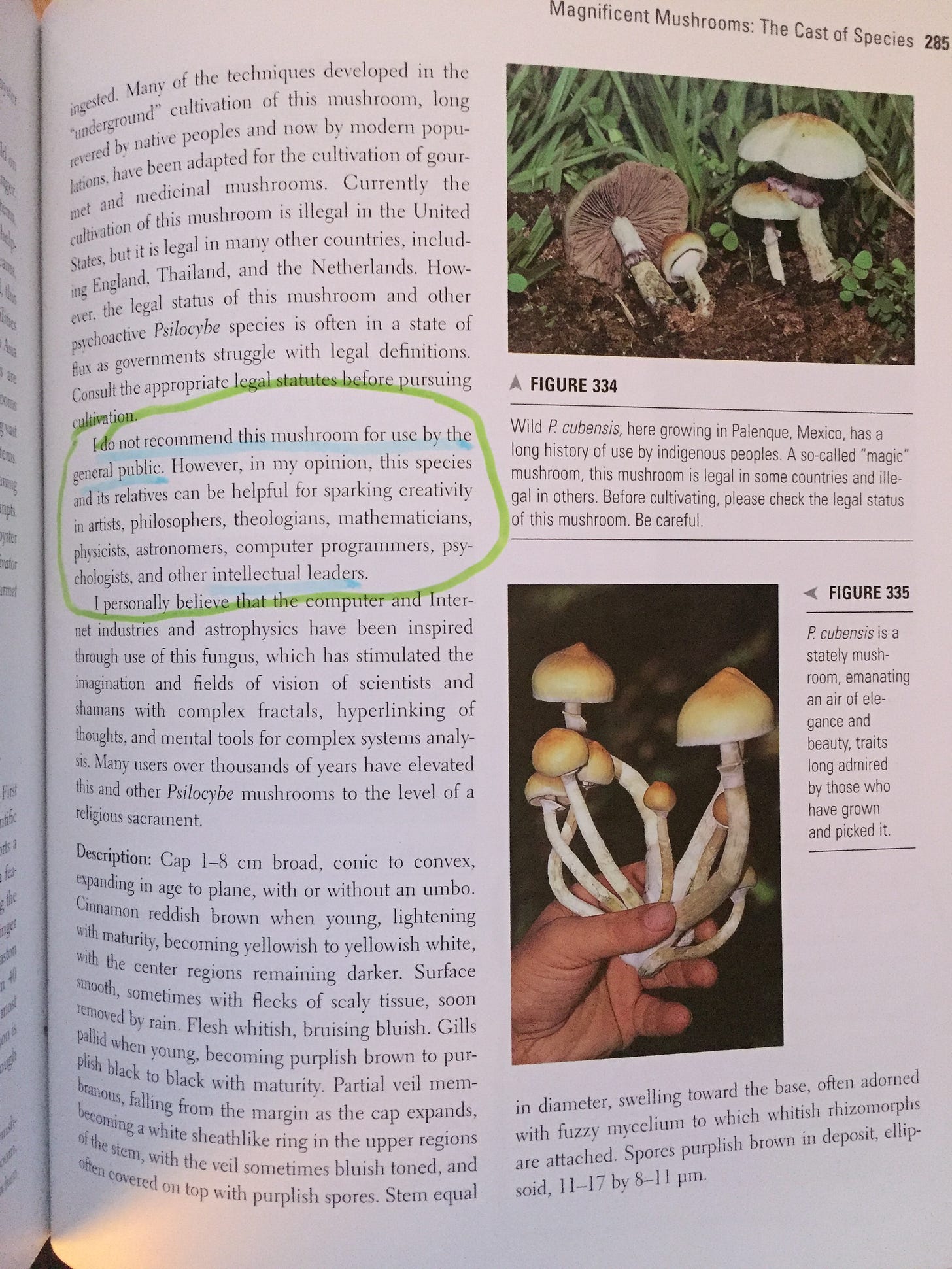



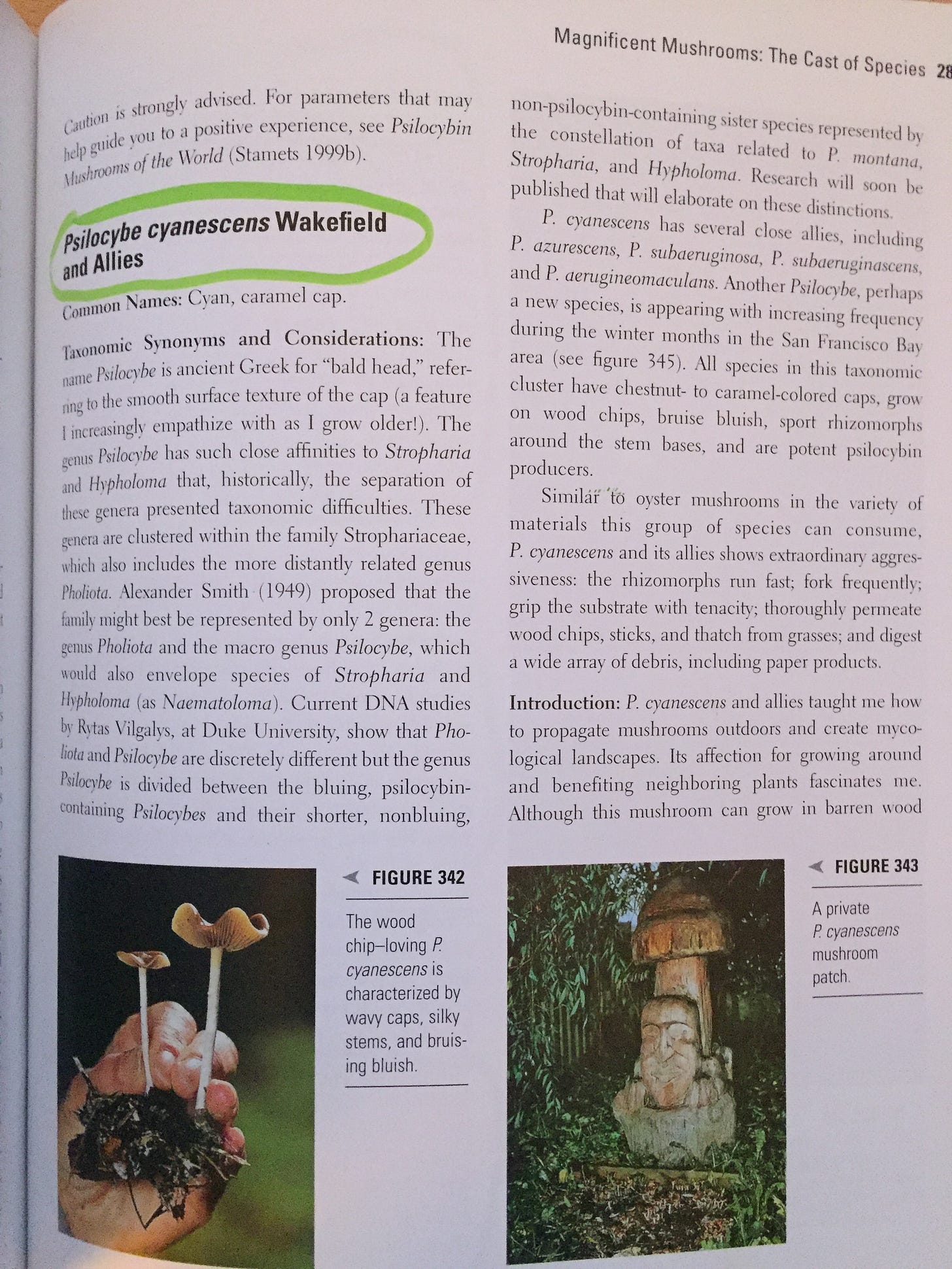

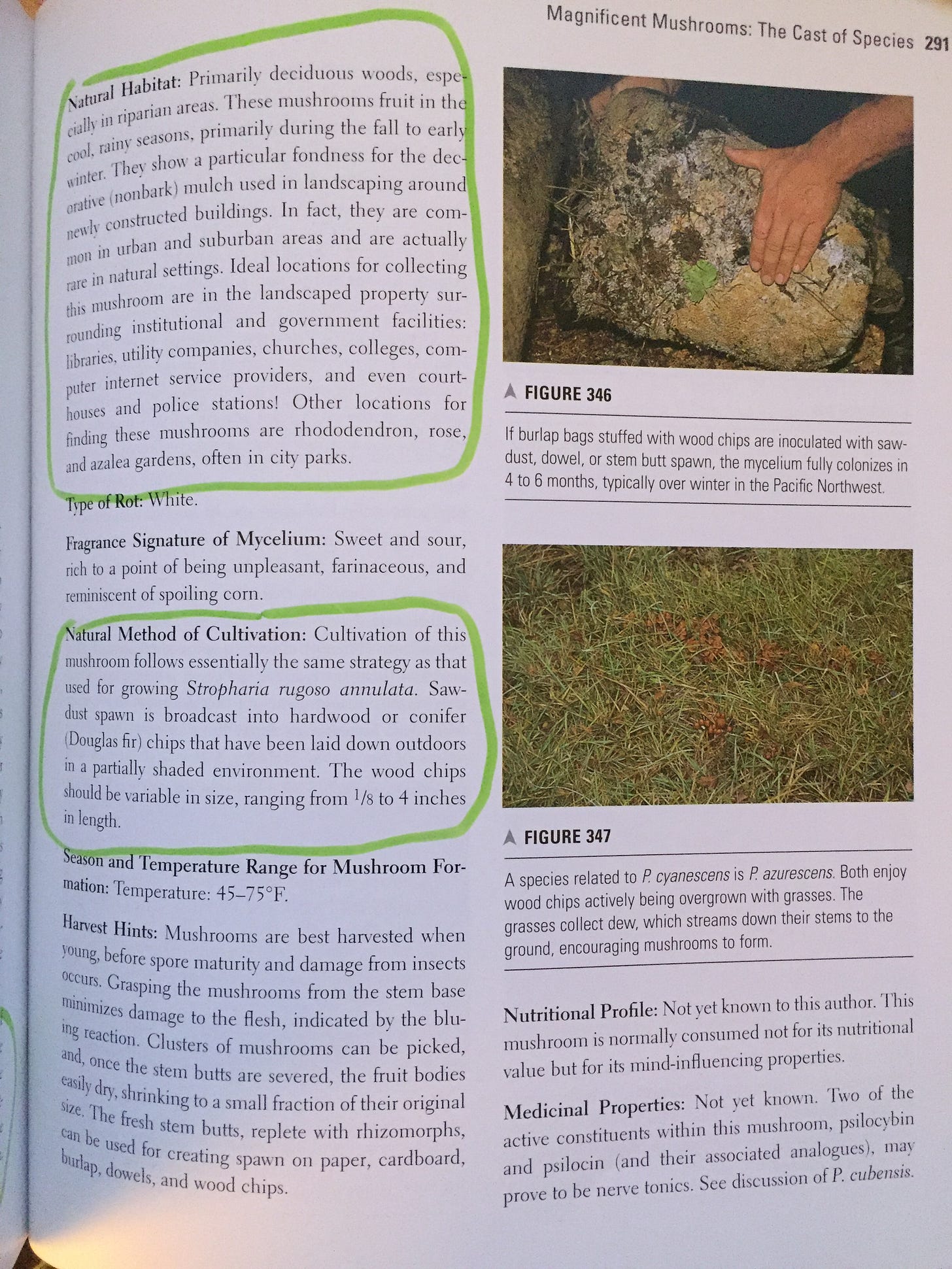



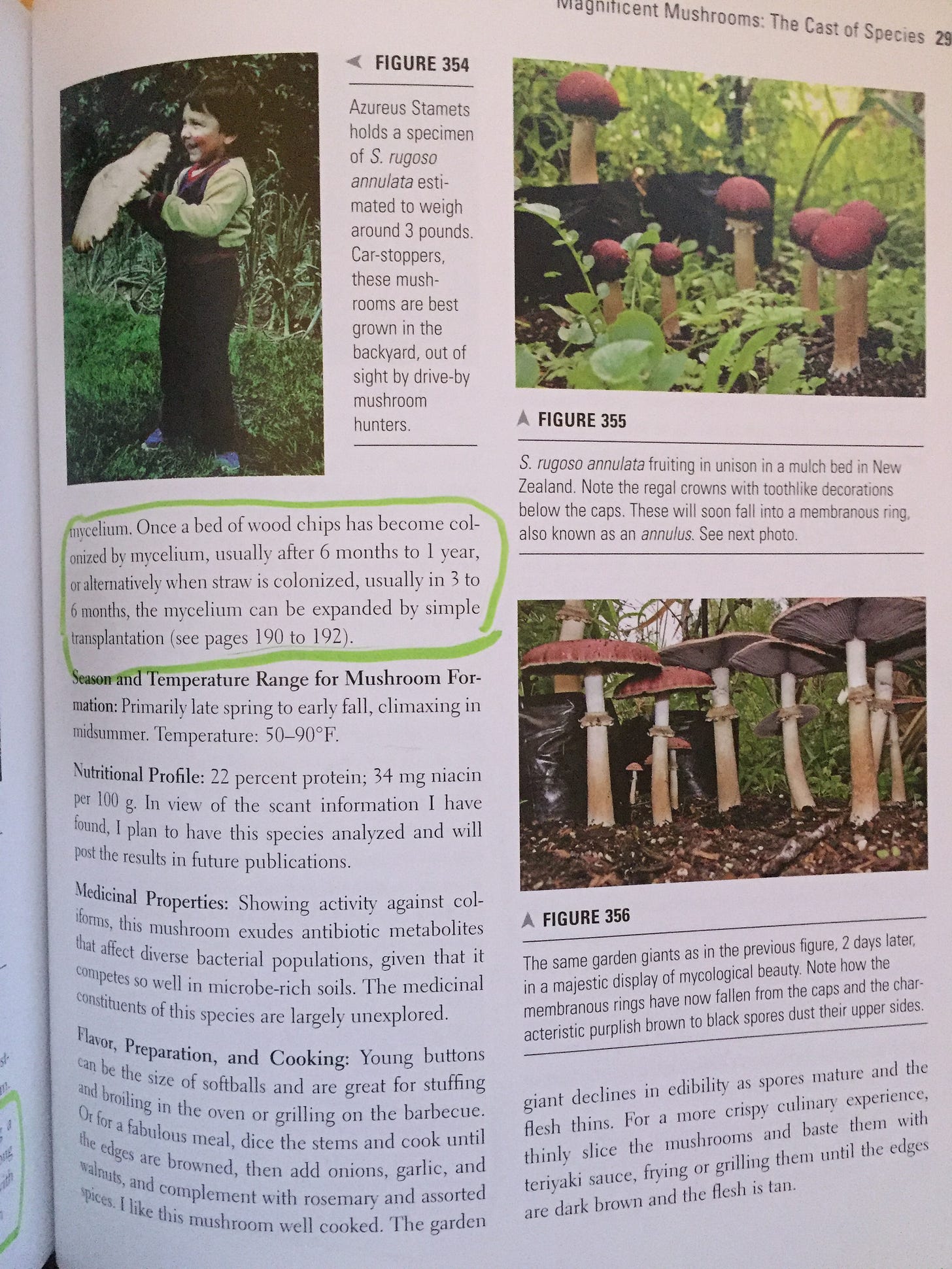

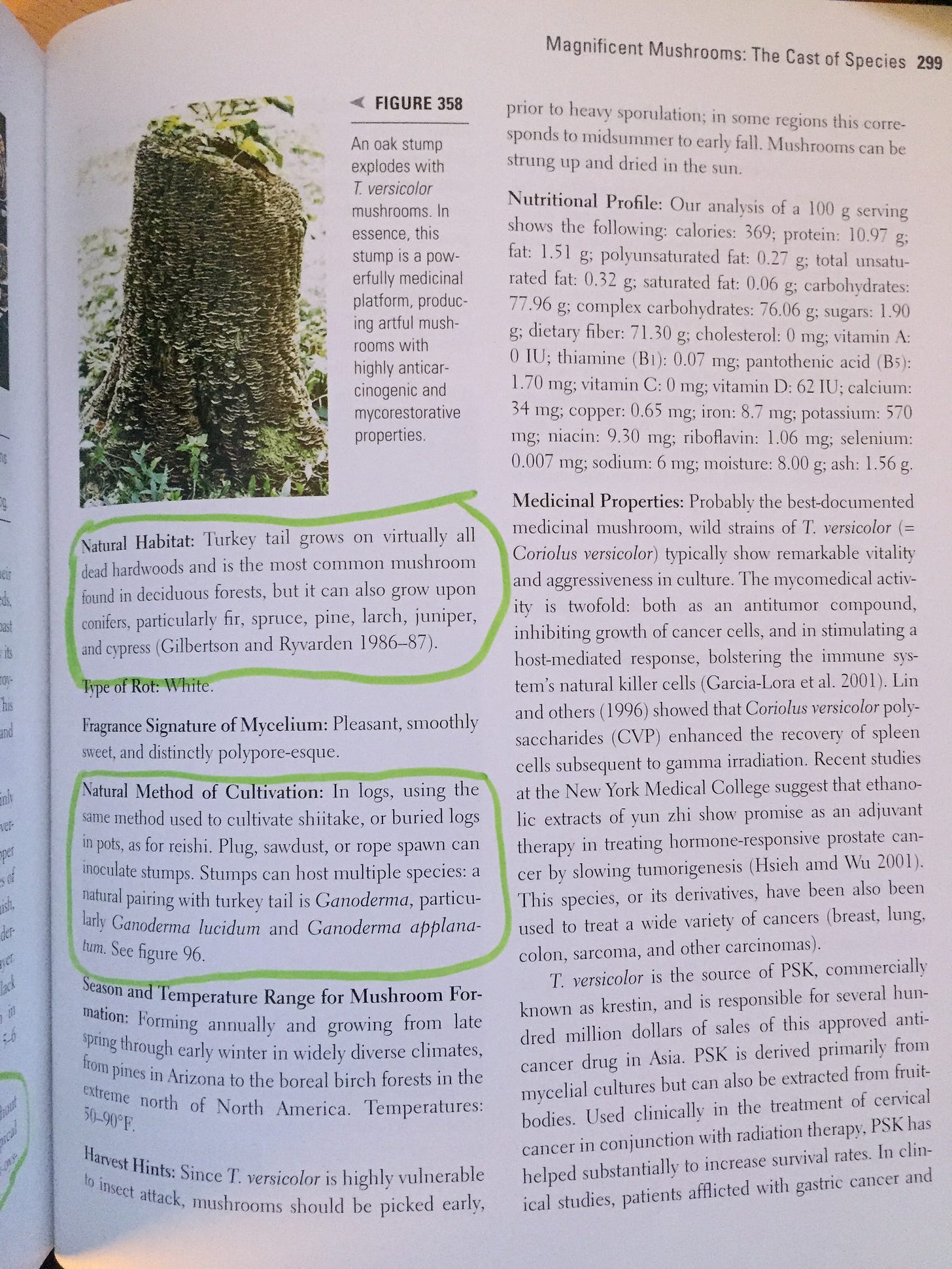


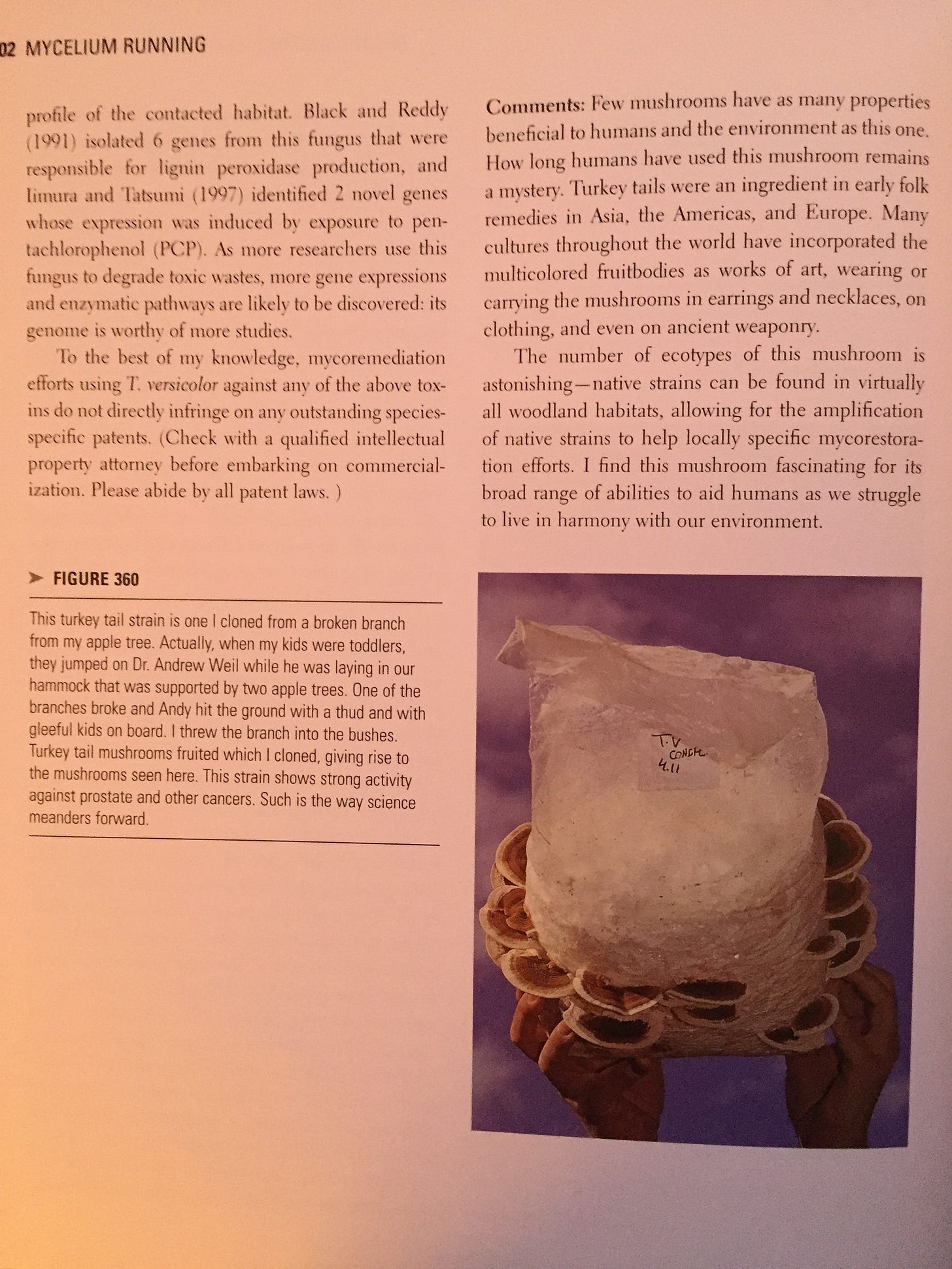
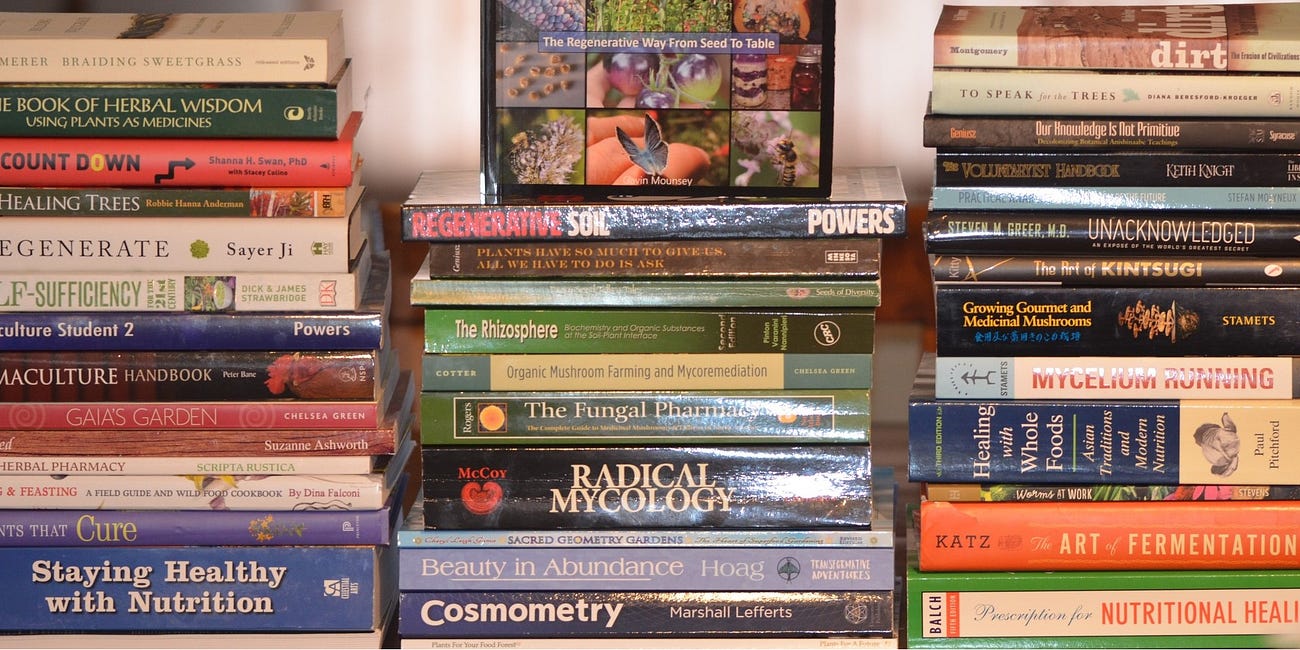
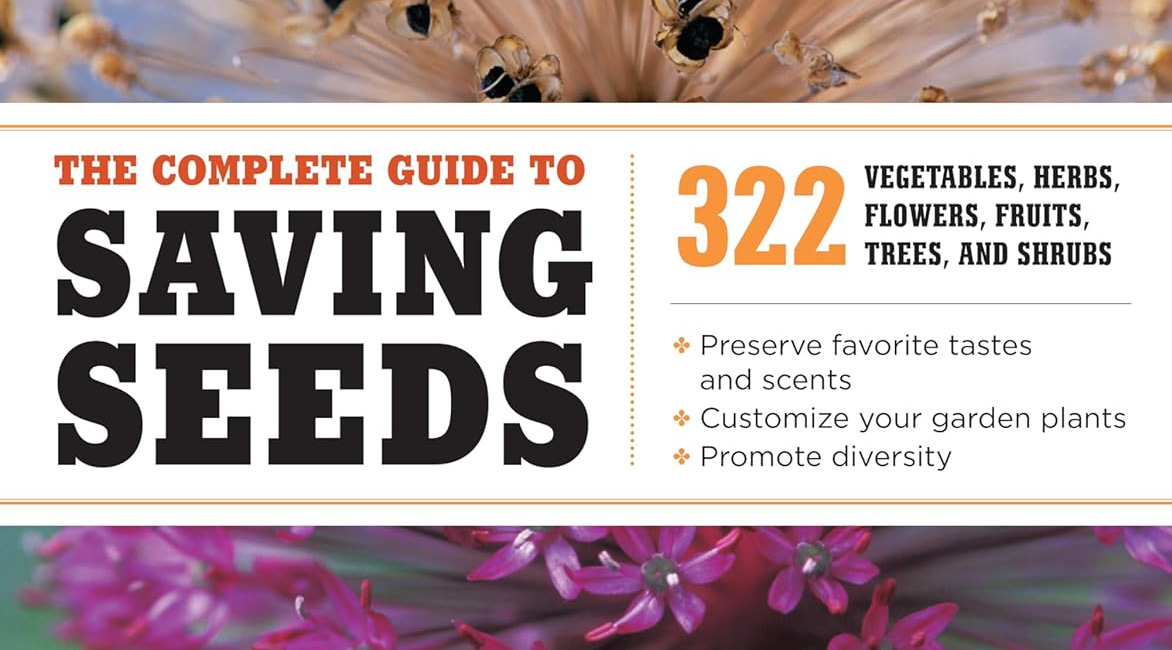
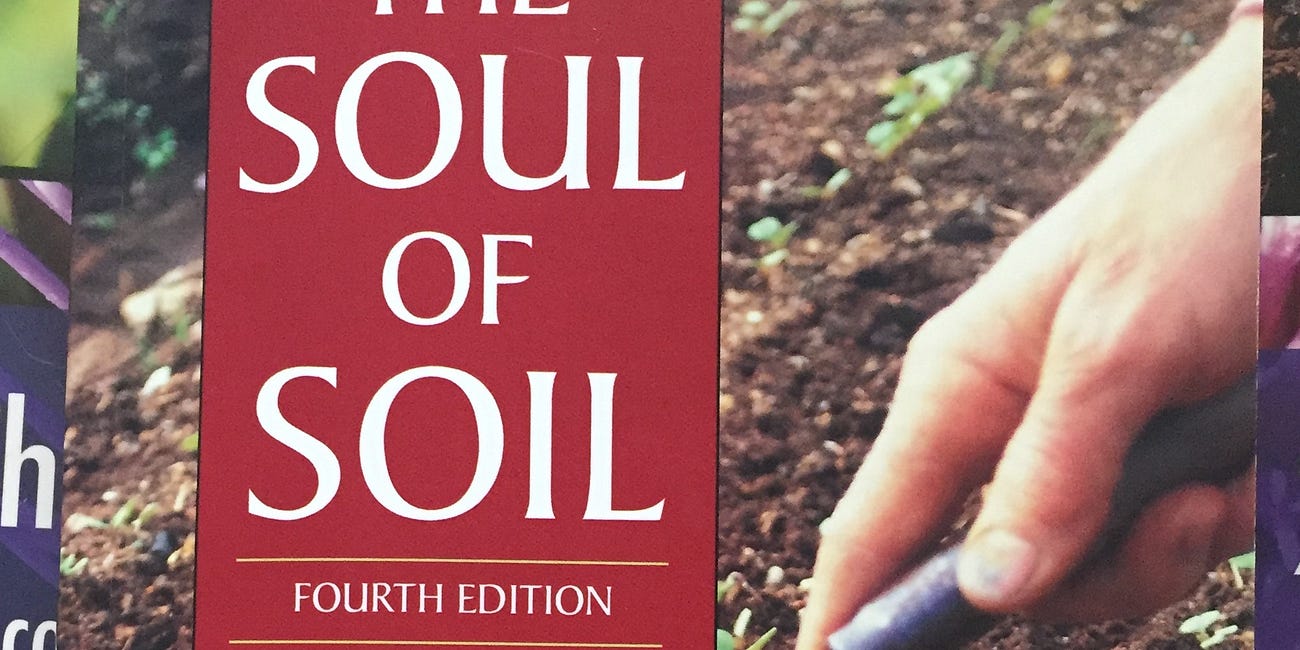
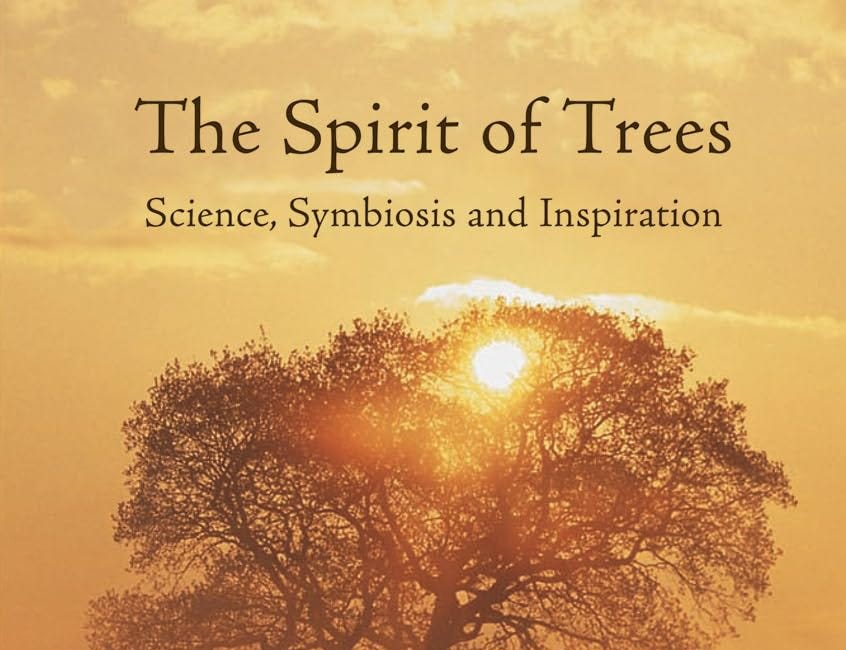
This was so interesting. Thank you. I used to not like mushrooms and I’m pretty sure that was the phobia. Everything from the fairytales showing witches and toadstools, to learning about how they decompose others, kept me from really appreciating them. This even with a dad who was the epitome of Grizzly Adams and taught me the saying ‘there’s a fungus among us’. lol.
Then, I started a personal journey trying to learn about health sovereignty and healing with Nature, Stamets included, and that led me back to what I now know to be the incredible mushroom. Another fantastic creation of Nature.
Appreciate the time it took for you to write this. ❤️
I found oysters yesterday on a log in West Virginia. I forage constantly. Have found Amanita, chanterelle, “cauliflower” mushrooms, turkey tail, Maitake, morels, reishi, lions mane and (I know they aren’t mushrooms) ghost pipe. I really loved your article and appreciate the time you took to write it. I’m going to buy that book or at least check it out out of the library. I’m with you on big Pharma, but nobody’s perfect, not even this author.